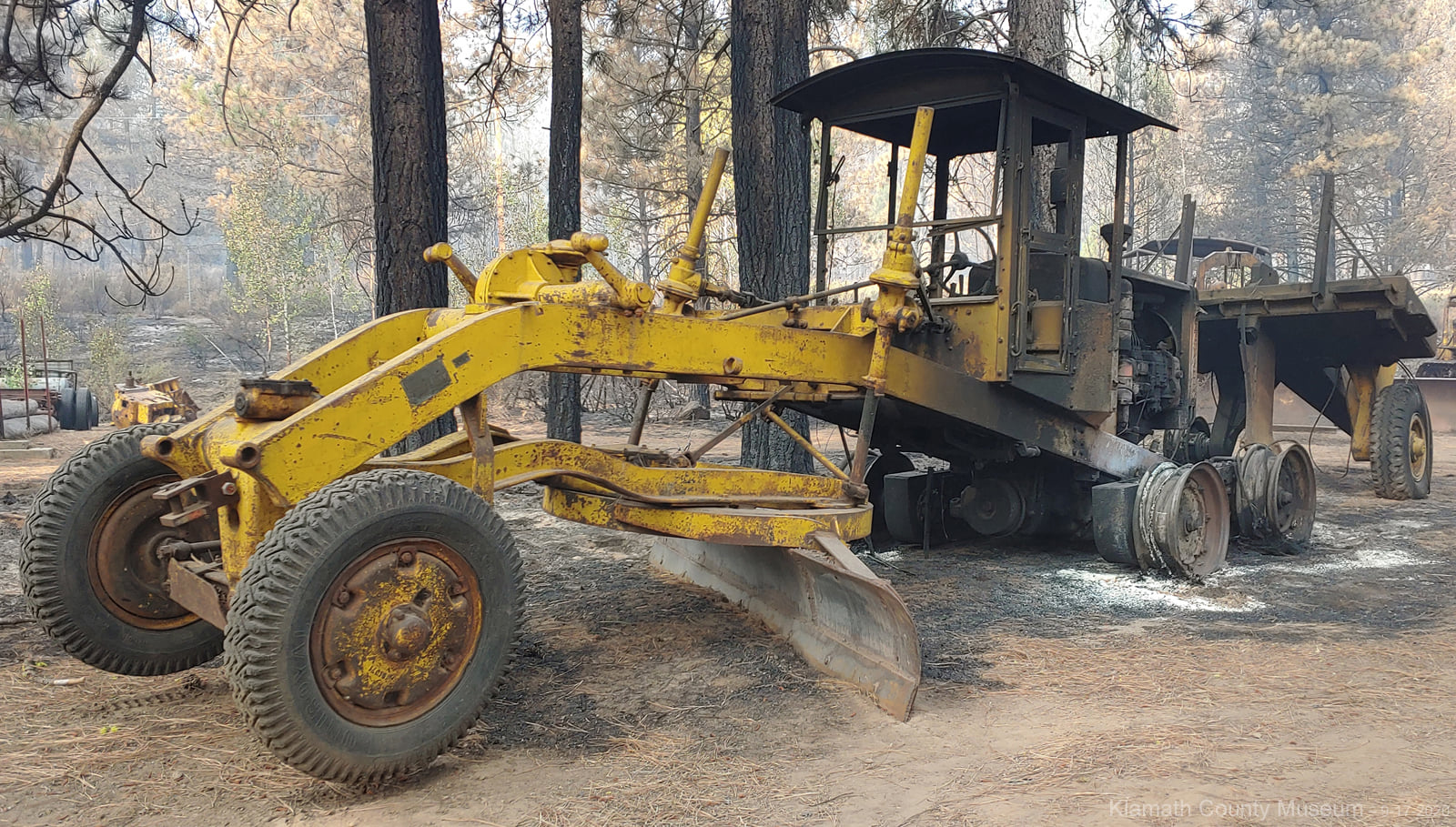My most current blog entry:
Entries from February 1, 2022 - February 28, 2022
USA Road Trip: The Wild West - Pipe Springs and Cove Fort
 Thursday, February 24, 2022 at 6:50PM
Thursday, February 24, 2022 at 6:50PM PIPE SPRINGS, ARIZONA
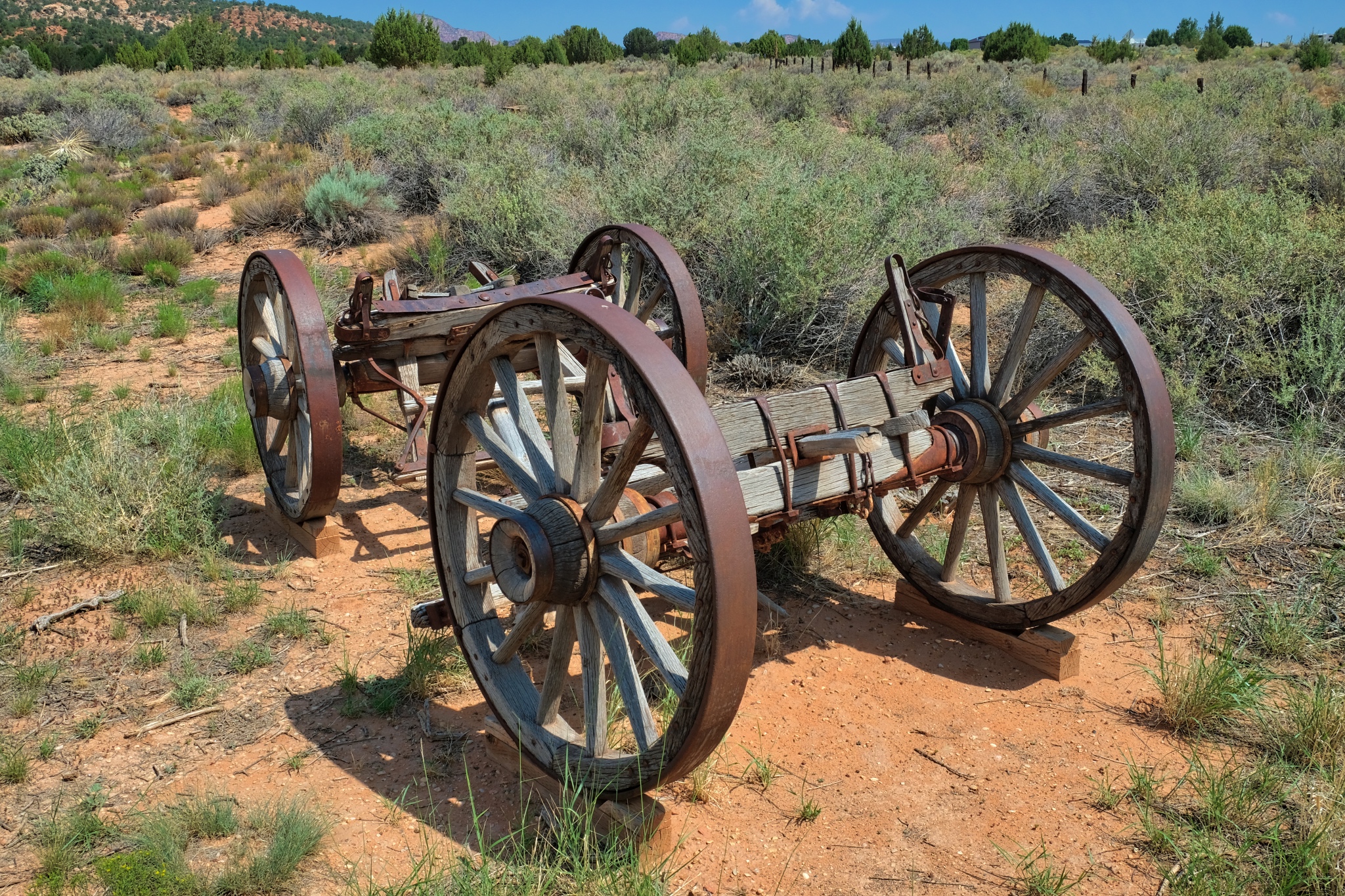 Out on the dry, high elevation chaparral of Northern Arizona, along the road between Zion National Park and the North Rim of the Grand Canyon . . . a remnant of a bygone era . . . The Wild West . . . Pipe Springs National Monument.
Out on the dry, high elevation chaparral of Northern Arizona, along the road between Zion National Park and the North Rim of the Grand Canyon . . . a remnant of a bygone era . . . The Wild West . . . Pipe Springs National Monument.
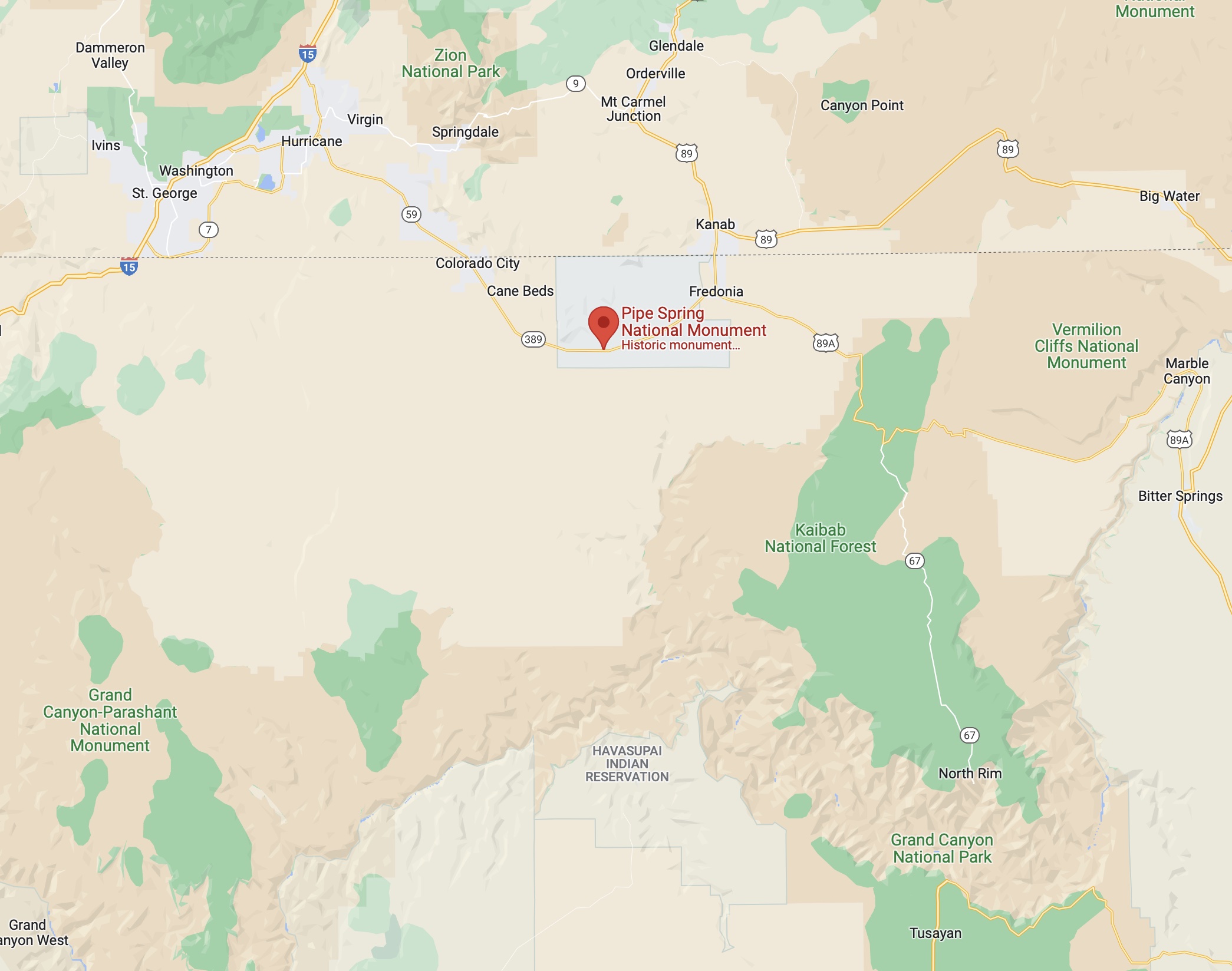 My road trip took me along many wonderful roads.
My road trip took me along many wonderful roads.
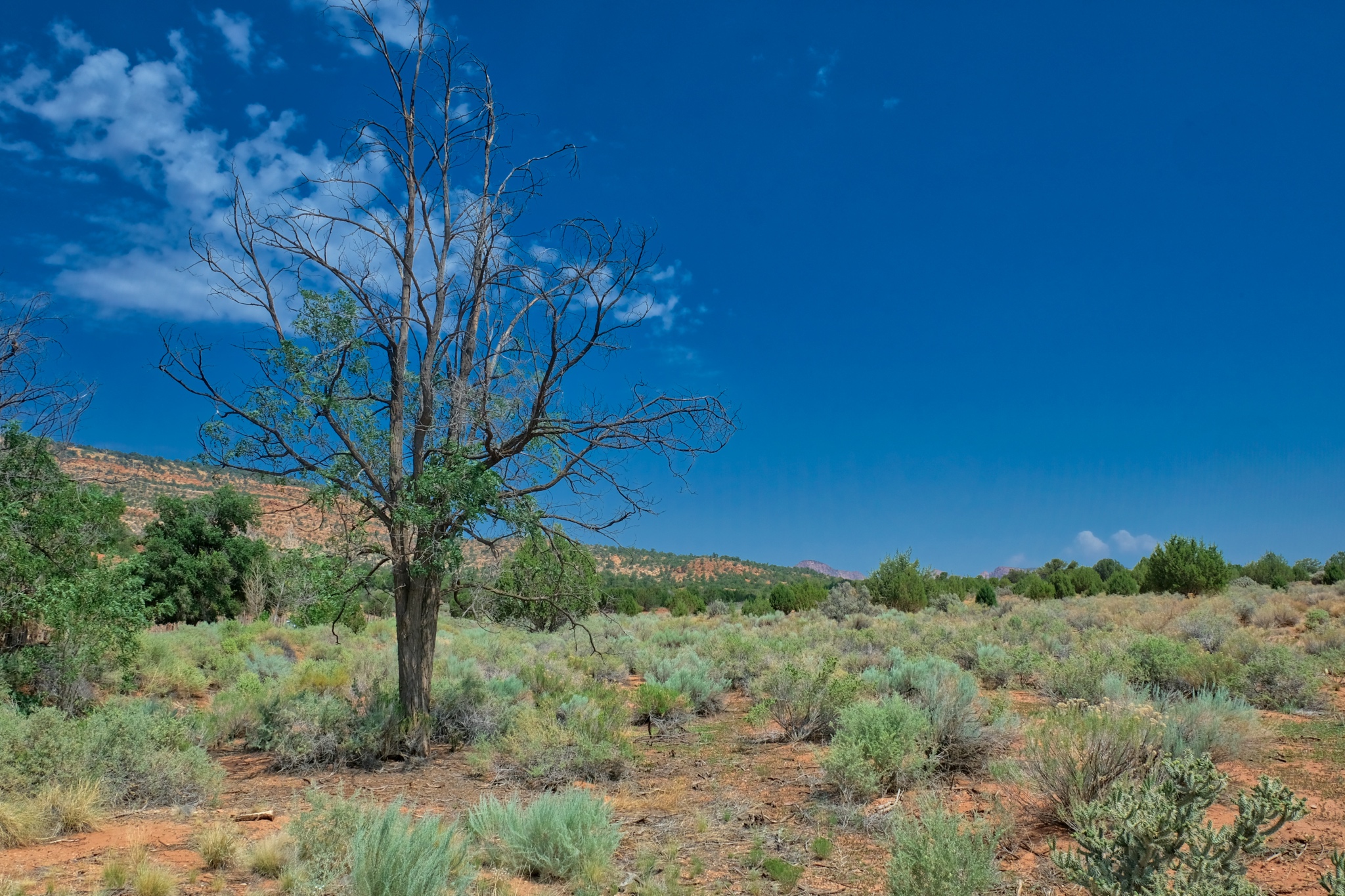 Pipe Springs is established as a grasslands preservation area to reestablish the area as it was before settlers arrived in 1850.
Pipe Springs is established as a grasslands preservation area to reestablish the area as it was before settlers arrived in 1850.
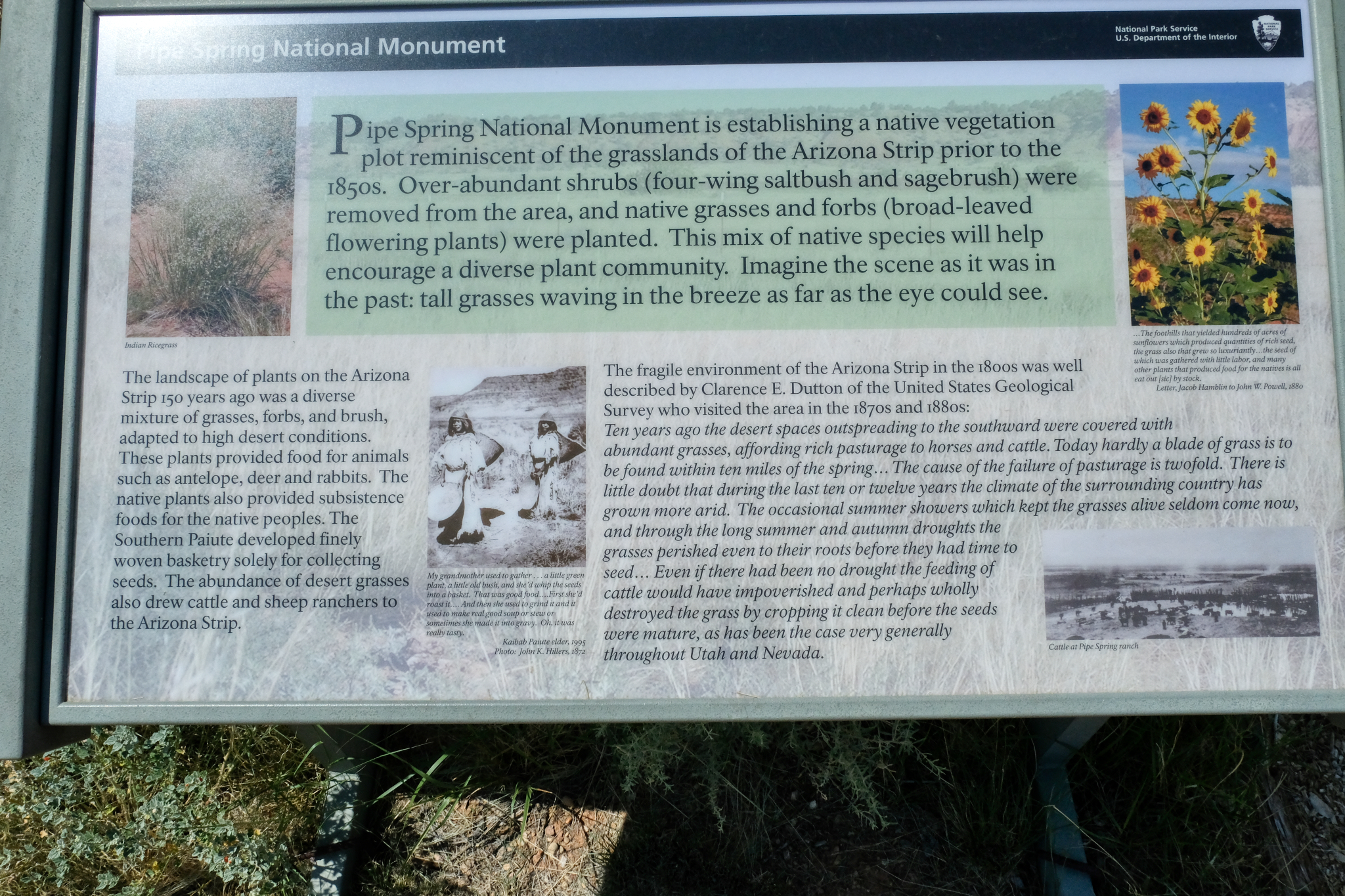 In addition to very informative signage, there was also a fine visitors center.
In addition to very informative signage, there was also a fine visitors center.
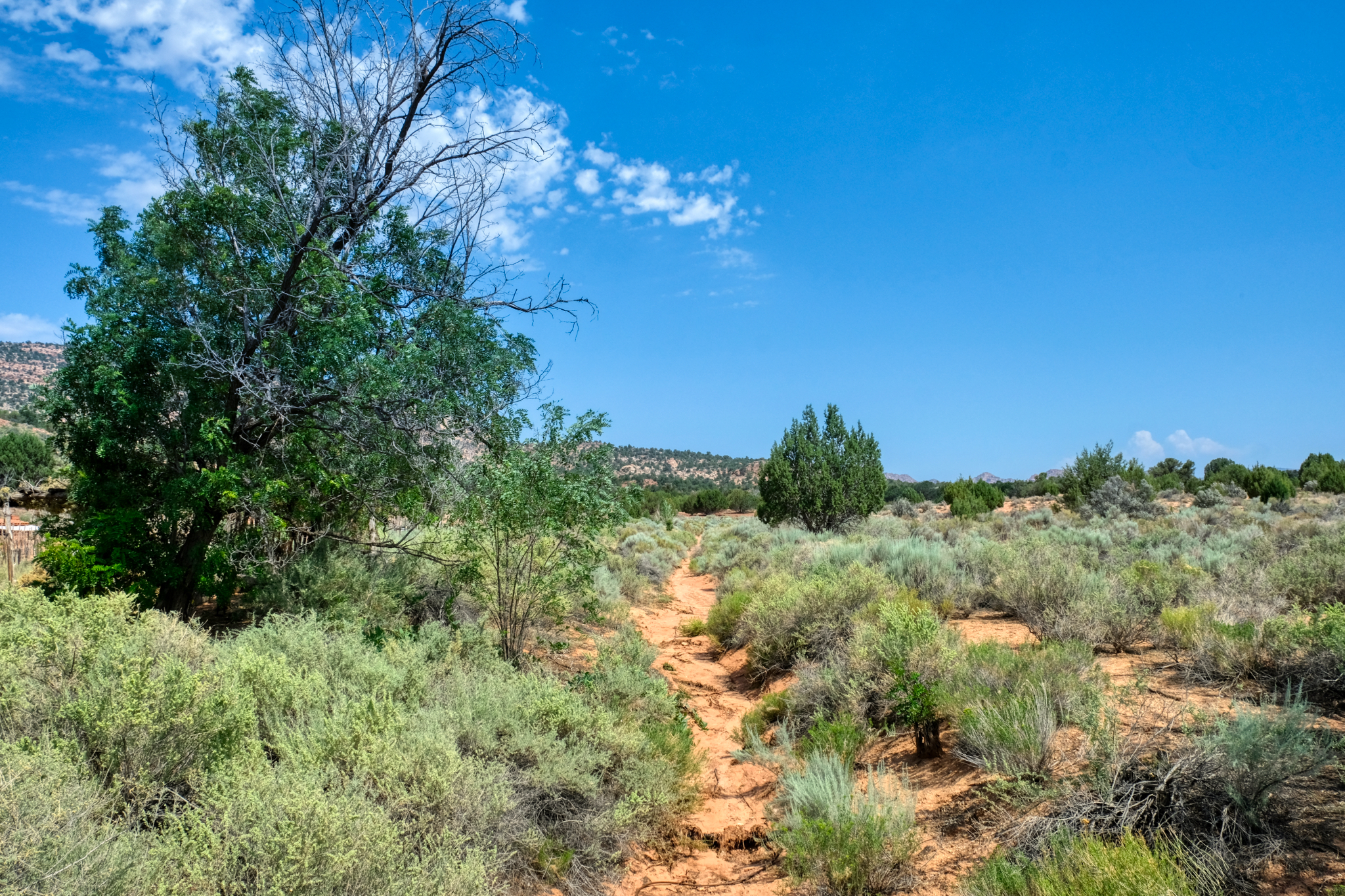 A nice place for a walk to nowhere.
A nice place for a walk to nowhere.
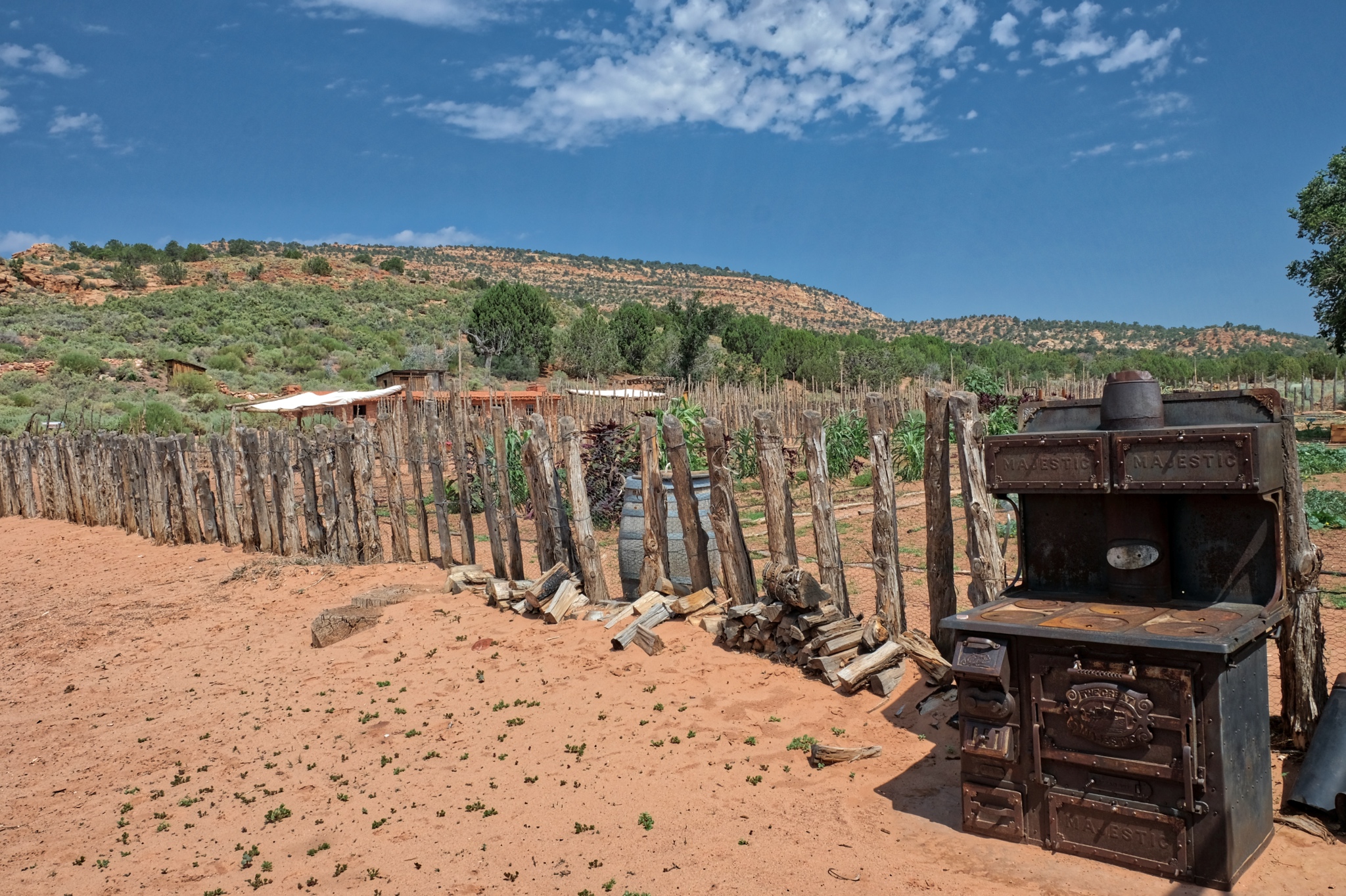 Pipe springs was established at a natural spring as a U.S. Army Calvary Fort, but it was also a self-sustaining farm to support the soldiers stationed there during 'The Indian Wars' in the region.
Pipe springs was established at a natural spring as a U.S. Army Calvary Fort, but it was also a self-sustaining farm to support the soldiers stationed there during 'The Indian Wars' in the region.
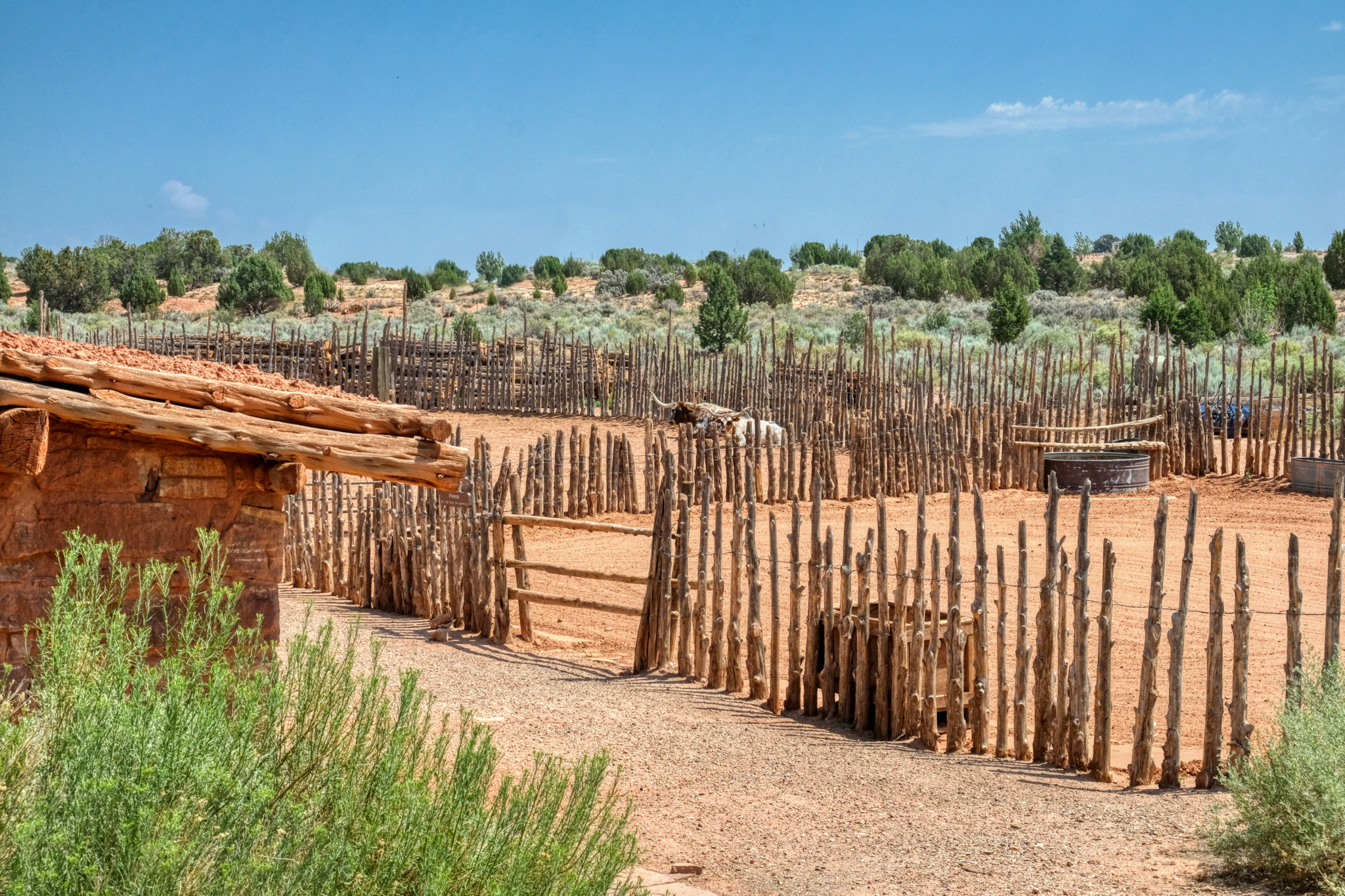 The National Monument still maintains a farm on site in the manner of the settlers and soldiers around 1850. A very nice depiction of the living conditions and methods of the early Western settlers.
The National Monument still maintains a farm on site in the manner of the settlers and soldiers around 1850. A very nice depiction of the living conditions and methods of the early Western settlers.
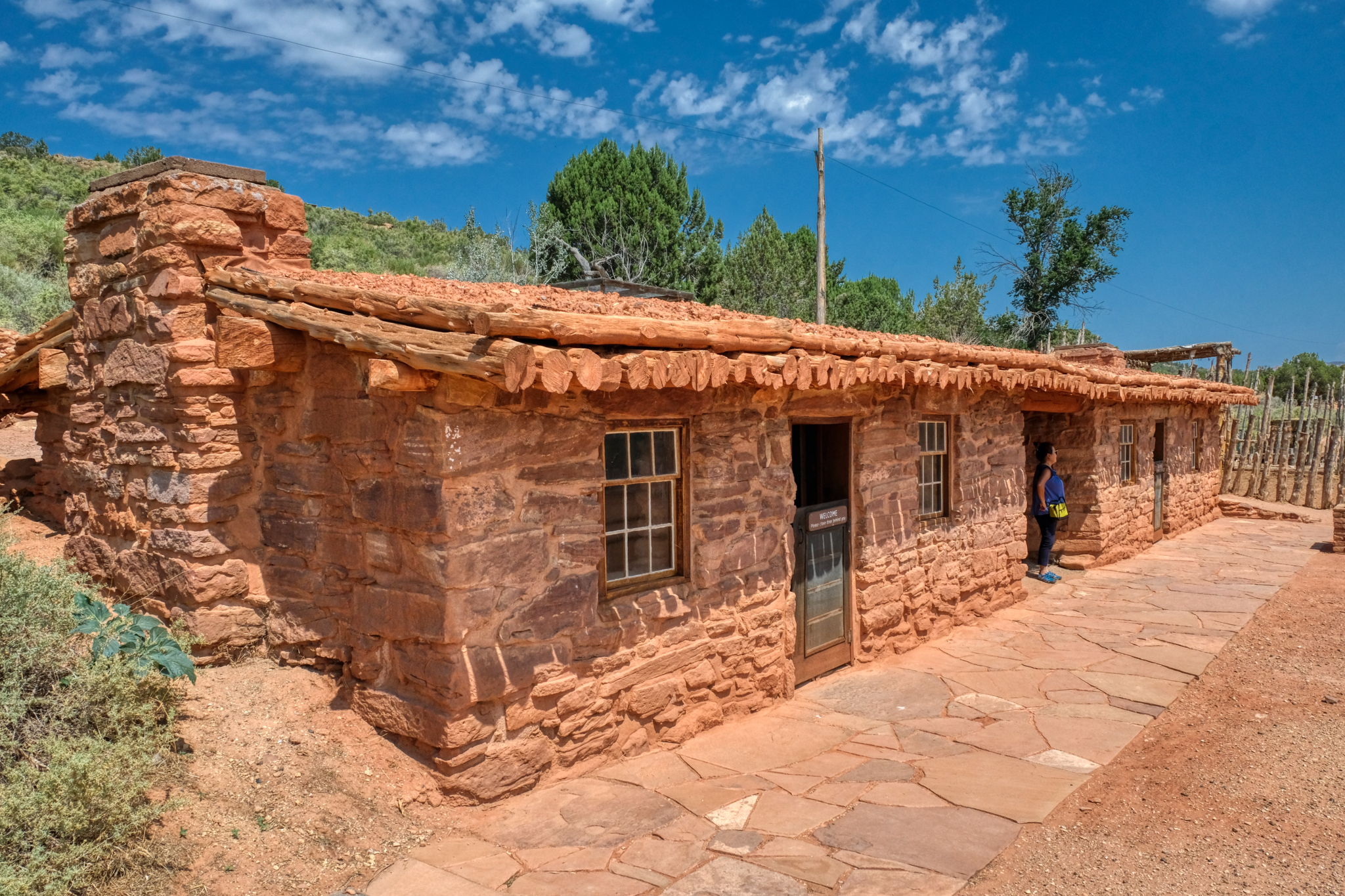 A nicely restored period blacksmith shop and tack house.
A nicely restored period blacksmith shop and tack house.
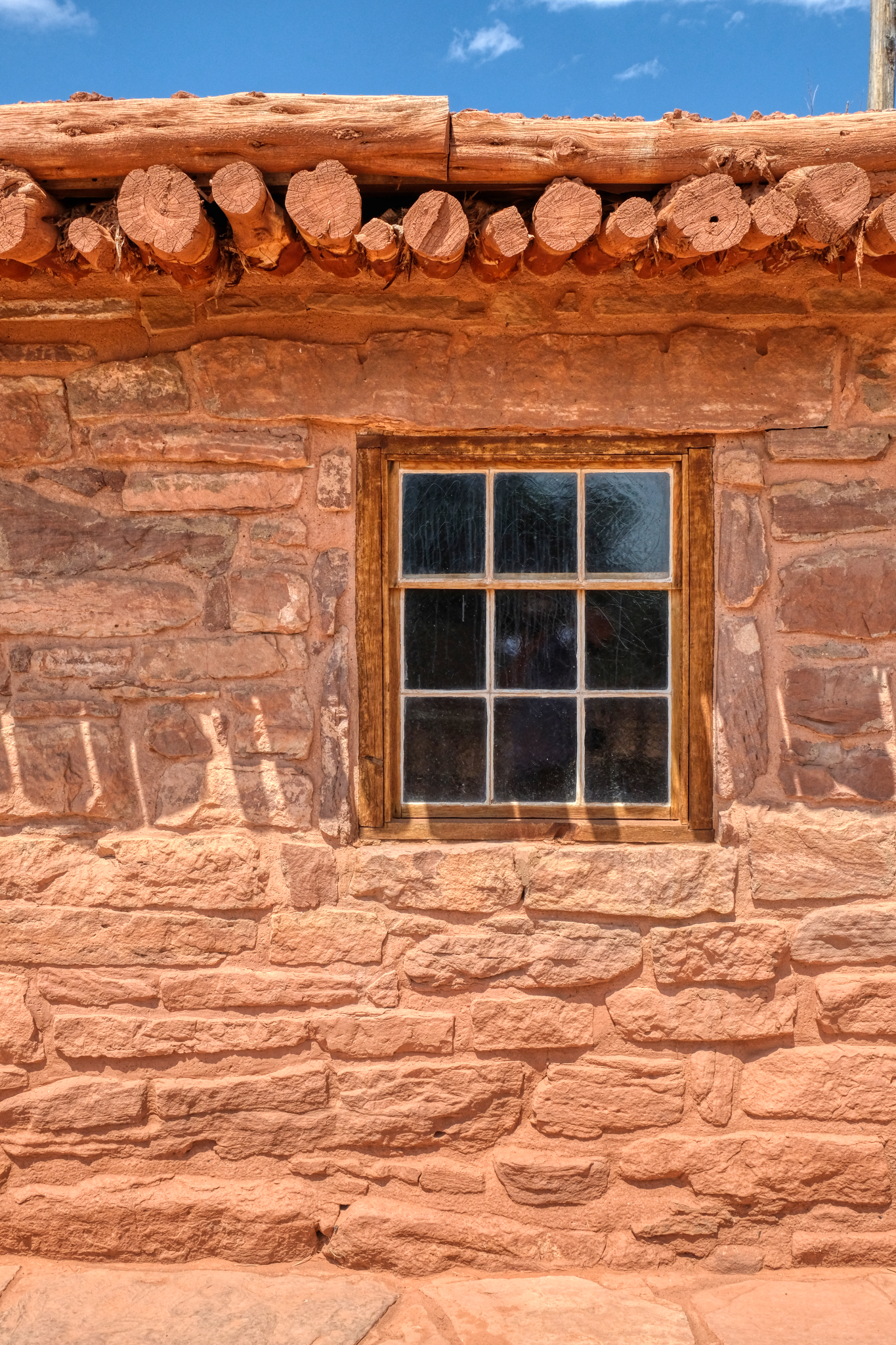 Beautiful stone construction.
Beautiful stone construction.
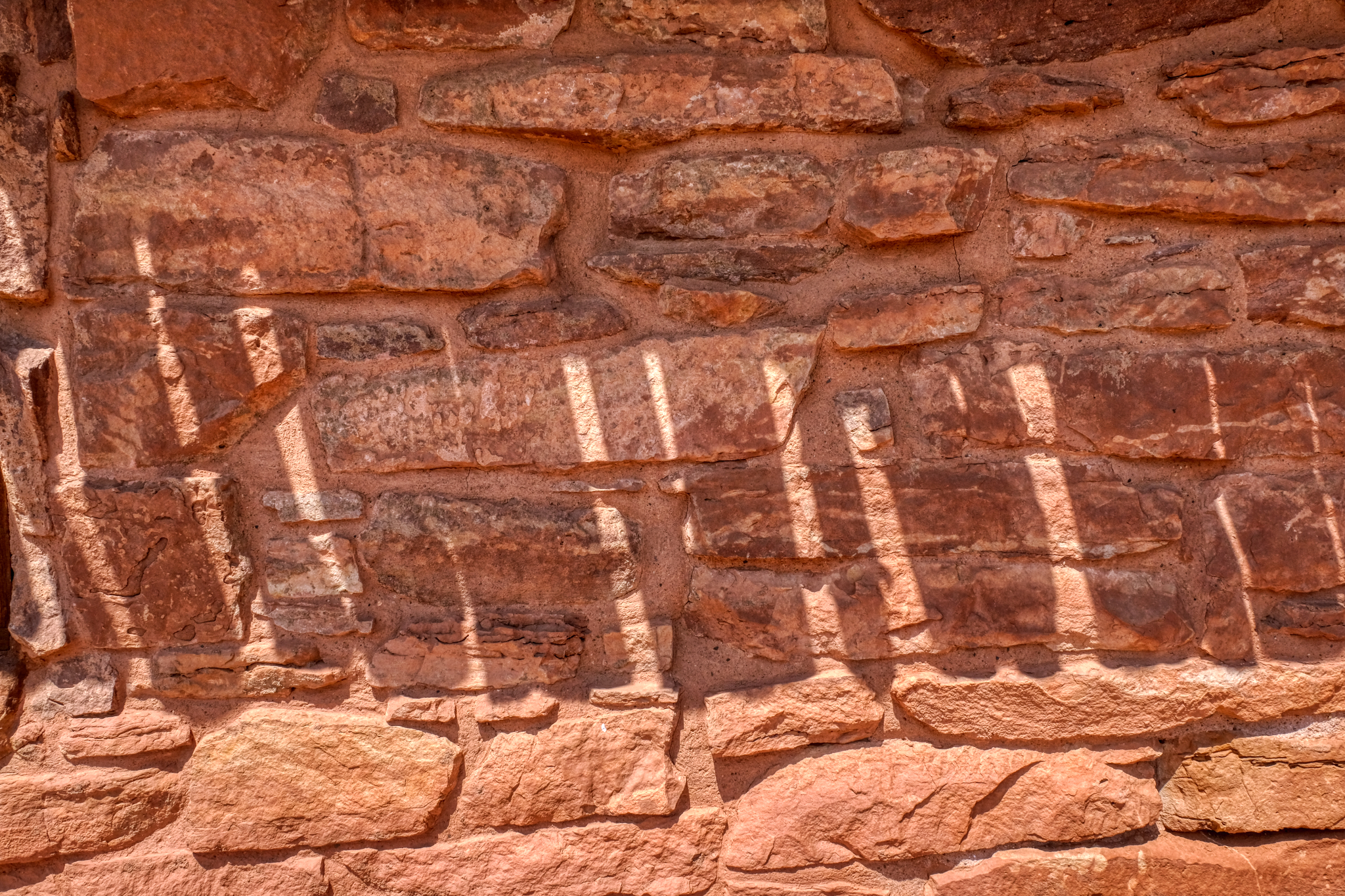 It was a hot day near noon when we arrive . . . wonderful shadows on the orange stone tack house.
It was a hot day near noon when we arrive . . . wonderful shadows on the orange stone tack house.
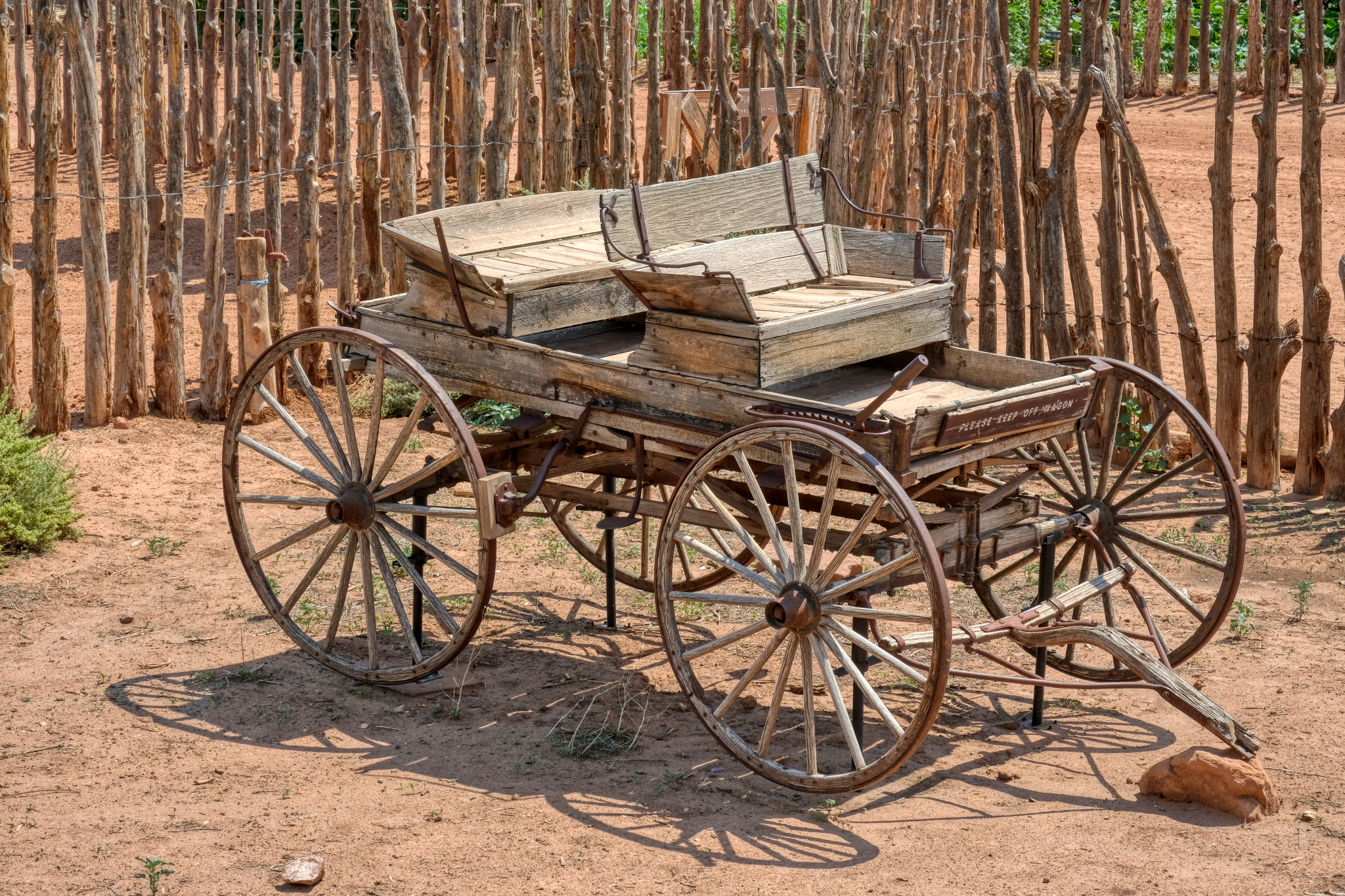 There were some beautiful antique wagons sitting about the grounds. This buggy was fantastic.
There were some beautiful antique wagons sitting about the grounds. This buggy was fantastic.
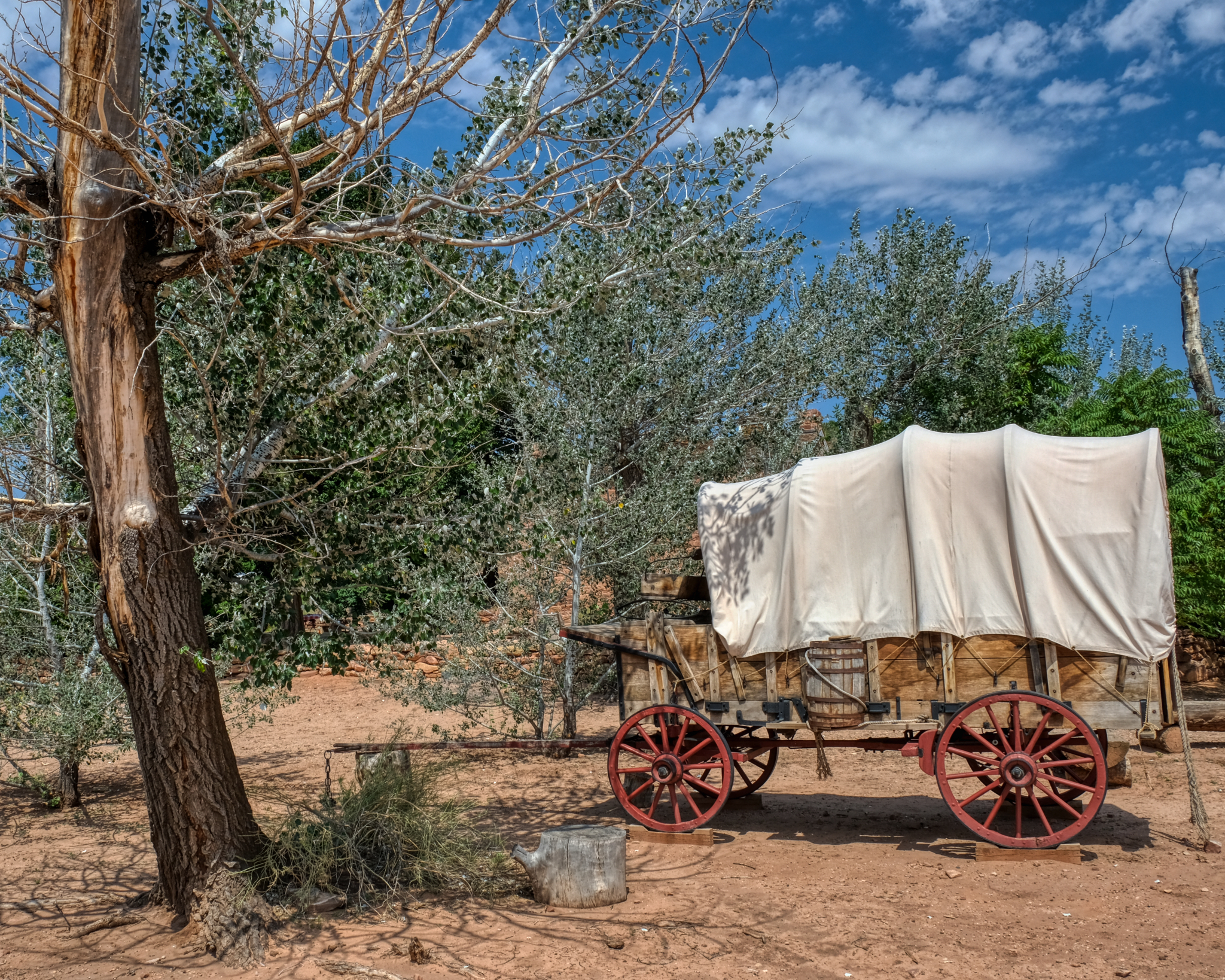 The classic western covered wagon.
The classic western covered wagon.
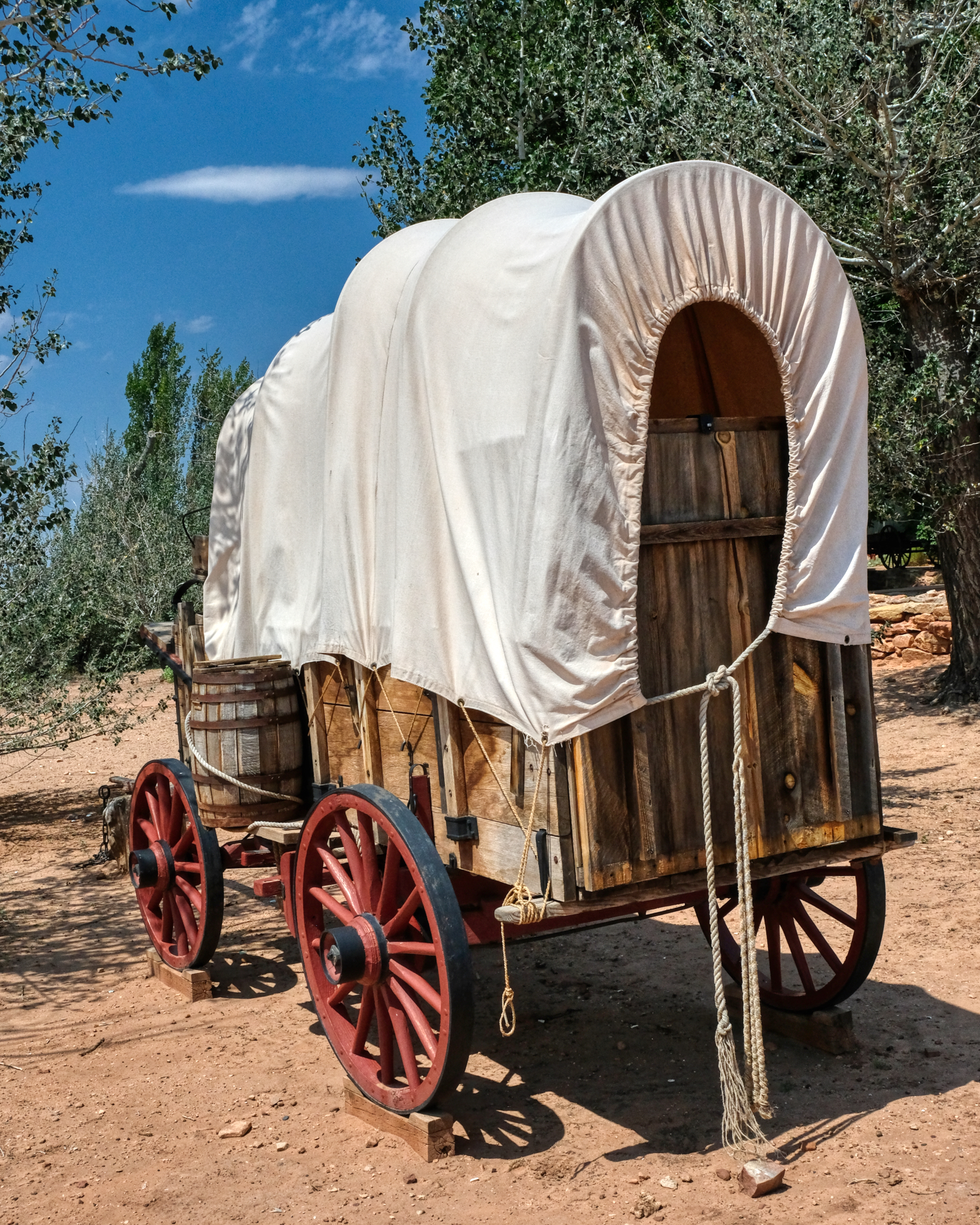 Can you imagine being one of the many thousands who crossed the breadth of America in one of these covered wagons. The faith, hope, and fortitude they must have had!
Can you imagine being one of the many thousands who crossed the breadth of America in one of these covered wagons. The faith, hope, and fortitude they must have had!
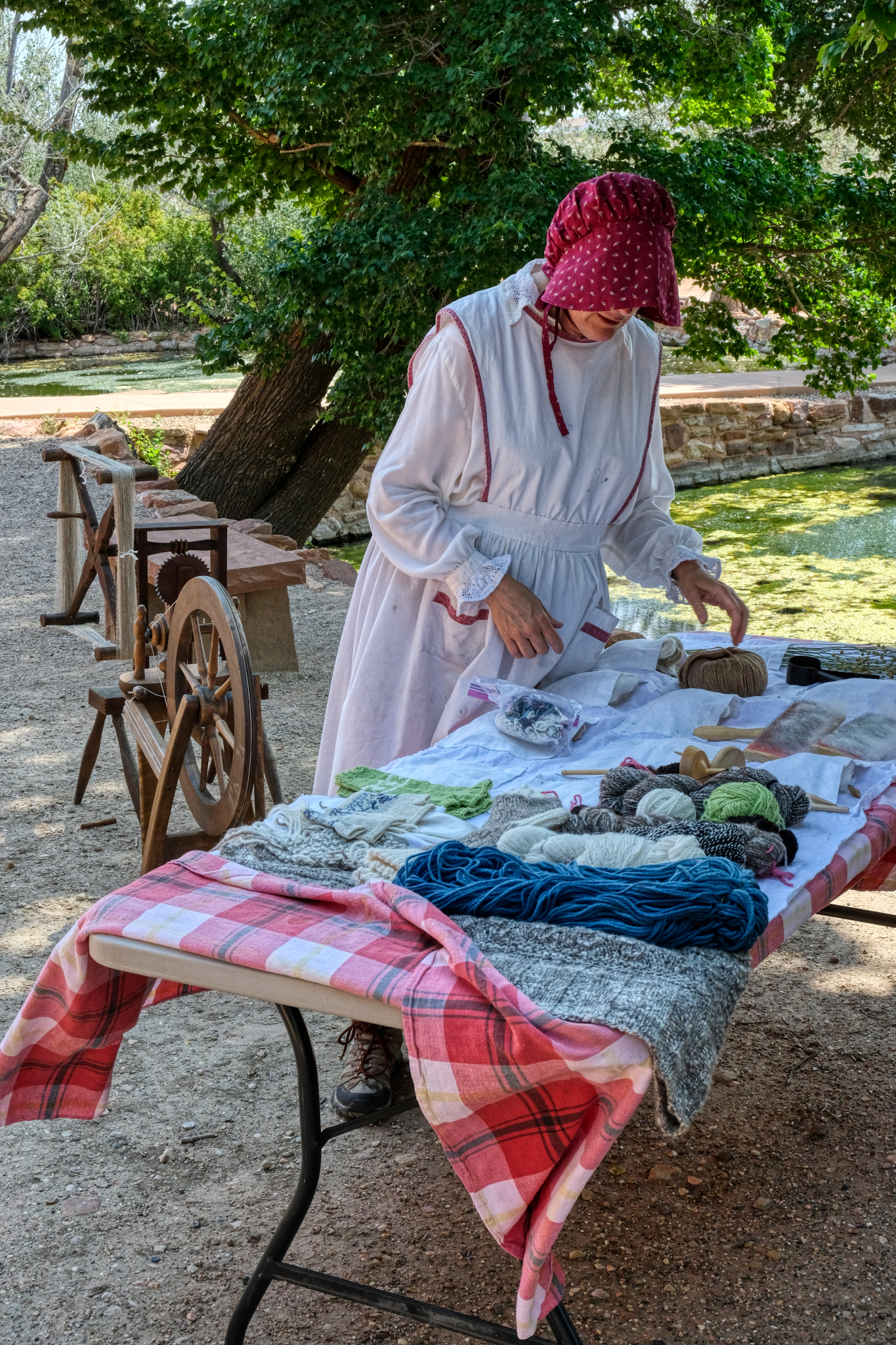 One of the park staff dressed in period costume displaying the kind of textiles the pioneers there would have been making in the 1860s.
One of the park staff dressed in period costume displaying the kind of textiles the pioneers there would have been making in the 1860s.
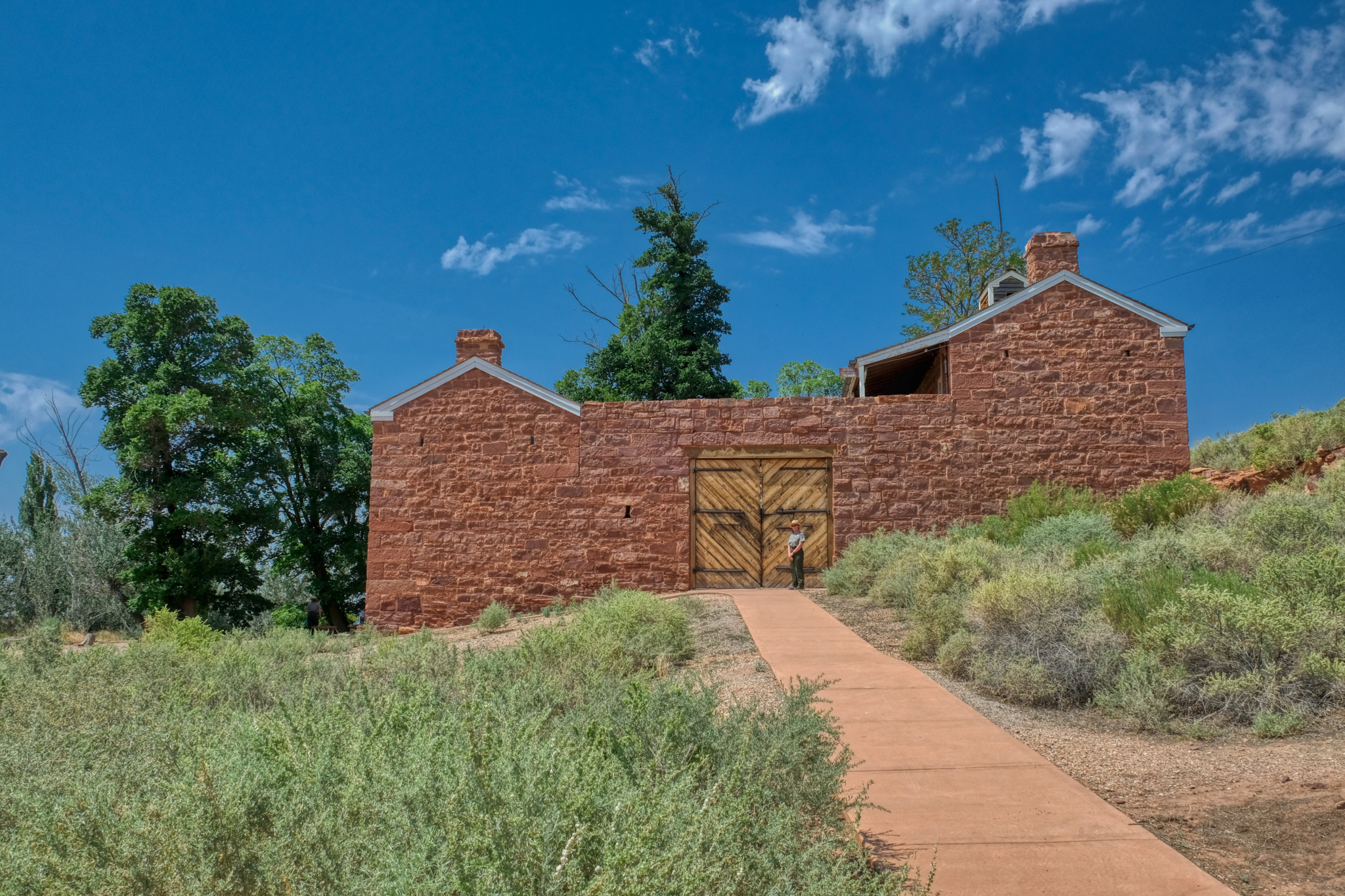 The real purpose of Pipe Springs was as a military fort to provide safety and security for settlers and ranchers during periods of 'Indian trouble.'
The real purpose of Pipe Springs was as a military fort to provide safety and security for settlers and ranchers during periods of 'Indian trouble.'
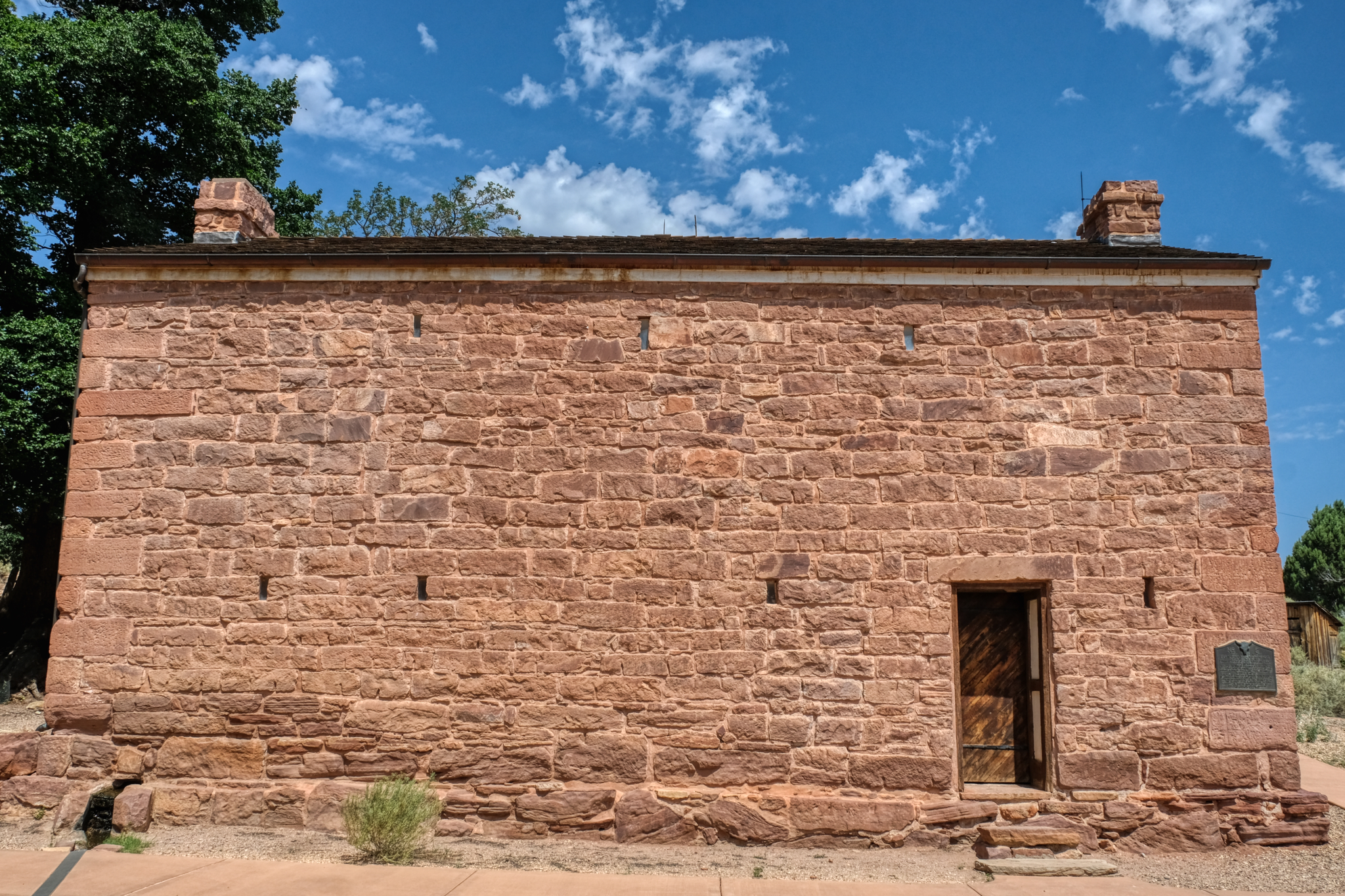 It looks very secure to me. We did not go on the inside.
It looks very secure to me. We did not go on the inside.
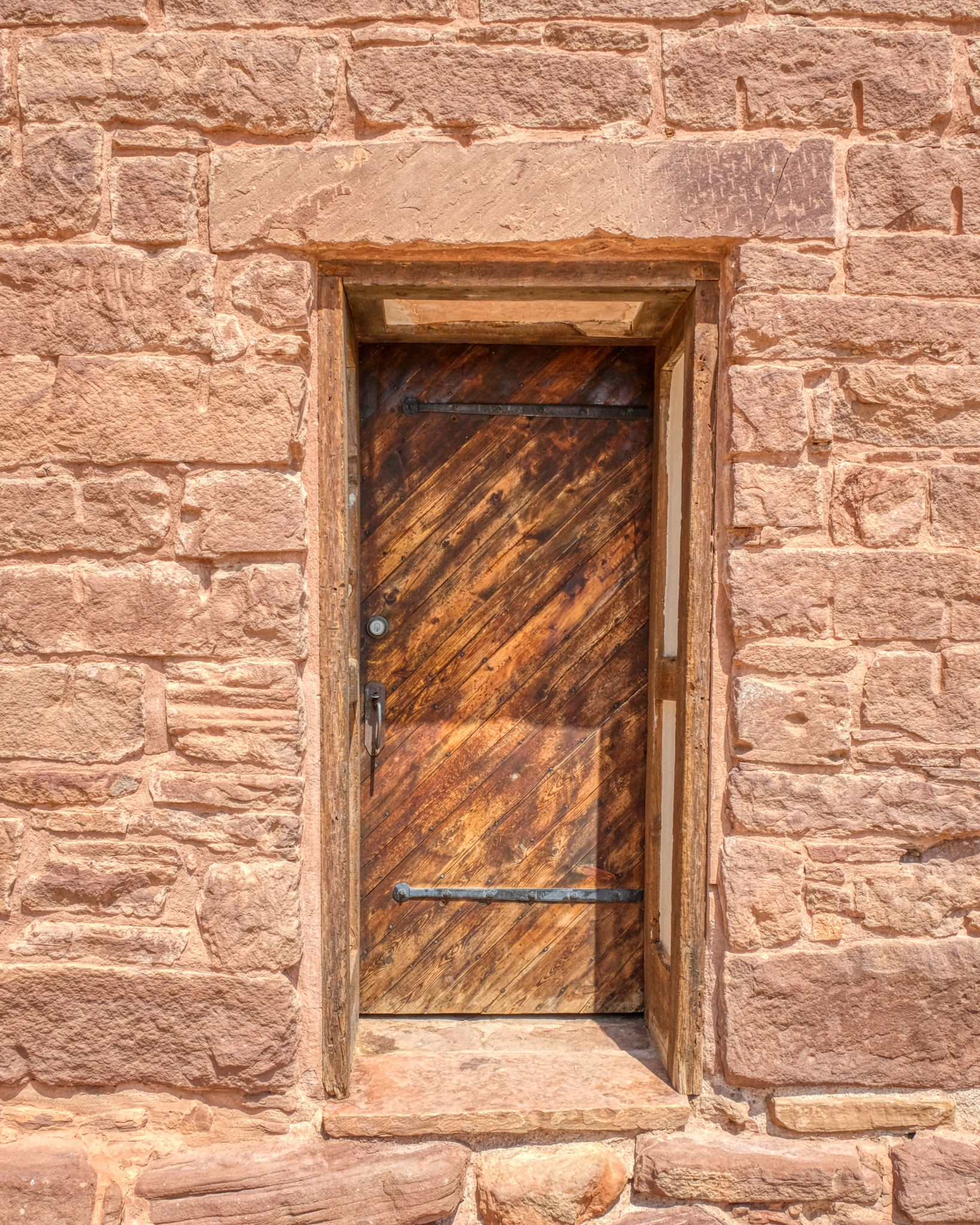 A very photogenic old door at Pipe Springs Fort.
A very photogenic old door at Pipe Springs Fort.
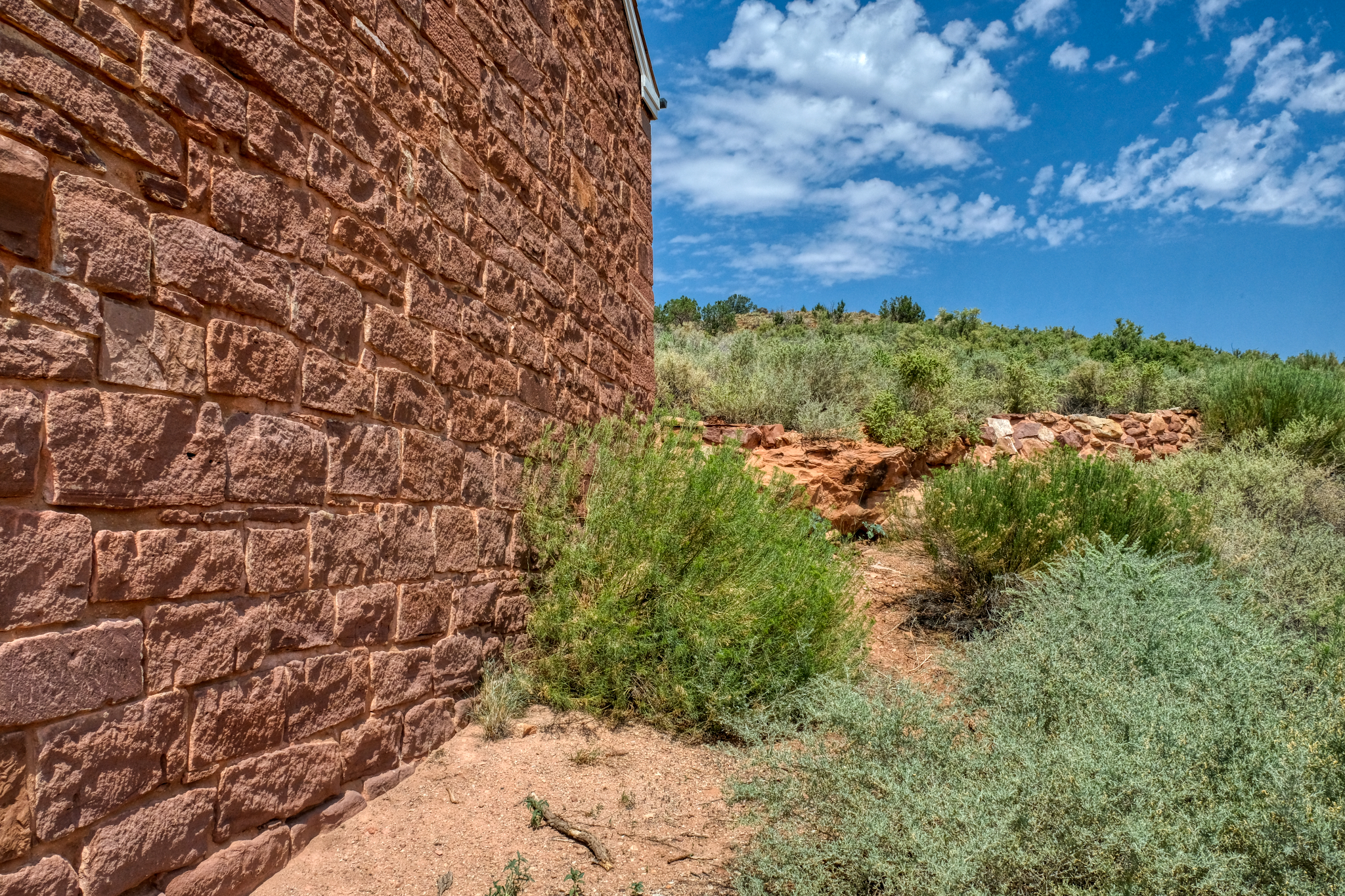 This photo represents, for me, the isolation of the fort within the vast western landscape.
This photo represents, for me, the isolation of the fort within the vast western landscape.
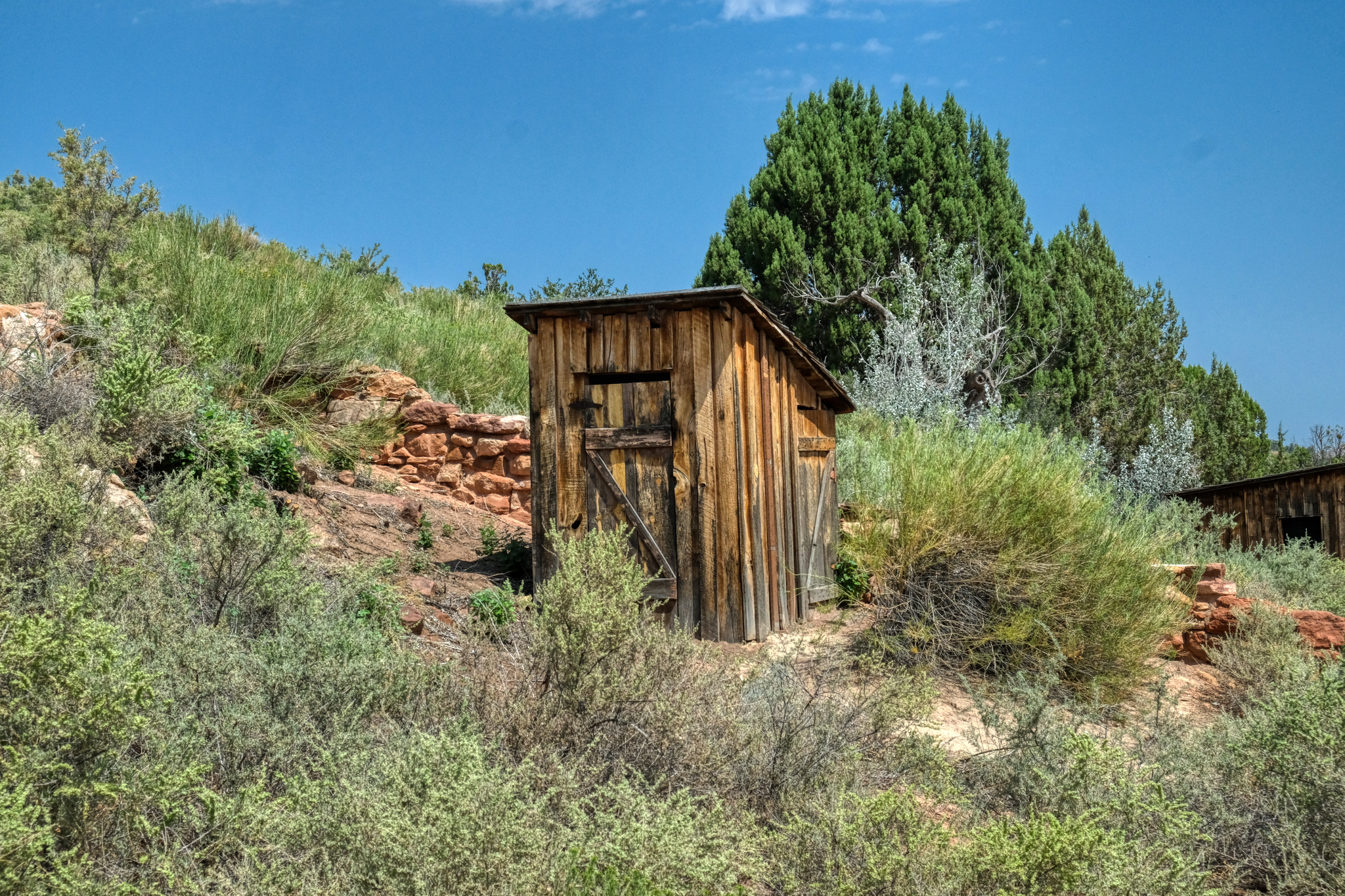 Yep, the outhouse.
Yep, the outhouse.
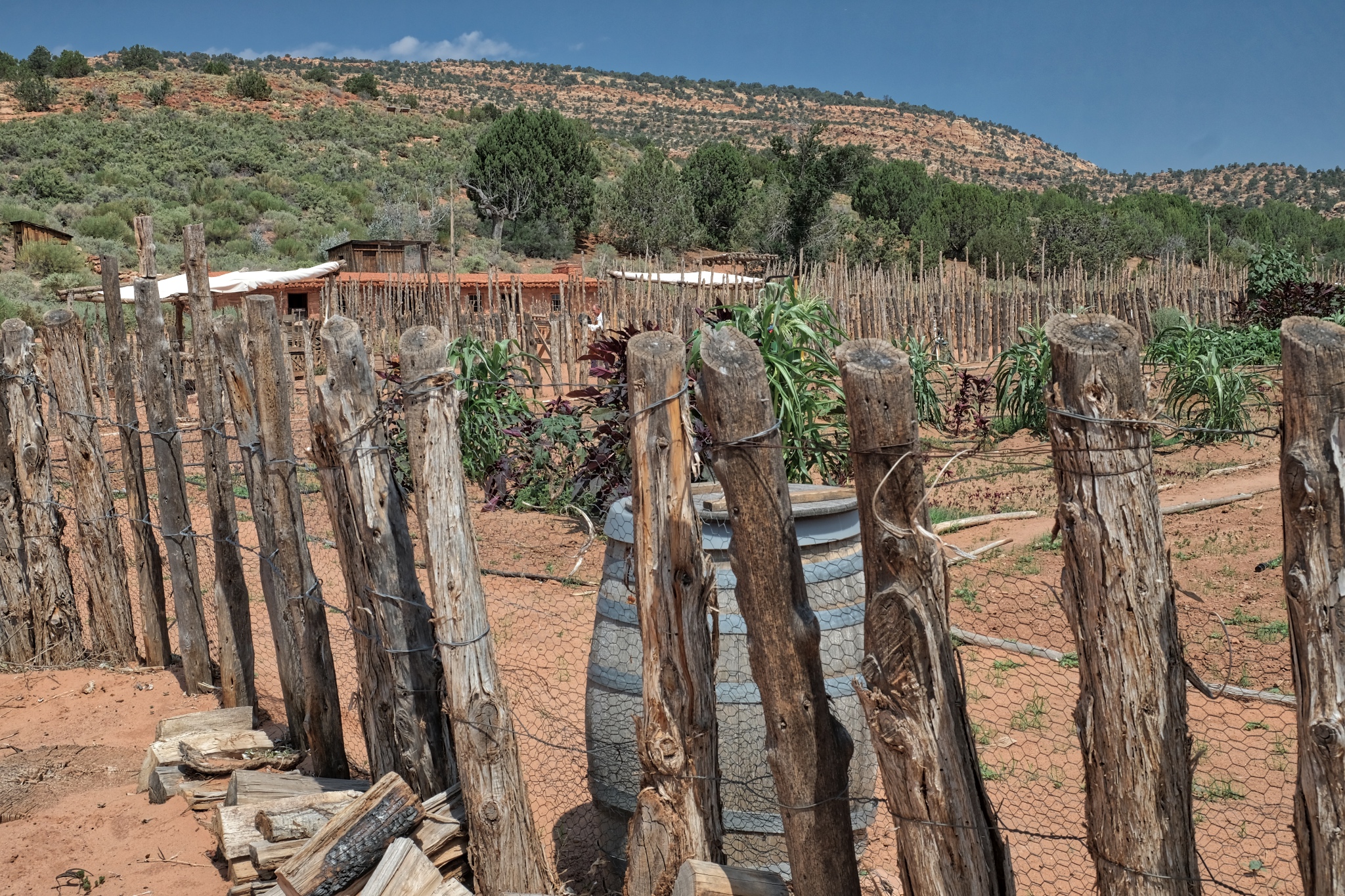 And so we left Pipe Springs to drive on toward the North Rim of the Grand Canyon.
And so we left Pipe Springs to drive on toward the North Rim of the Grand Canyon.
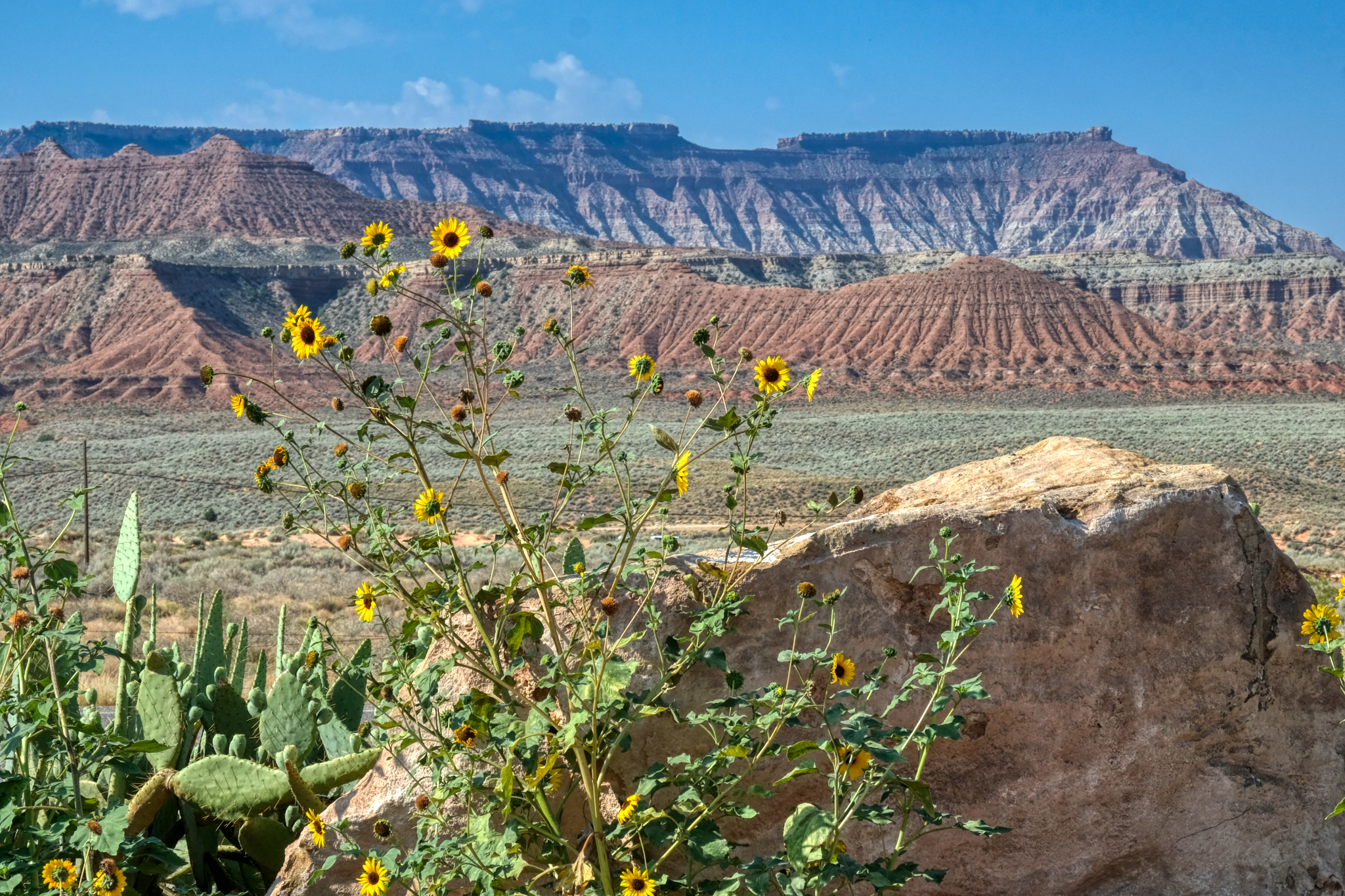 Driving along Arizona Highway 389 trough beautiful mesa country . . .with sunflowers?
Driving along Arizona Highway 389 trough beautiful mesa country . . .with sunflowers?
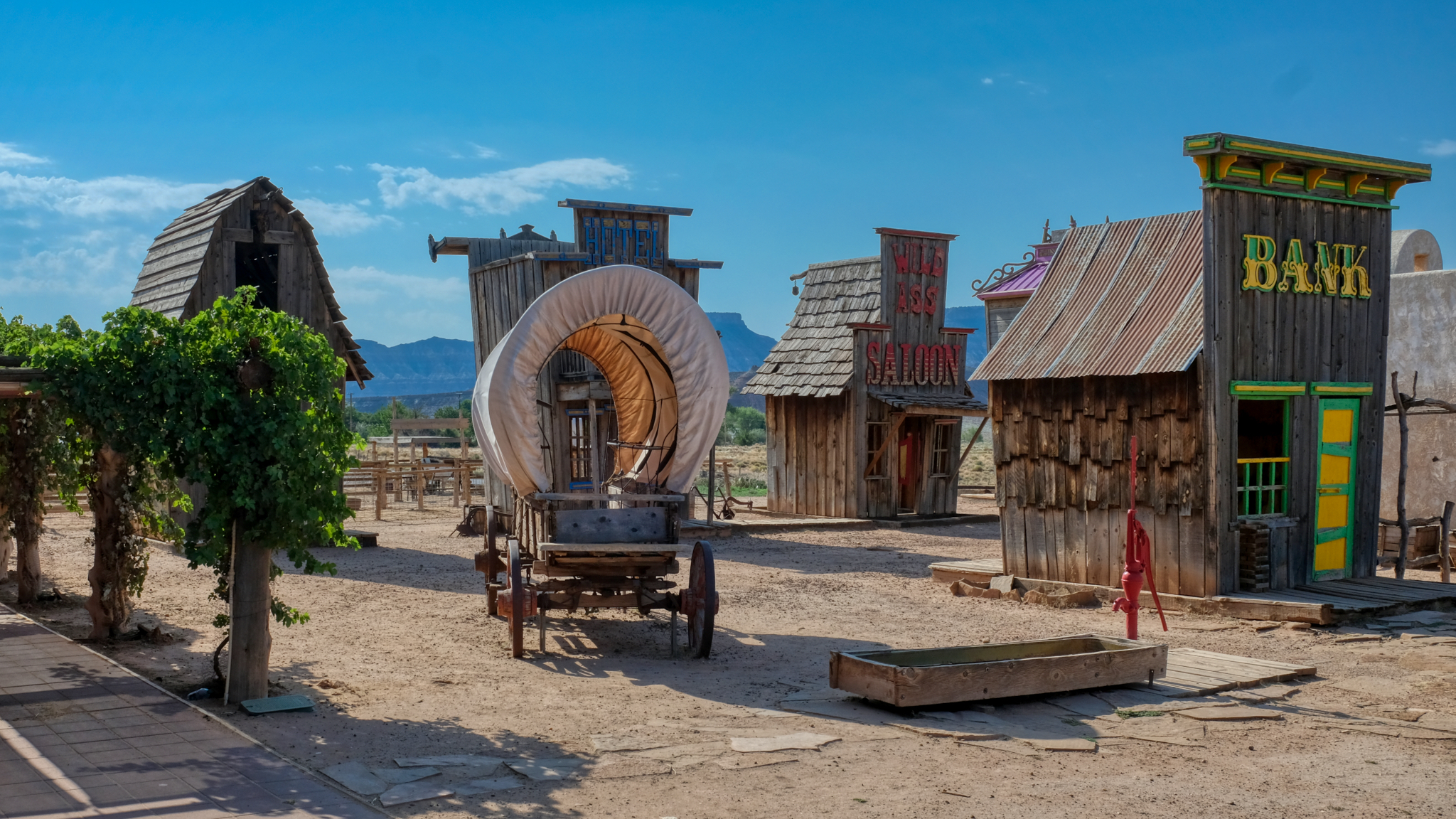 "Just another roadside attraction" . . . a "Wild West Souvenir Store" out along the highway with a cartoonish Wild West Town "Photograph You Family and Friends!" the sign said. I didn't pay the US$5.oo, but instead took photos through the fence . . . duh!
"Just another roadside attraction" . . . a "Wild West Souvenir Store" out along the highway with a cartoonish Wild West Town "Photograph You Family and Friends!" the sign said. I didn't pay the US$5.oo, but instead took photos through the fence . . . duh!
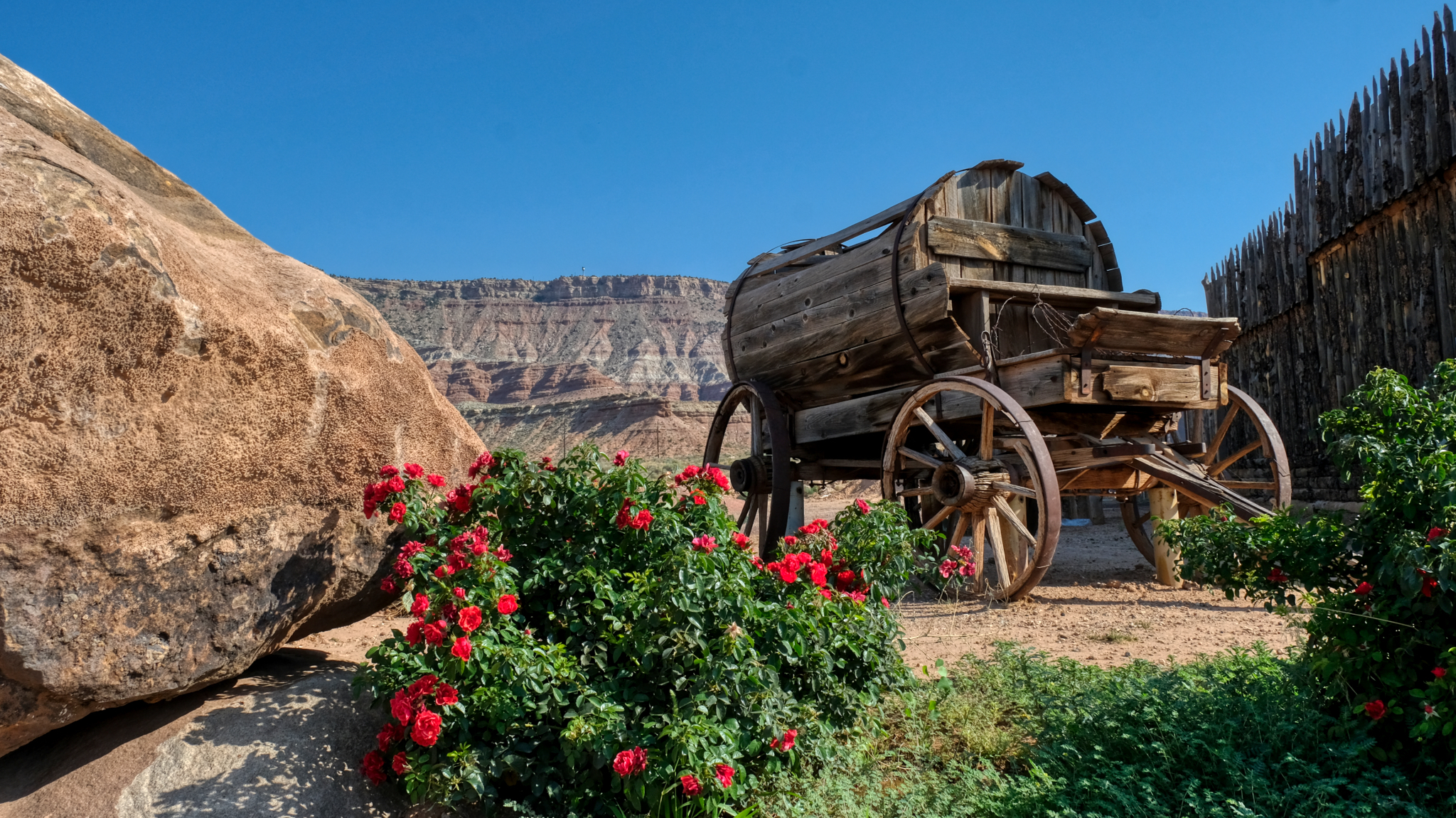 There was a magnificent antique water wagon out back of the store . . . a reminder of the realities of trying to survive in such a dry climate a century-and-a-half ago.
There was a magnificent antique water wagon out back of the store . . . a reminder of the realities of trying to survive in such a dry climate a century-and-a-half ago.
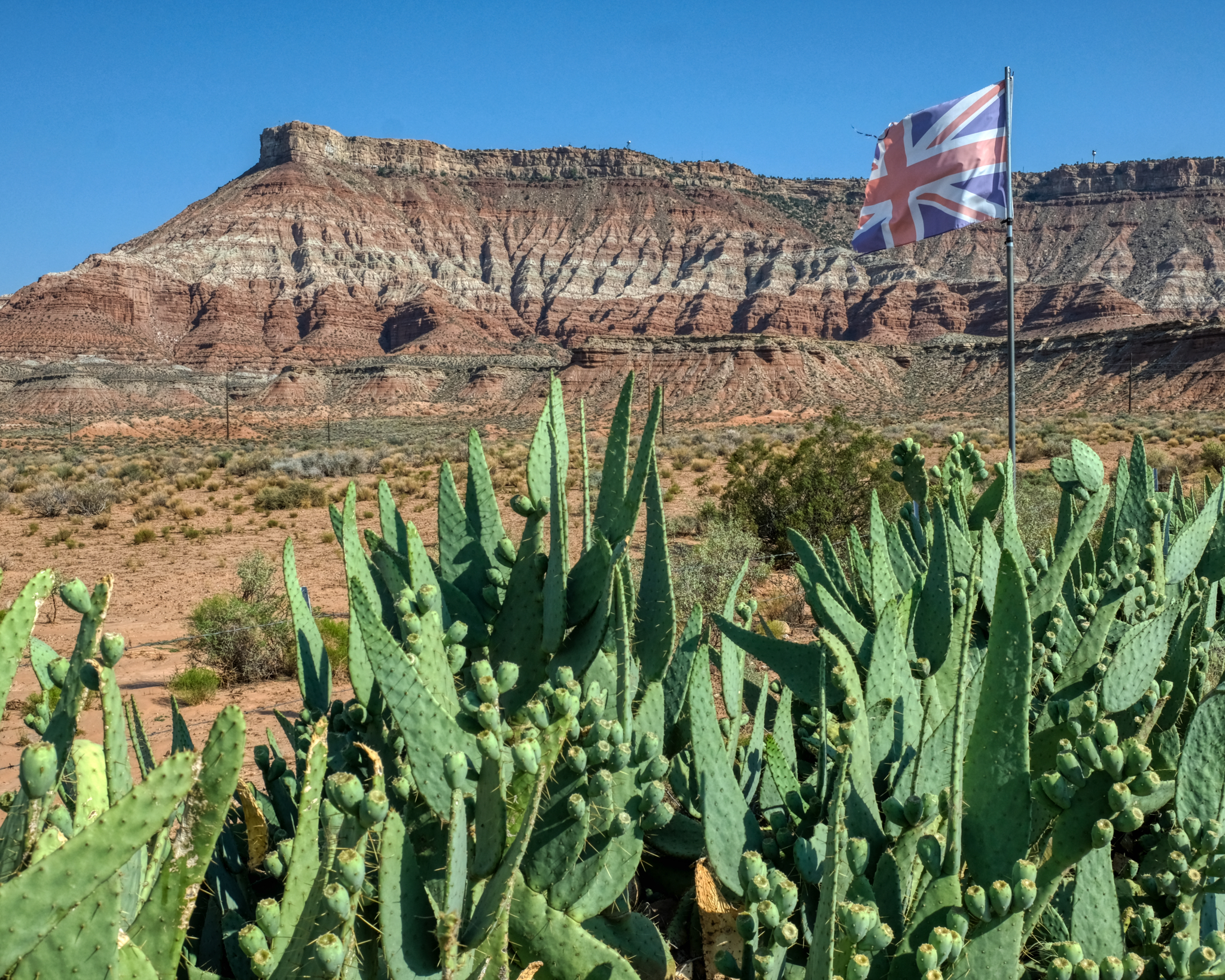 The Western Store was trying to lure tourists from the UK apparently.
The Western Store was trying to lure tourists from the UK apparently.
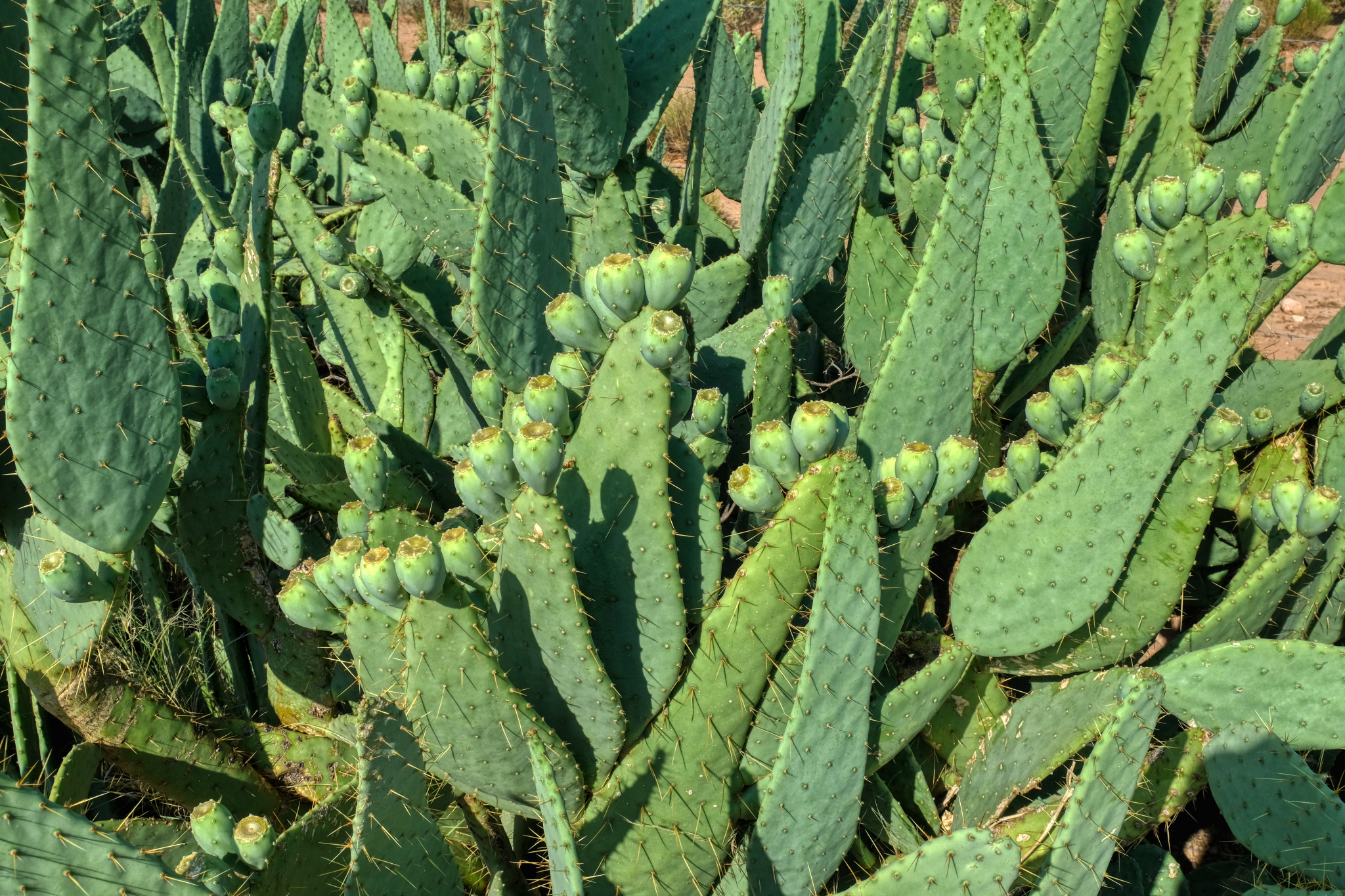 There was a fantastic clump of prickly pear cactus next to their fence.
There was a fantastic clump of prickly pear cactus next to their fence.
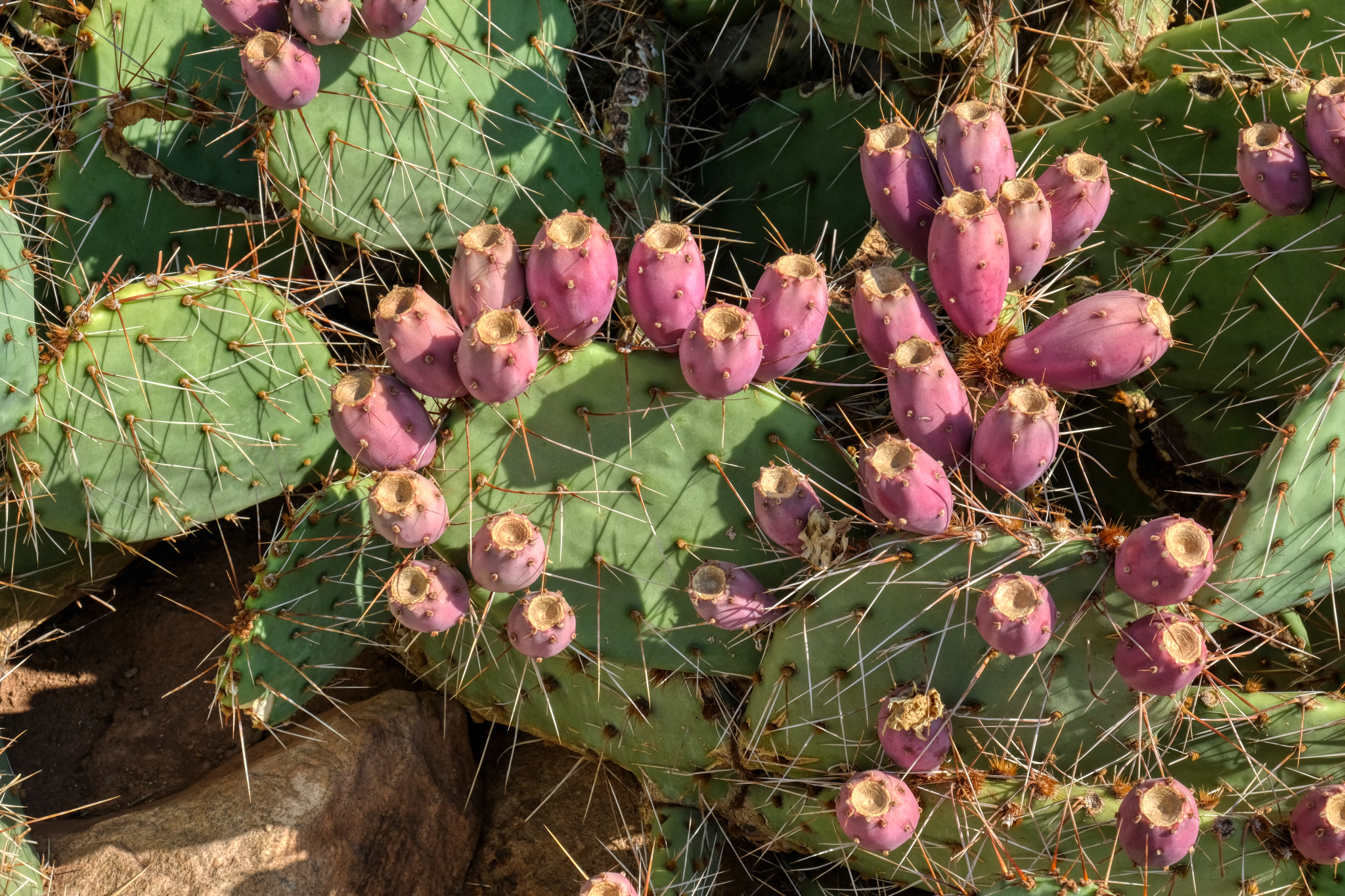 "The fruit of prickly pears (Opunita), commonly called cactus fruit, cactus fig, Indian fig, nopales or tuna in Spanish, is edible, although it must be peeled carefully to remove the small spines on the outer skin before consumption. If the outer layer is not properly removed, glochids can be ingested, causing discomfort of the throat, lips, and tongue, as the small spines are easily lodged in the skin. Native Americans like the Tequesta would roll the fruit around in a suitable medium (e.g. grit) to "sand" off the glochids. Alternatively, rotating the fruit in the flame of a campfire or torch has been used to remove the glochids. Today, parthenocarpic (seedless) cultivars are also available. The seeds can be used for flour." ****
"The fruit of prickly pears (Opunita), commonly called cactus fruit, cactus fig, Indian fig, nopales or tuna in Spanish, is edible, although it must be peeled carefully to remove the small spines on the outer skin before consumption. If the outer layer is not properly removed, glochids can be ingested, causing discomfort of the throat, lips, and tongue, as the small spines are easily lodged in the skin. Native Americans like the Tequesta would roll the fruit around in a suitable medium (e.g. grit) to "sand" off the glochids. Alternatively, rotating the fruit in the flame of a campfire or torch has been used to remove the glochids. Today, parthenocarpic (seedless) cultivars are also available. The seeds can be used for flour." ****
_____________________________________________
COVE FORT, UTAH
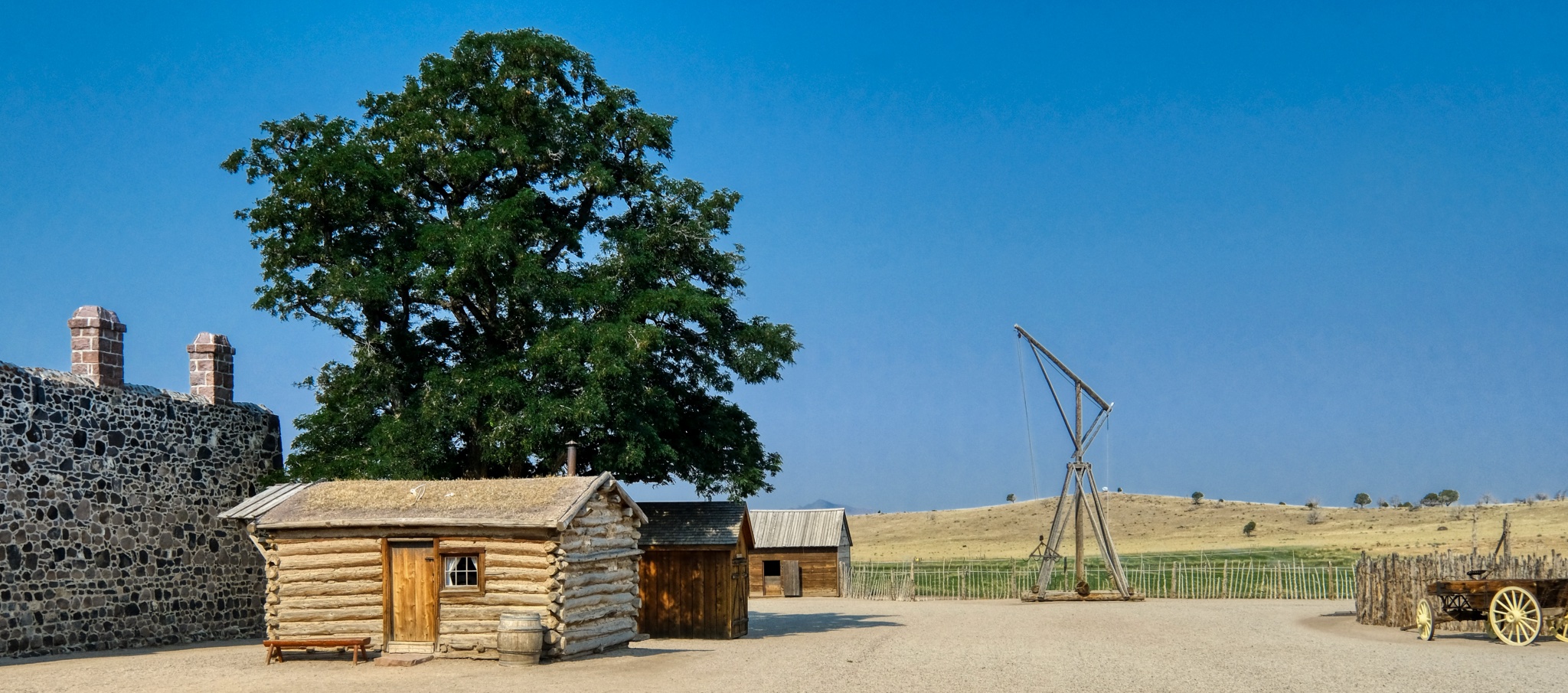 One of the joys of a road trip in the USA are the highway signs announcing "Historic Site Next Right Exit. Fort Cove". So, you take the next right off of I-15.
One of the joys of a road trip in the USA are the highway signs announcing "Historic Site Next Right Exit. Fort Cove". So, you take the next right off of I-15.
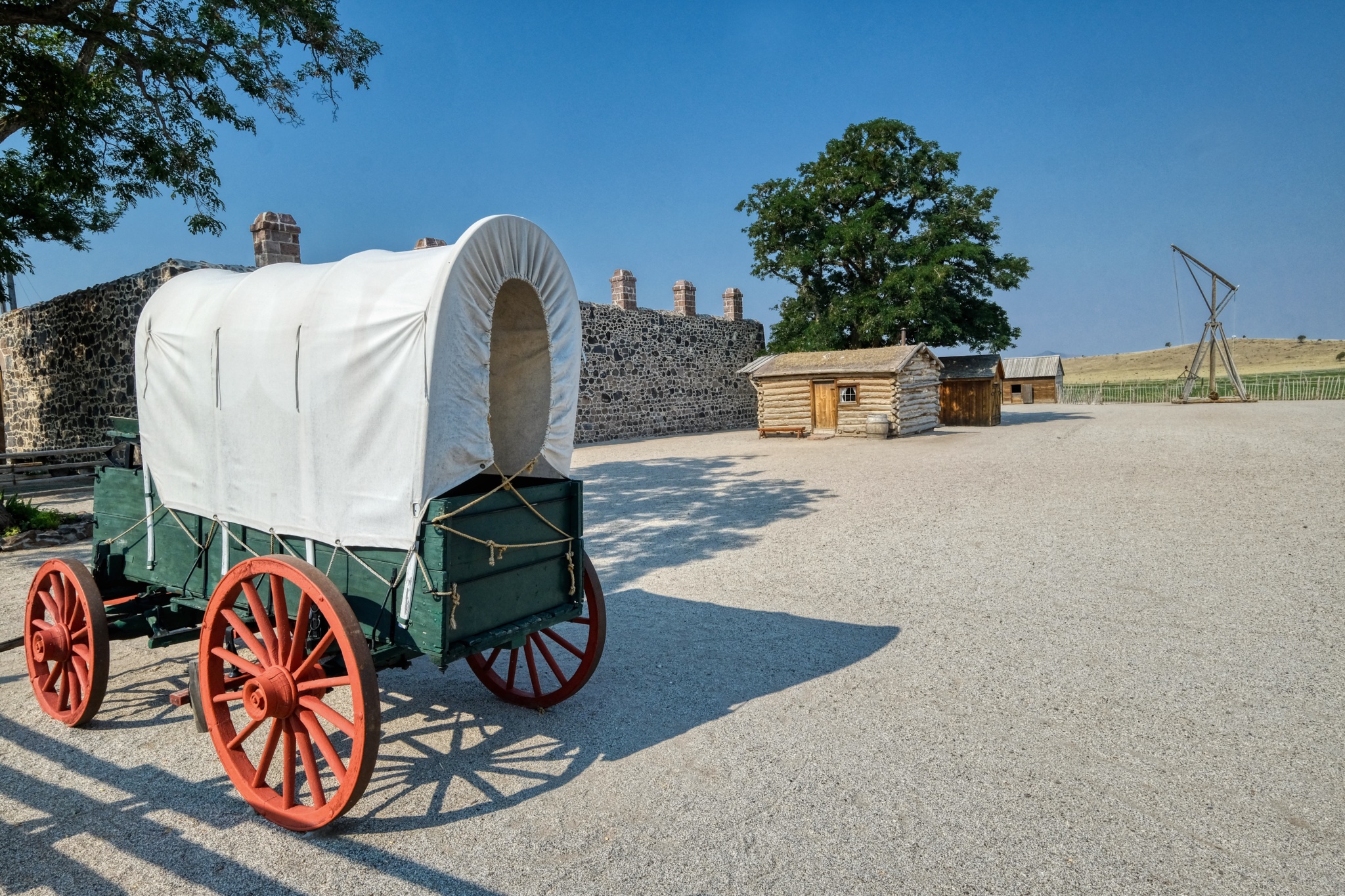
"Cove Fort is a fort, unincorporated community, and historical site located in Millard County, Utah. It was founded in 1867 at the request of Brigham Young. One of its distinctive features is the use of volcanic rock in the construction of the walls, rather than the wood used in many mid-19th-century western forts. This difference in construction is the reason it is one of very few forts of this period still surviving." ***
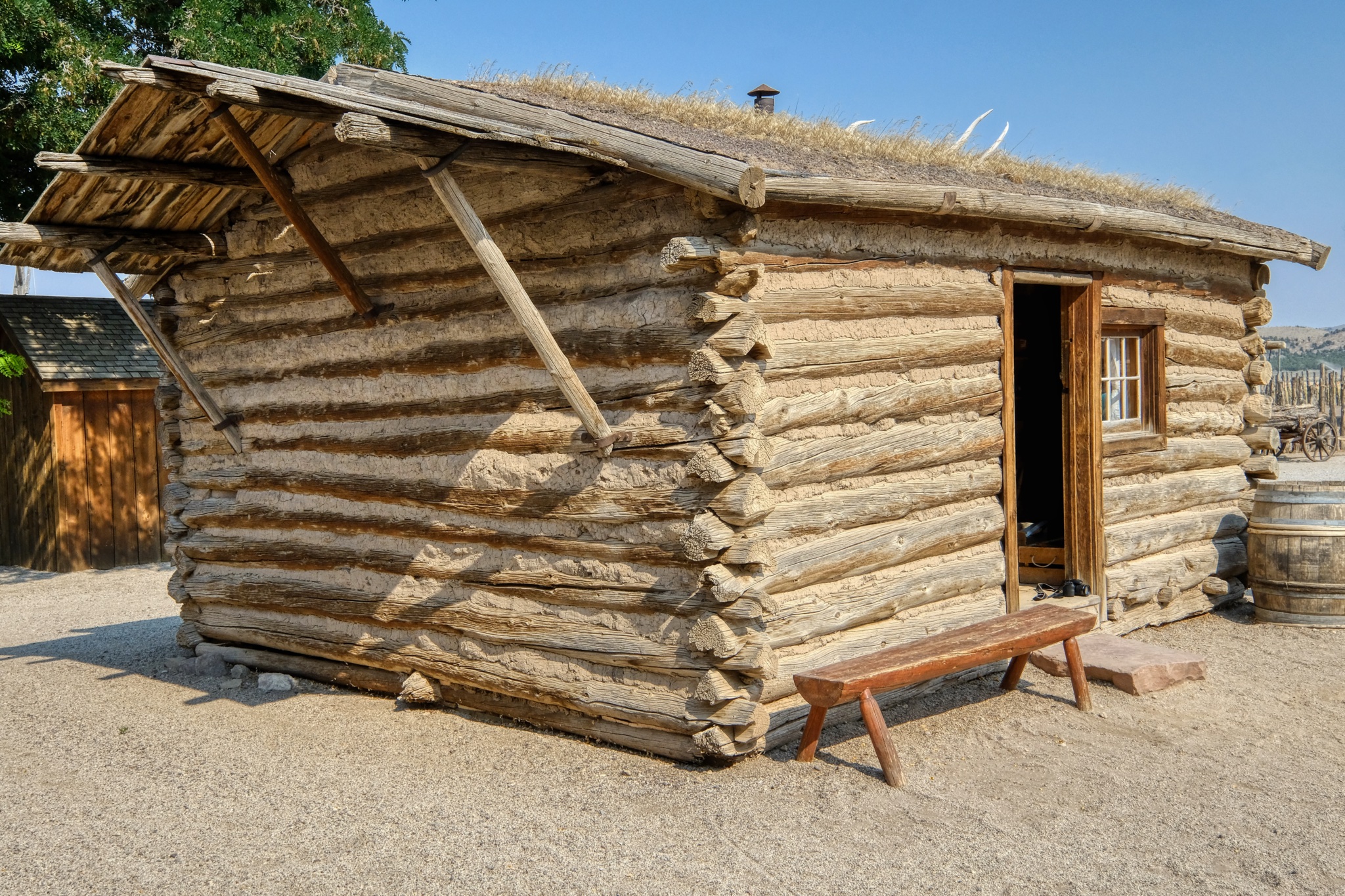 A very nice recreation of an early pioneer cabin.
A very nice recreation of an early pioneer cabin.
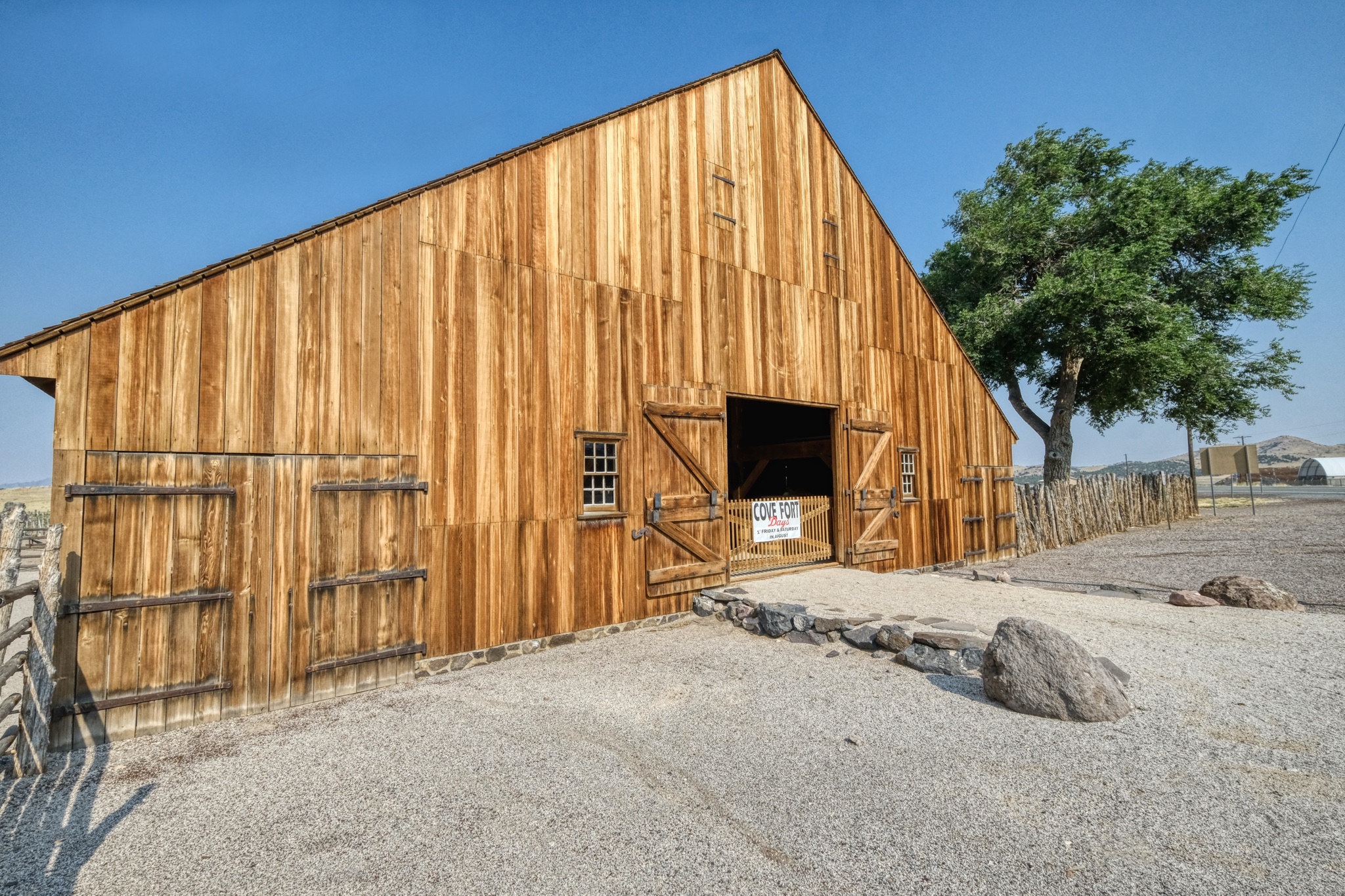 There was a fine reproduction barn, nearly new.
There was a fine reproduction barn, nearly new.
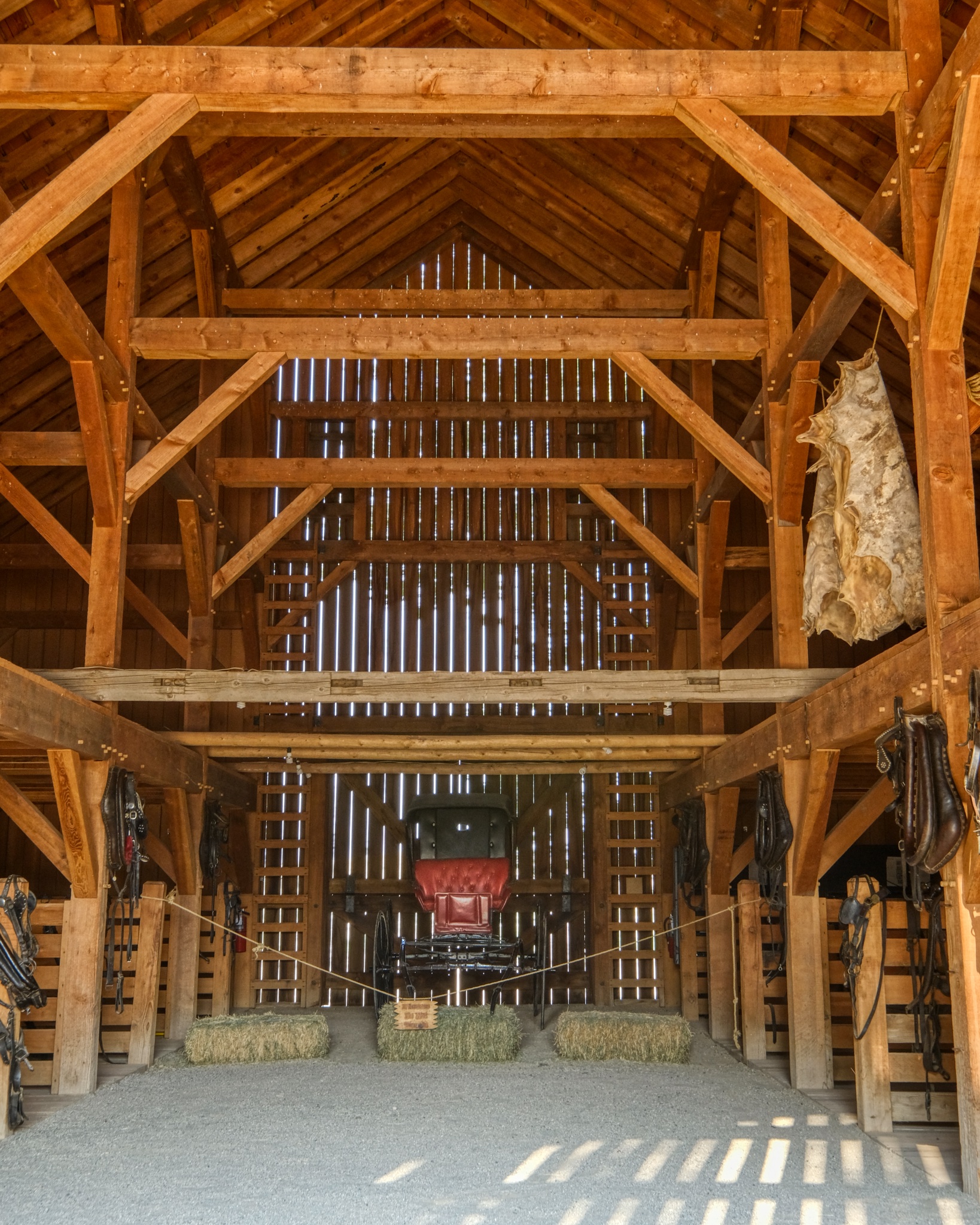 The interior of the big barn had displays of period items, well, related to barns.
The interior of the big barn had displays of period items, well, related to barns.
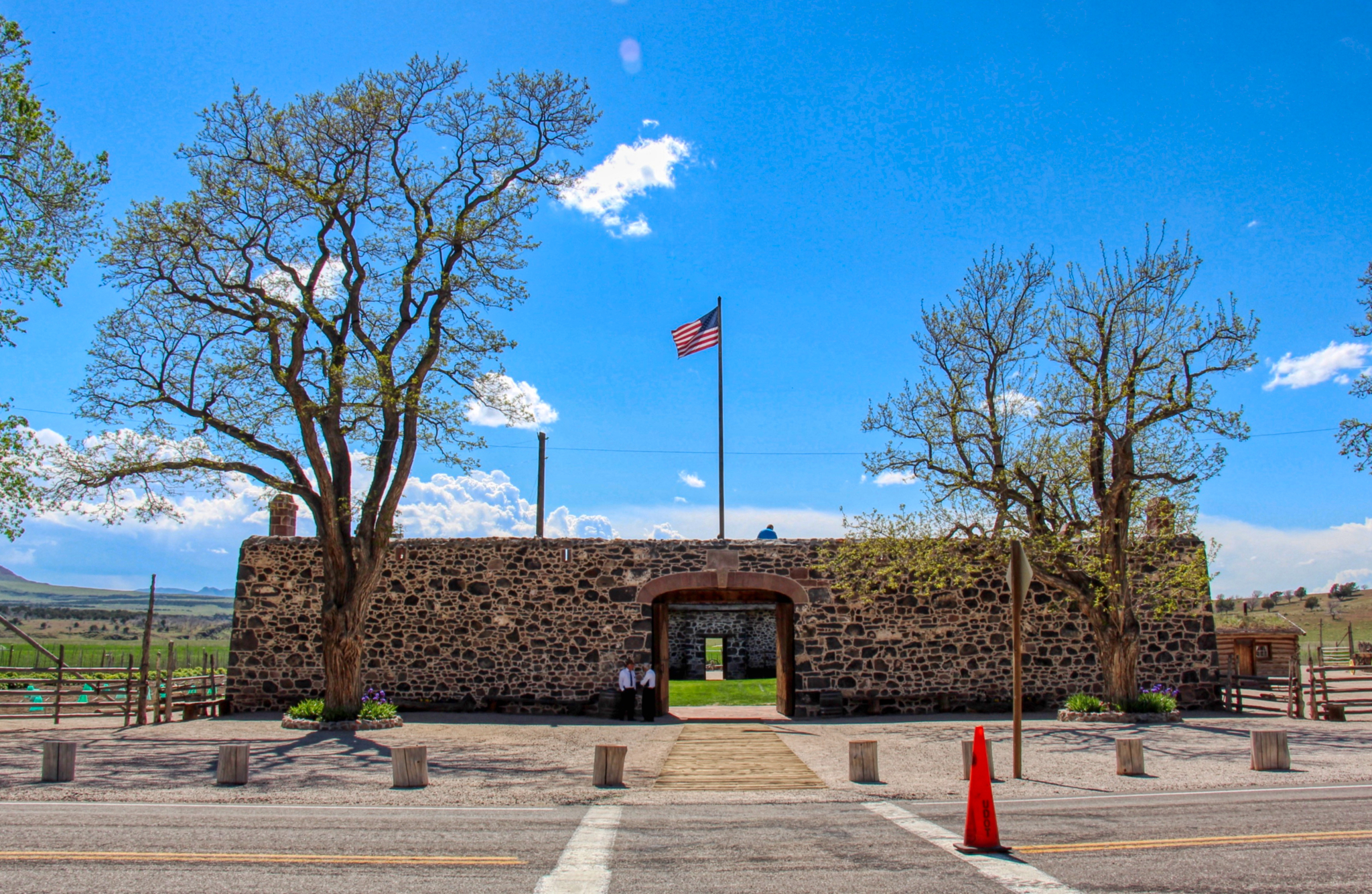 Fort Cove, Utah (Photo from Wikipedia)
Fort Cove, Utah (Photo from Wikipedia)
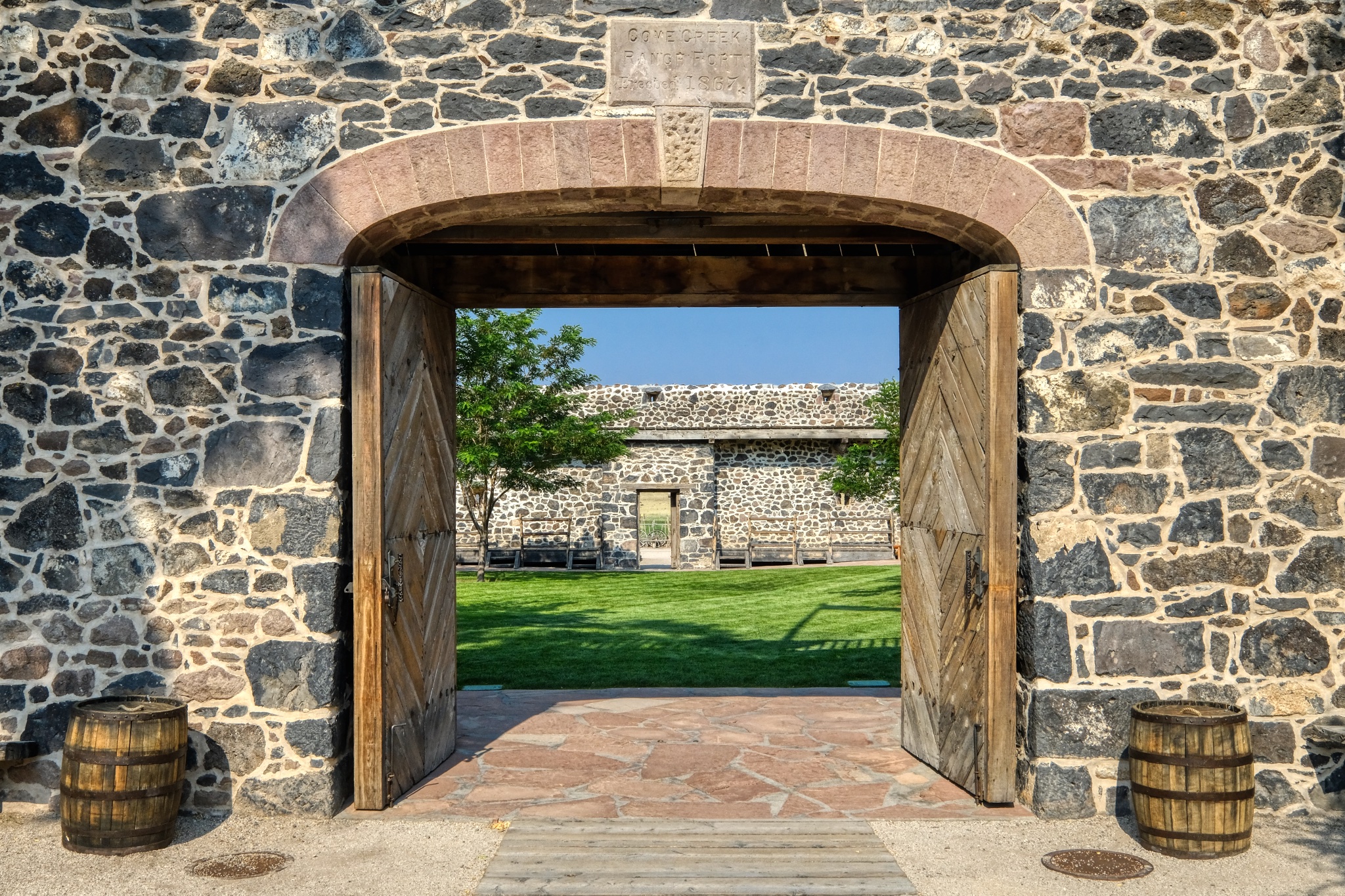 The 1867 Fort Cove gate.
The 1867 Fort Cove gate.
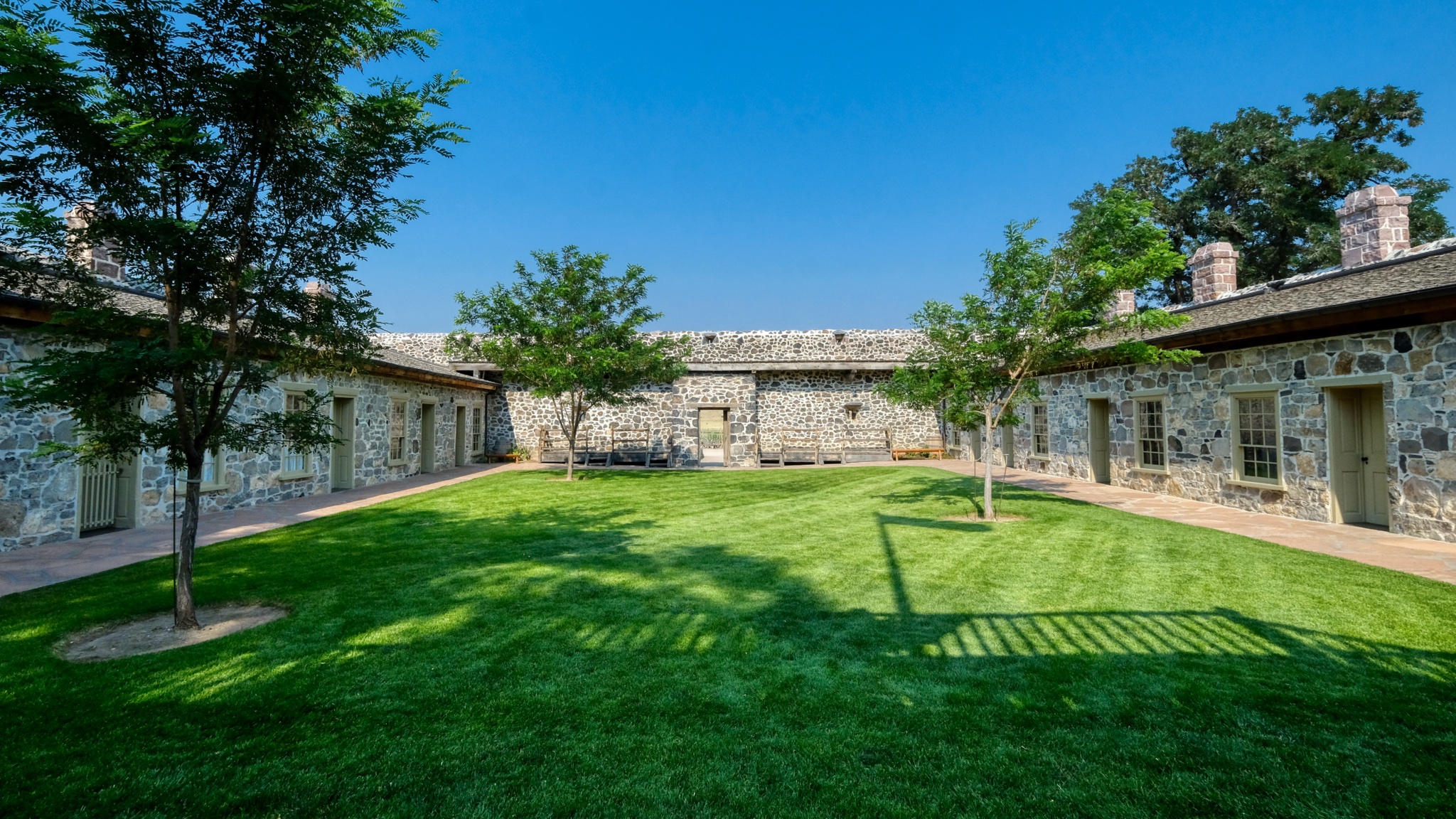 I was surprised by the verdant green, lush lawn in the fort's inner courtyard. Imagine how wonderful this would have been to the soldiers posted here and the passing visitors in their covered wagons!
I was surprised by the verdant green, lush lawn in the fort's inner courtyard. Imagine how wonderful this would have been to the soldiers posted here and the passing visitors in their covered wagons!
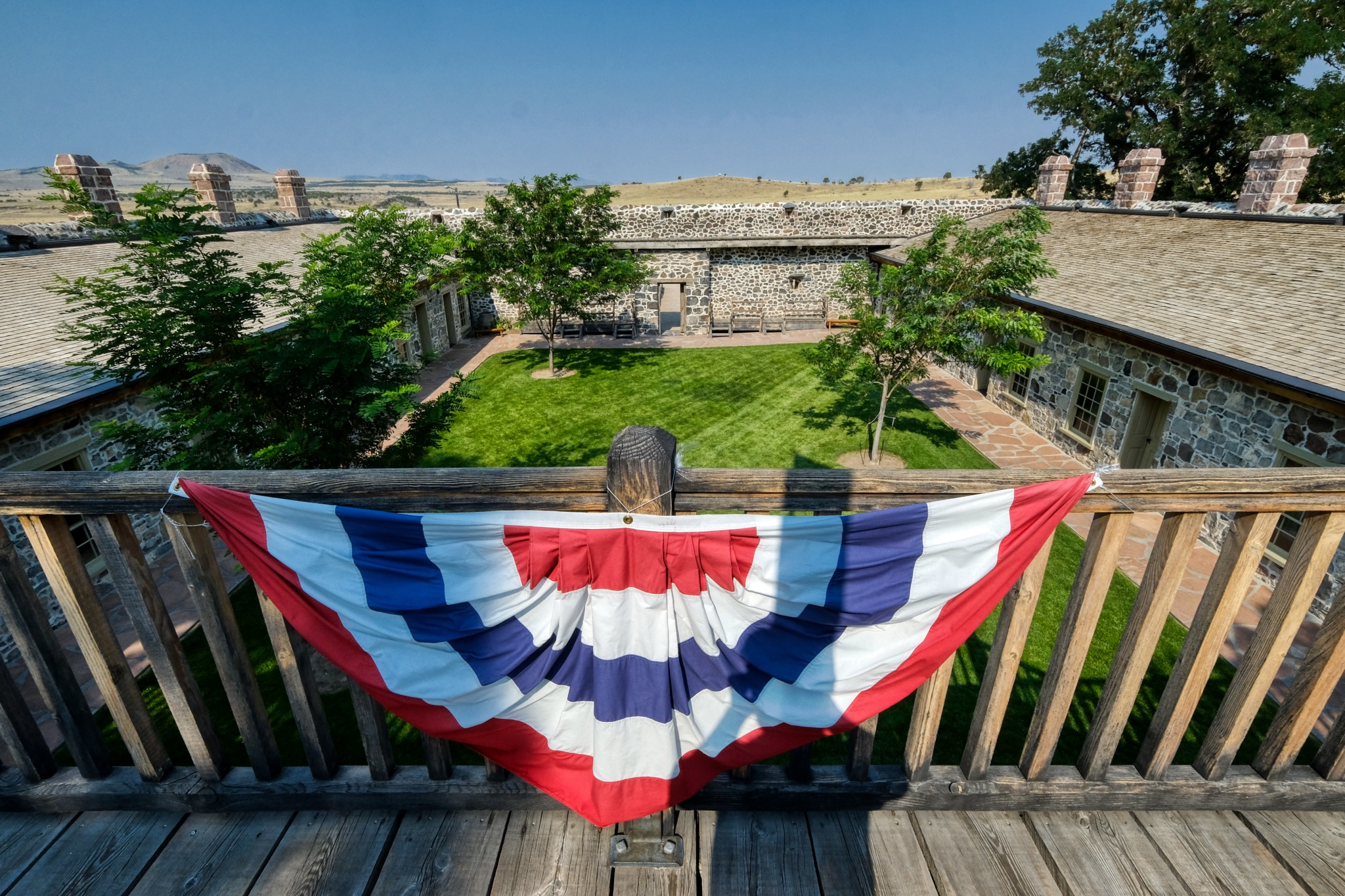 We went up the stairs to the roof of the fort for the view.
We went up the stairs to the roof of the fort for the view.
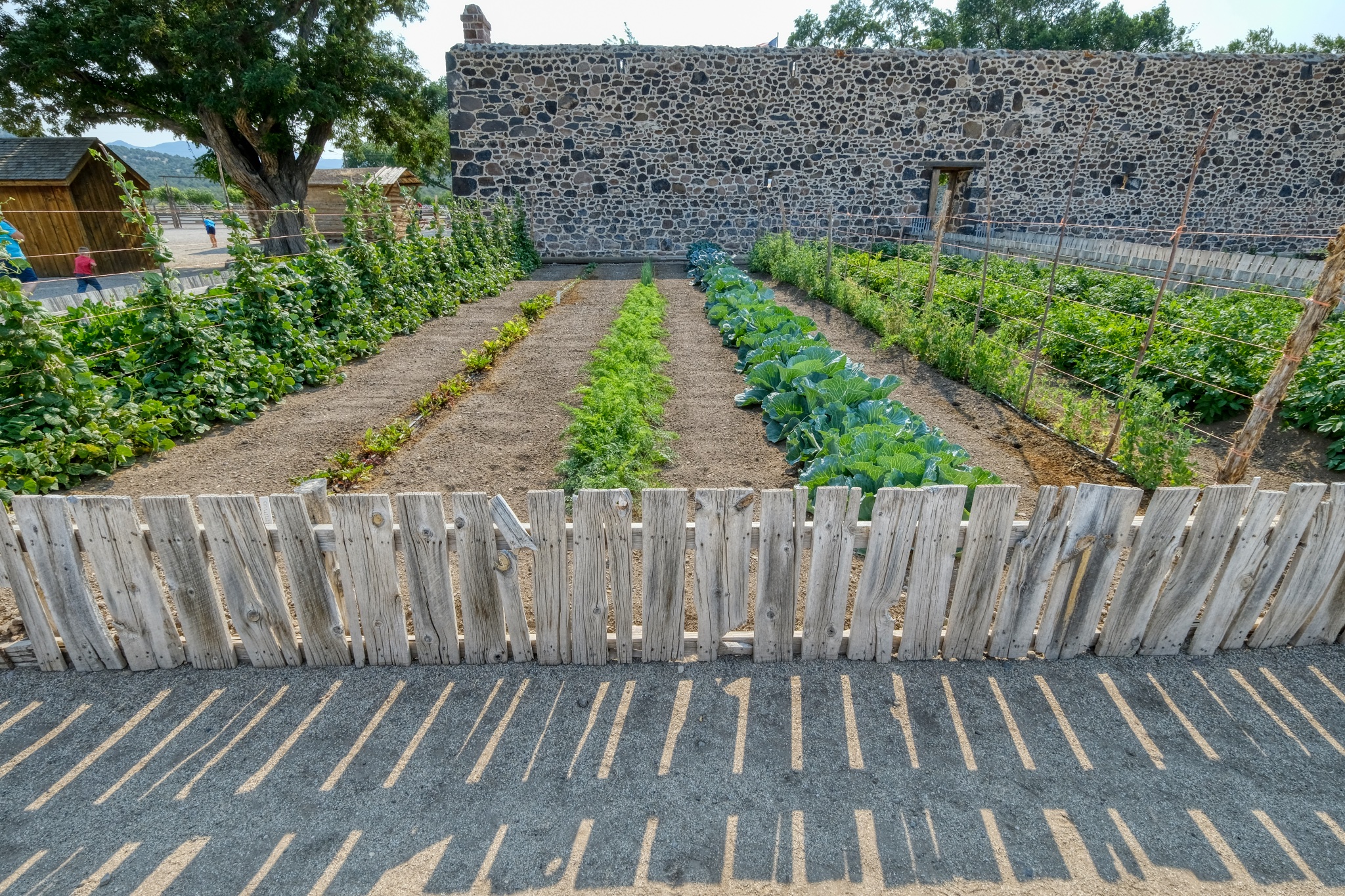 Behind the fort was the vegetable garden.
Behind the fort was the vegetable garden.
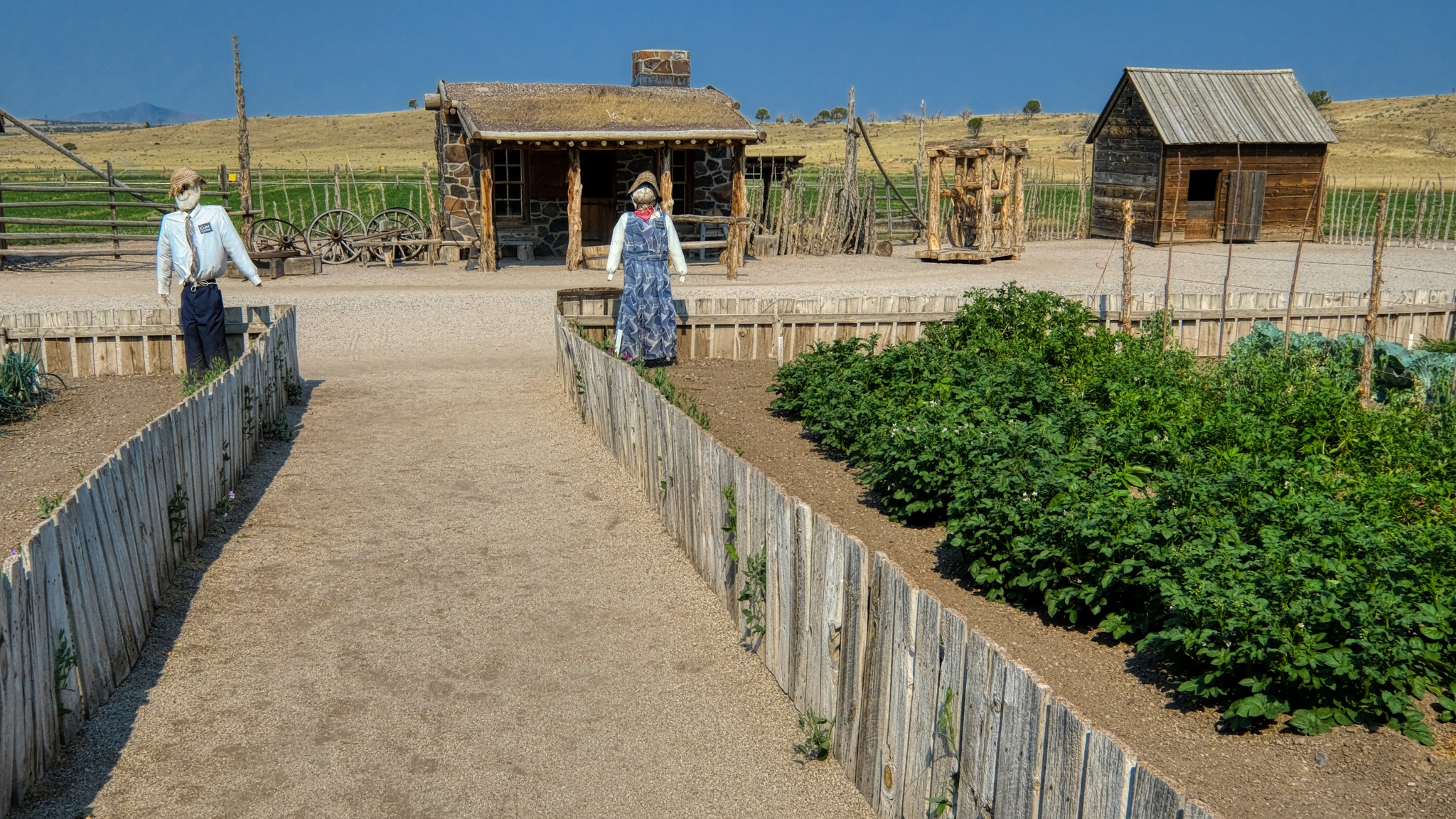 The garden path leading to displays of various Mormon settler shacks, sheds, and cabins that were trucked to the site and restored.
The garden path leading to displays of various Mormon settler shacks, sheds, and cabins that were trucked to the site and restored.
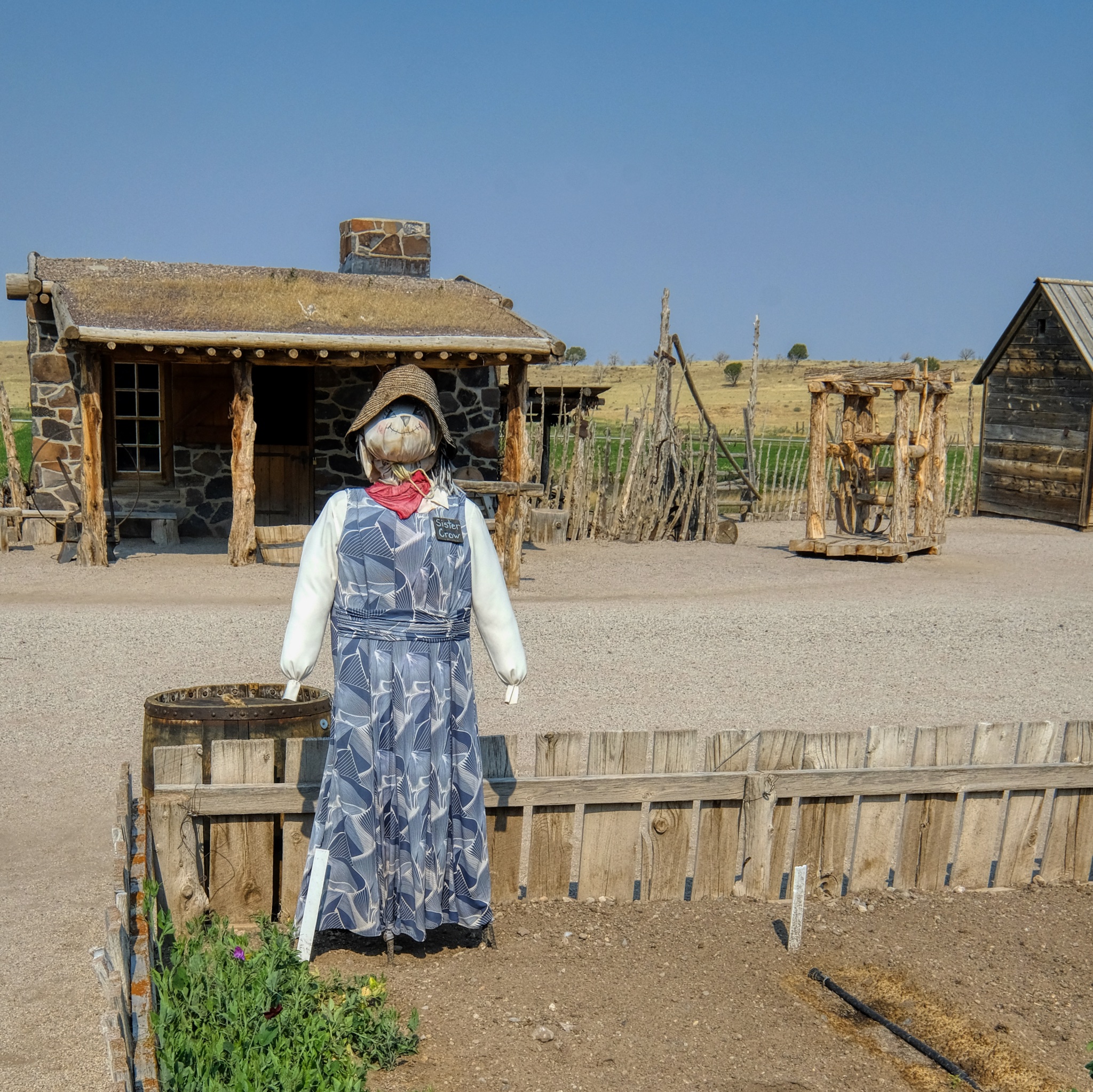 A superb scarecrow!
A superb scarecrow!
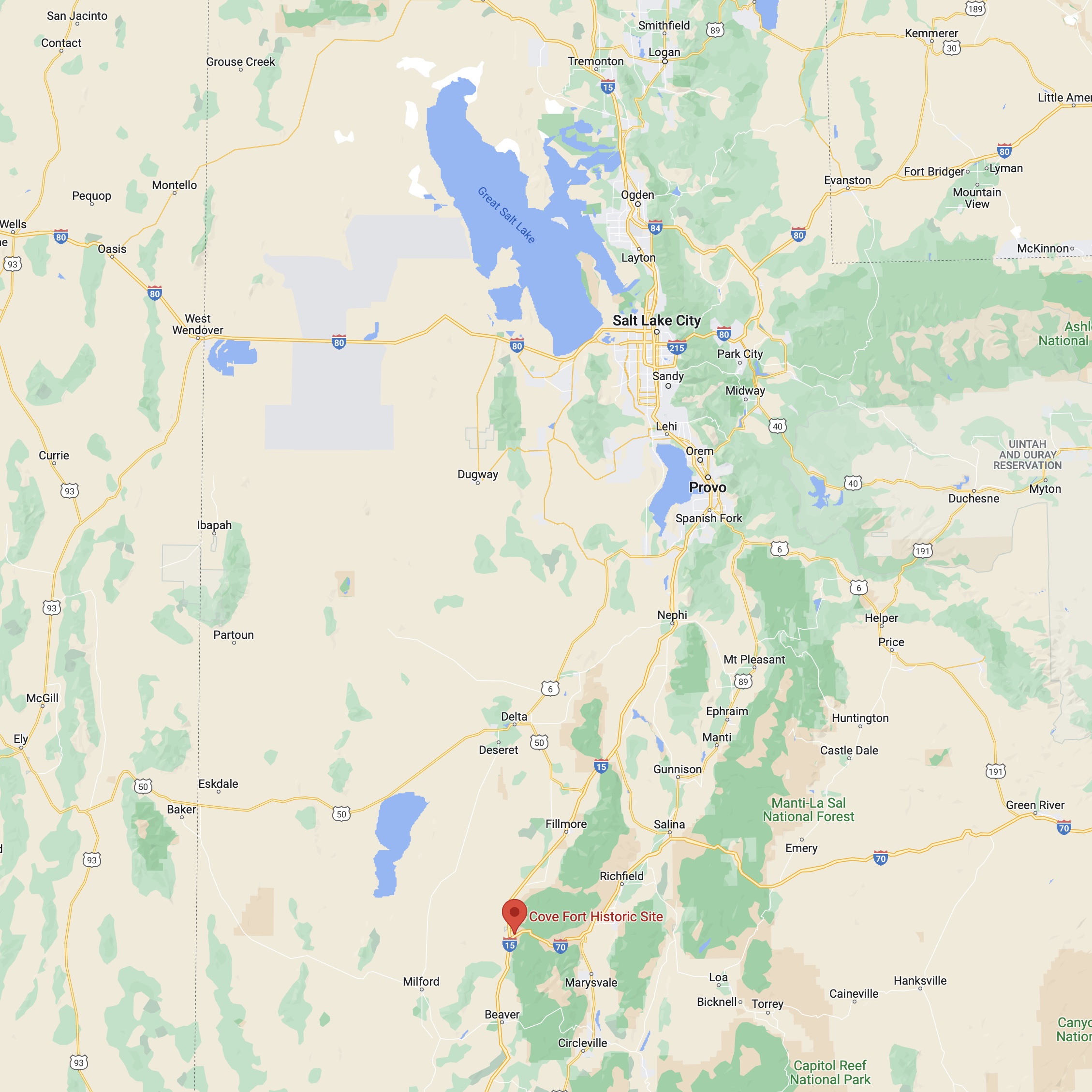
Then back out on the highway I-15 north . . . and an Allison Krauss and Willy Nelson concert in Bend, Oregon!!!
USA Road Trip: Collier Logging Museum, Oregon
 Sunday, February 6, 2022 at 2:51PM
Sunday, February 6, 2022 at 2:51PM 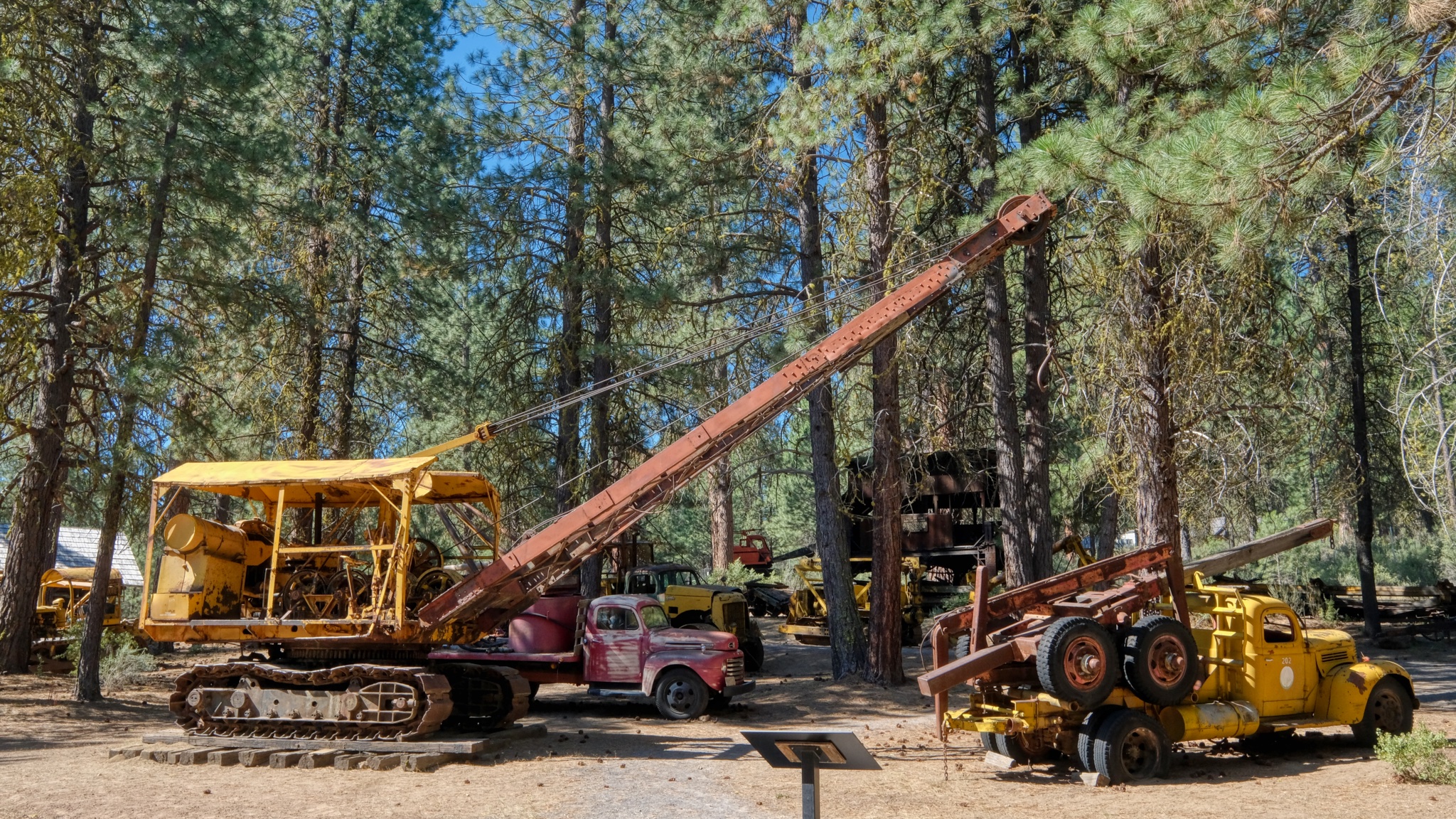 Heading south on old highway US97 -- taking the long way from Bend, Oregon to Lake Tahoe, California -- we happened upon the Collier Logging Museum. Of course I had to stop.
Heading south on old highway US97 -- taking the long way from Bend, Oregon to Lake Tahoe, California -- we happened upon the Collier Logging Museum. Of course I had to stop.
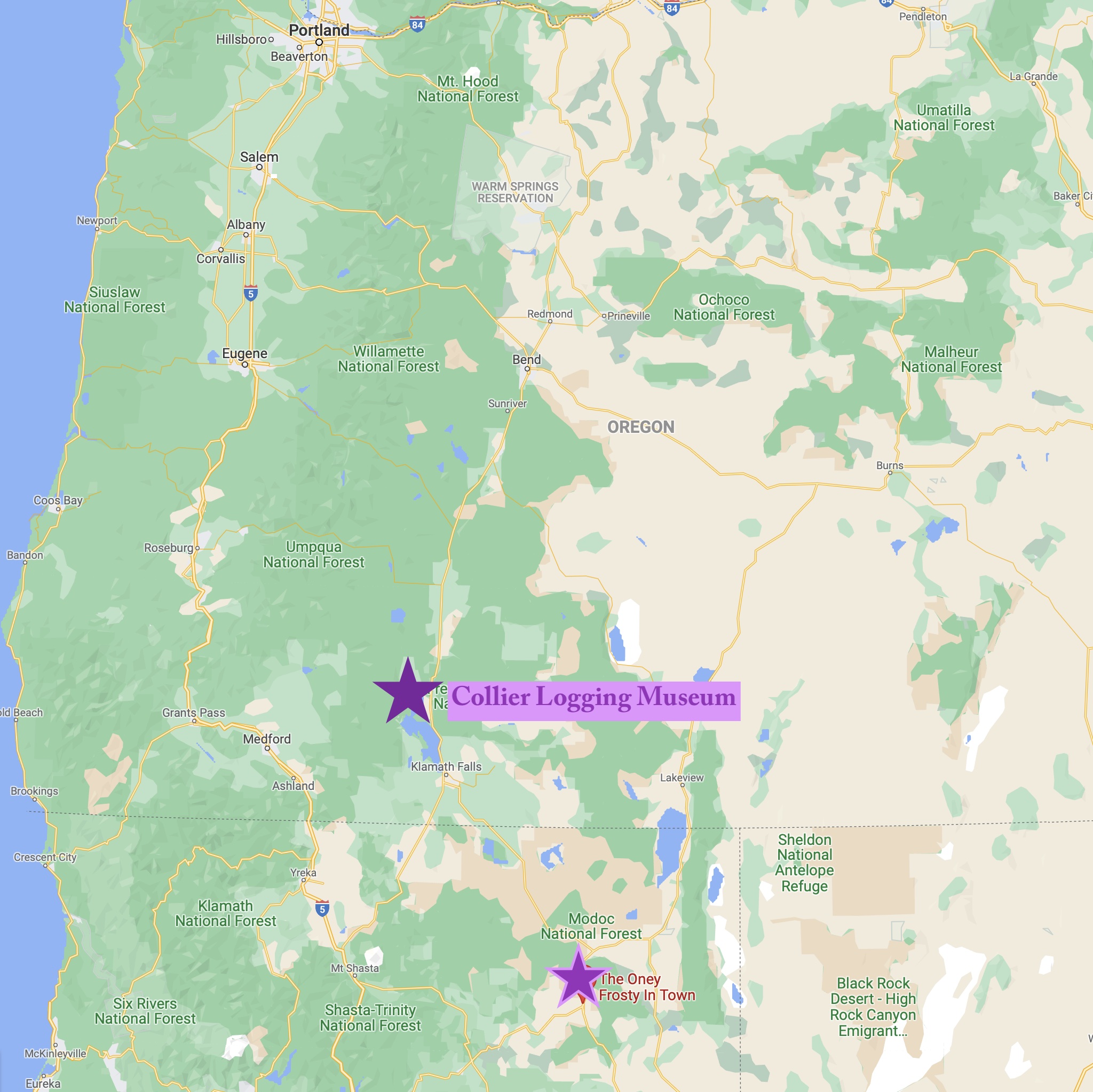 In southern Oregon, not too far from the California boarder . . . The Collier Logging Museum.
In southern Oregon, not too far from the California boarder . . . The Collier Logging Museum.
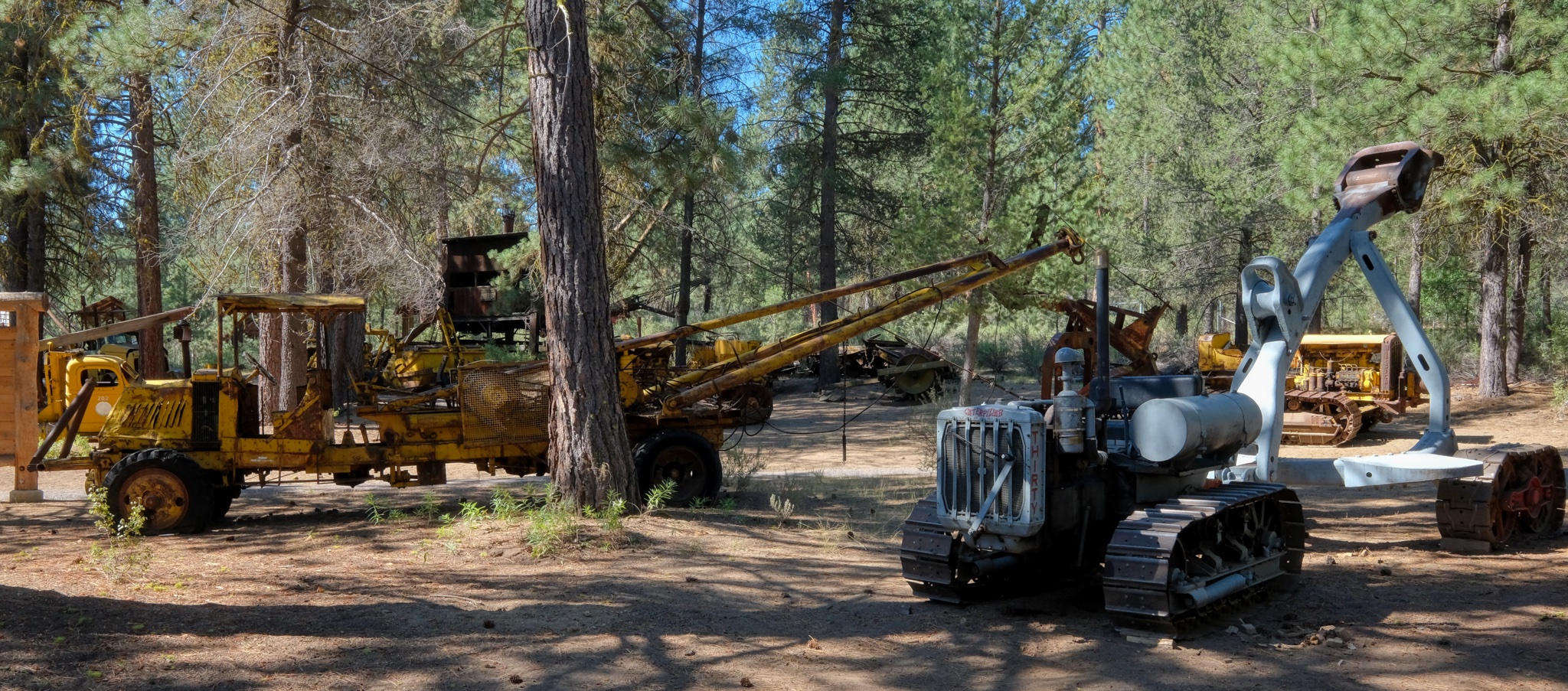 I HAD to stop. I love these old machines . . .
I HAD to stop. I love these old machines . . .
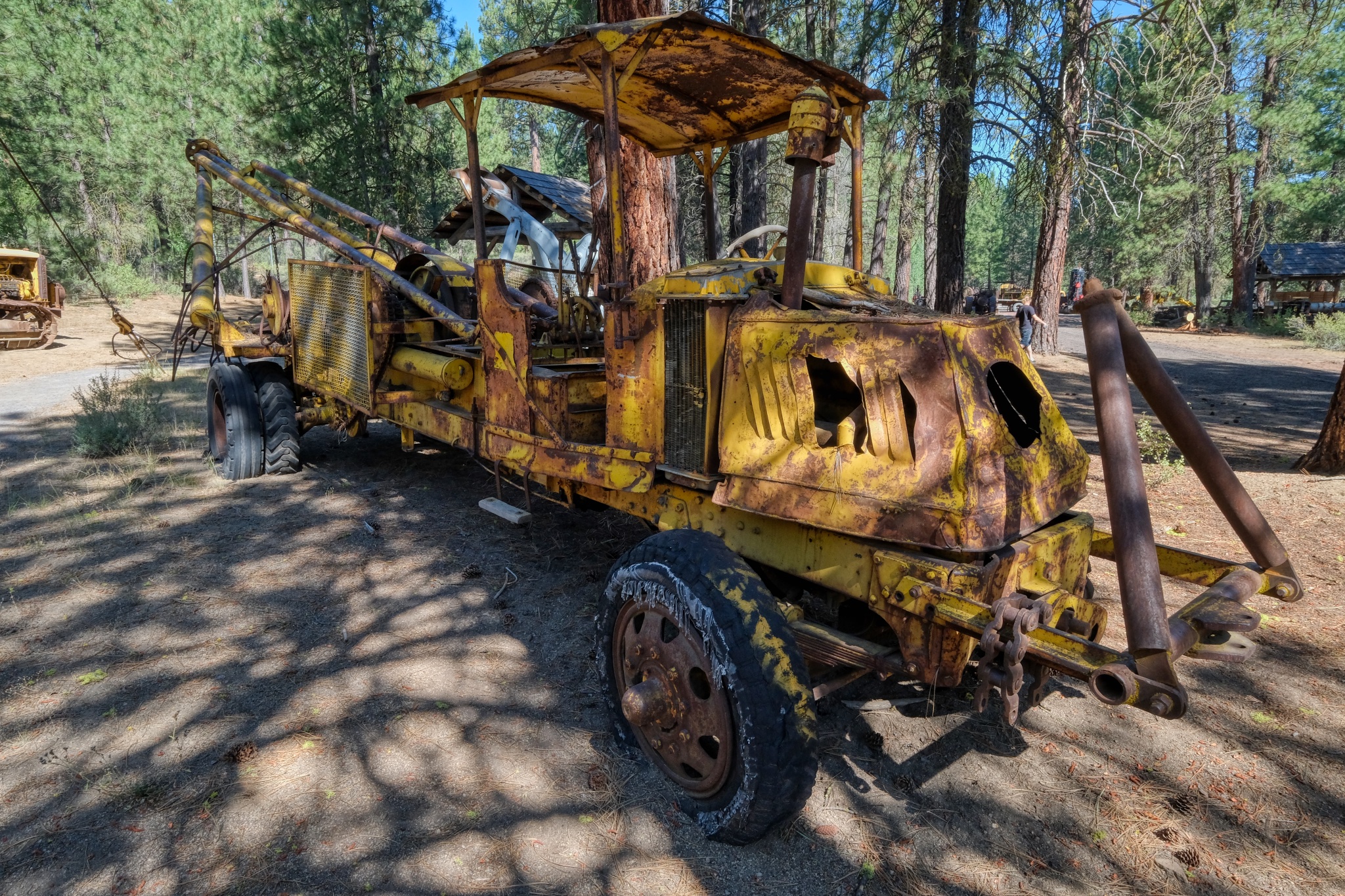 As a child I loved trucks of all kinds.
As a child I loved trucks of all kinds.
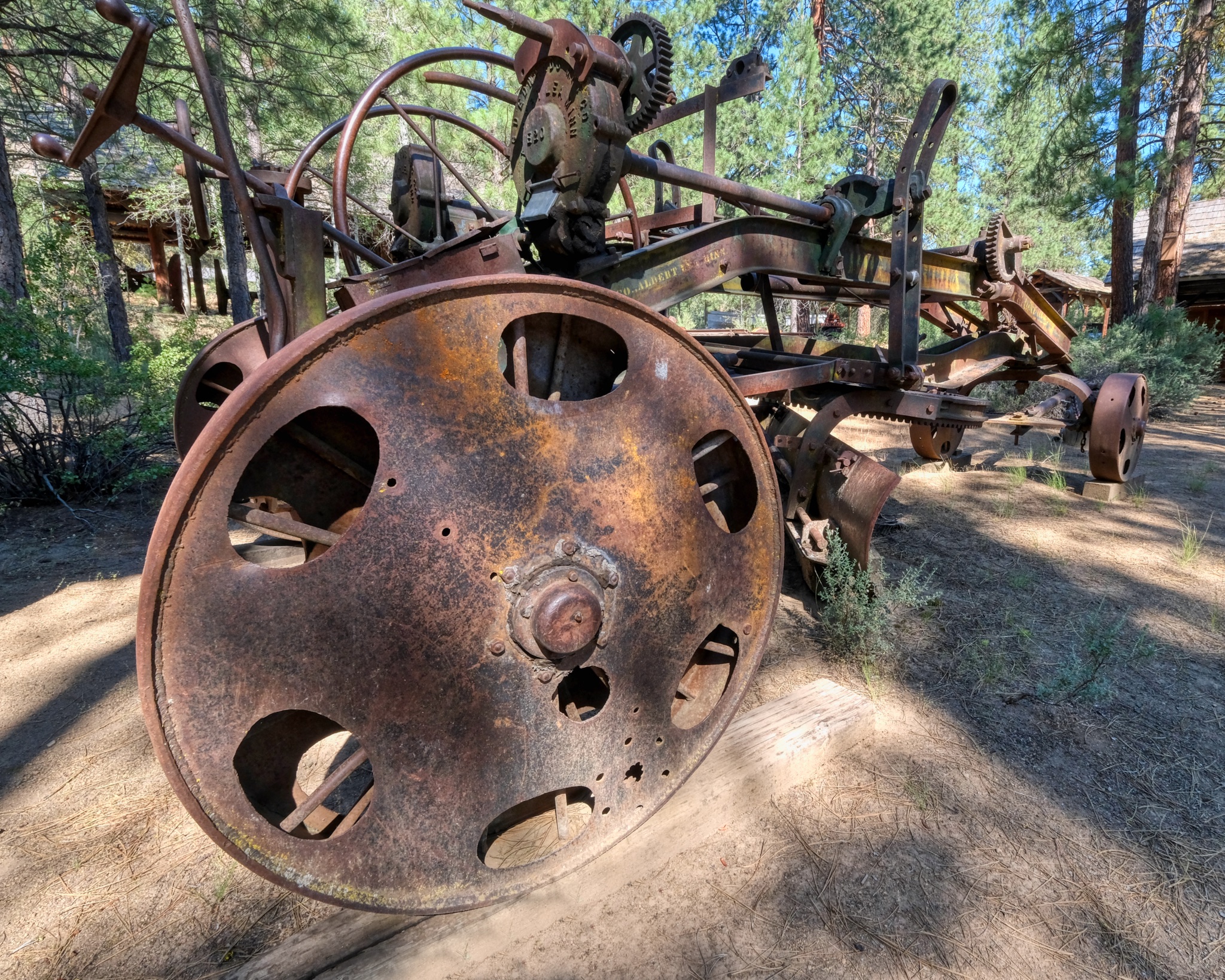 Giant steel wheels on this ancient road grader meant to be towed by a bulldozer.
Giant steel wheels on this ancient road grader meant to be towed by a bulldozer.
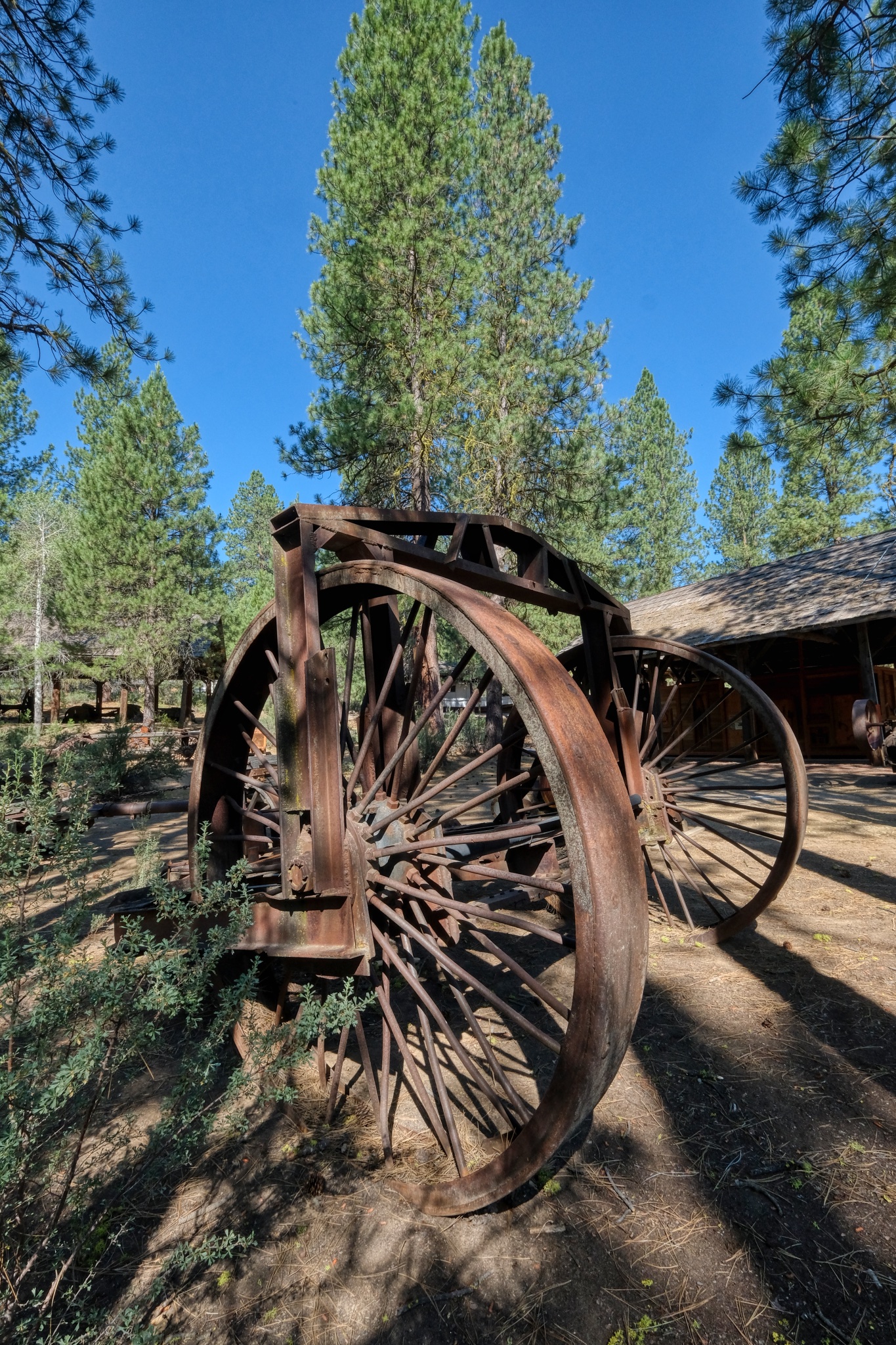 A pull along log skidder, also pulled by a bulldozer.
A pull along log skidder, also pulled by a bulldozer.
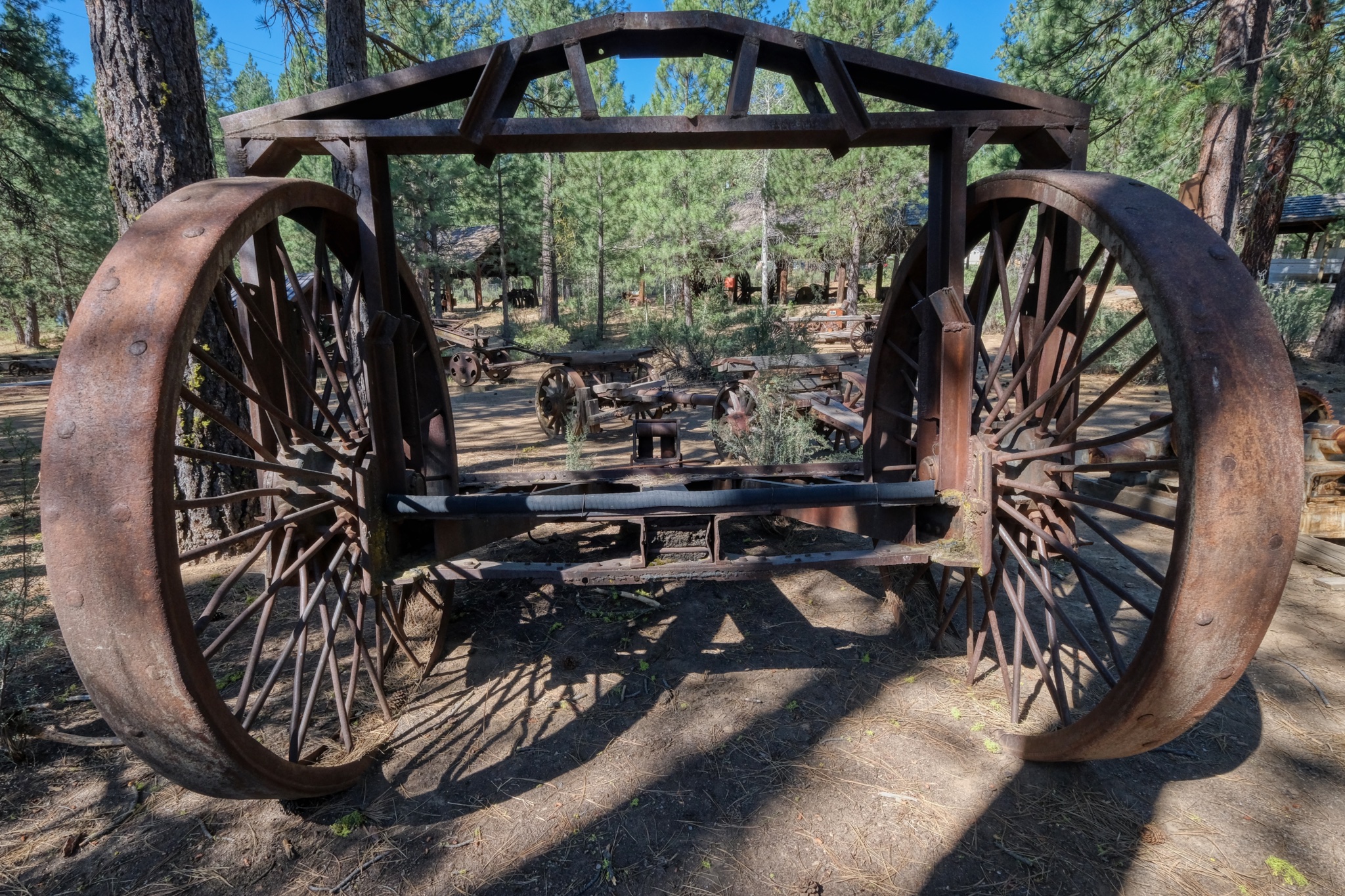 The front of a giant log would be lifted by this rig and then the other end dragged ("skidded") along in the forest floor.
The front of a giant log would be lifted by this rig and then the other end dragged ("skidded") along in the forest floor.
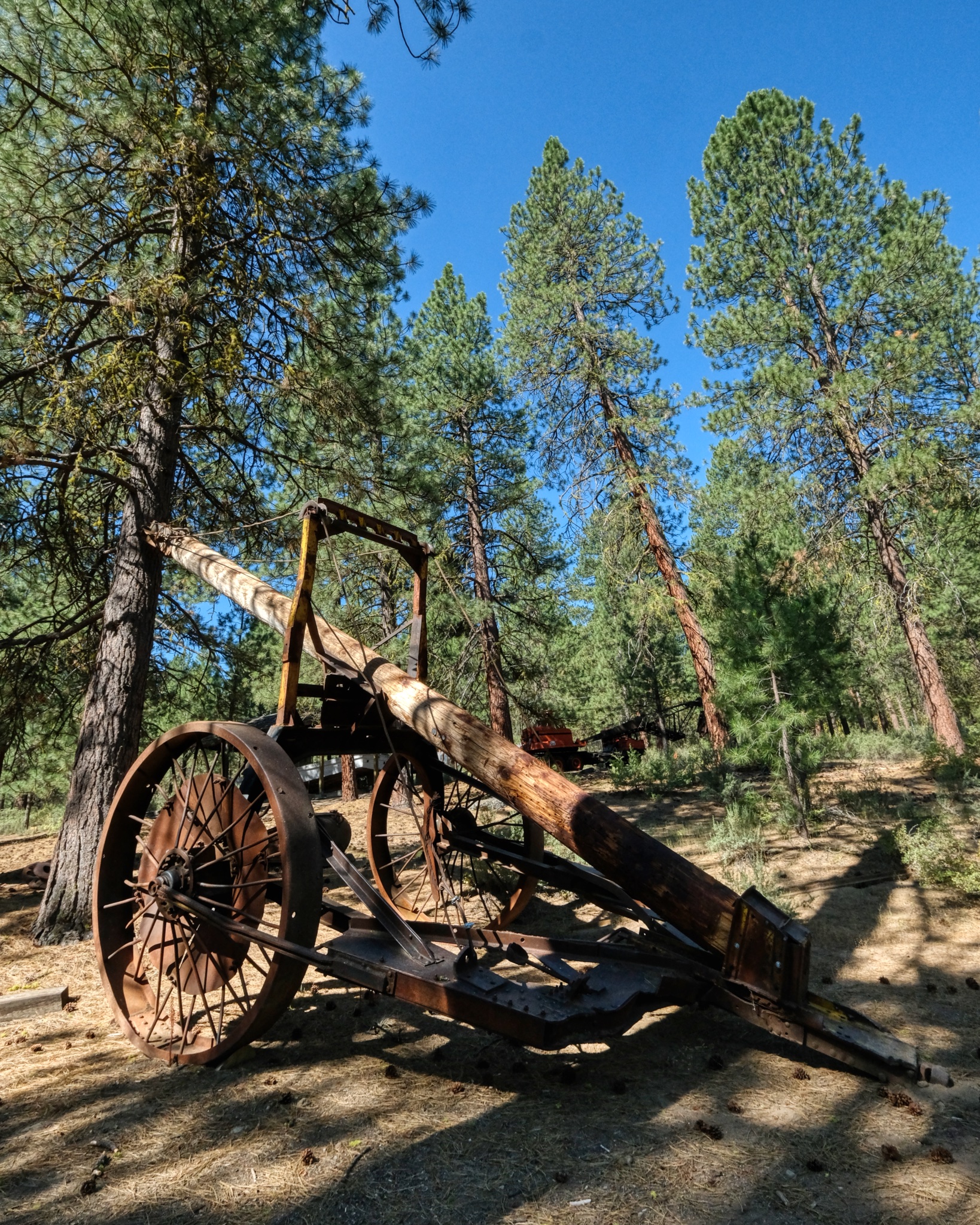 Another approach for skidding logs . . . .
Another approach for skidding logs . . . .
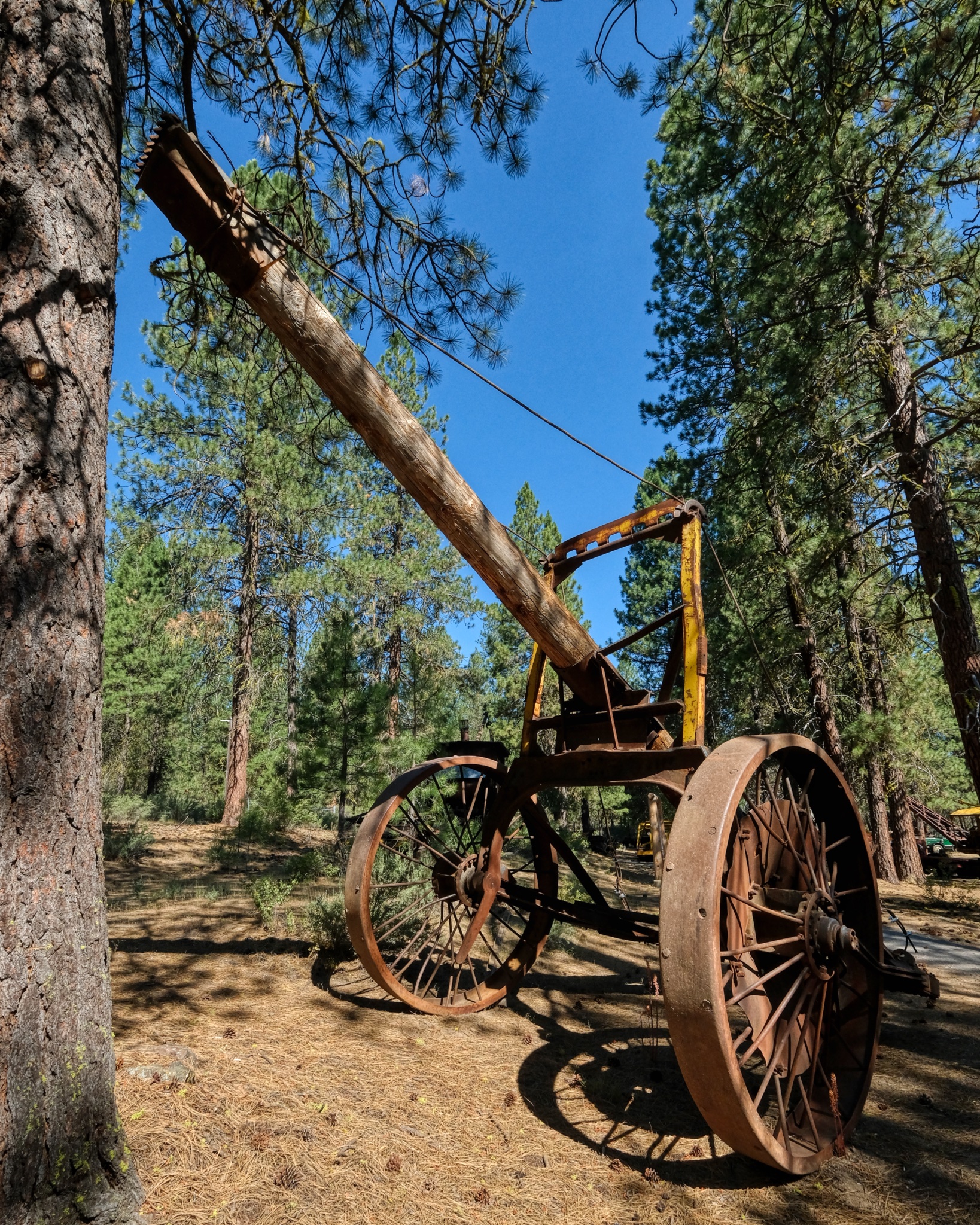 The front of a log, or logs, were lifted and then skidded out of the forest to a roadhead for loading on trucks, or small gauge rail systems.
The front of a log, or logs, were lifted and then skidded out of the forest to a roadhead for loading on trucks, or small gauge rail systems.
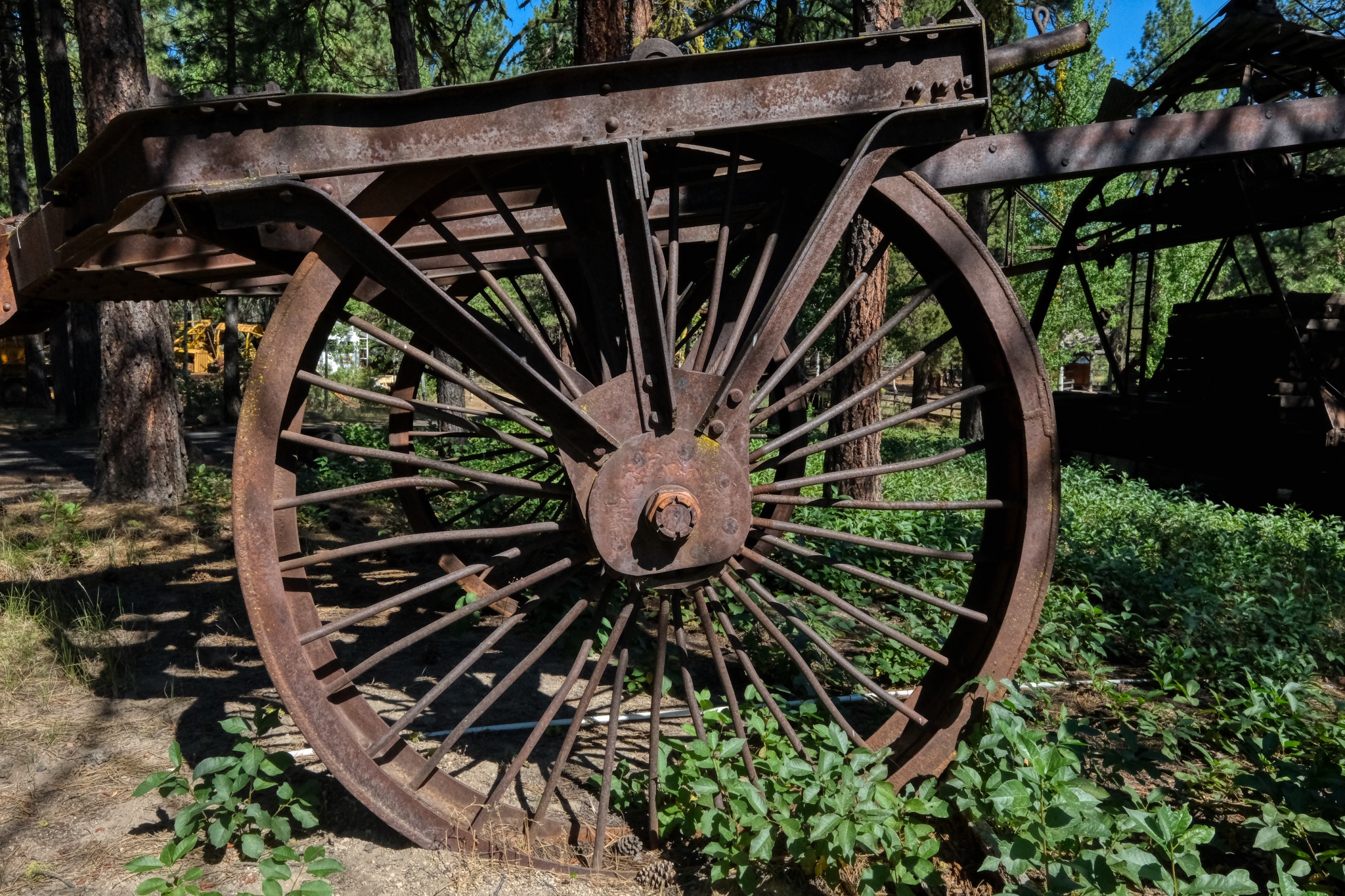 There were many of the large iron-wheeled wagons sitting out in the forest of the museum.
There were many of the large iron-wheeled wagons sitting out in the forest of the museum.
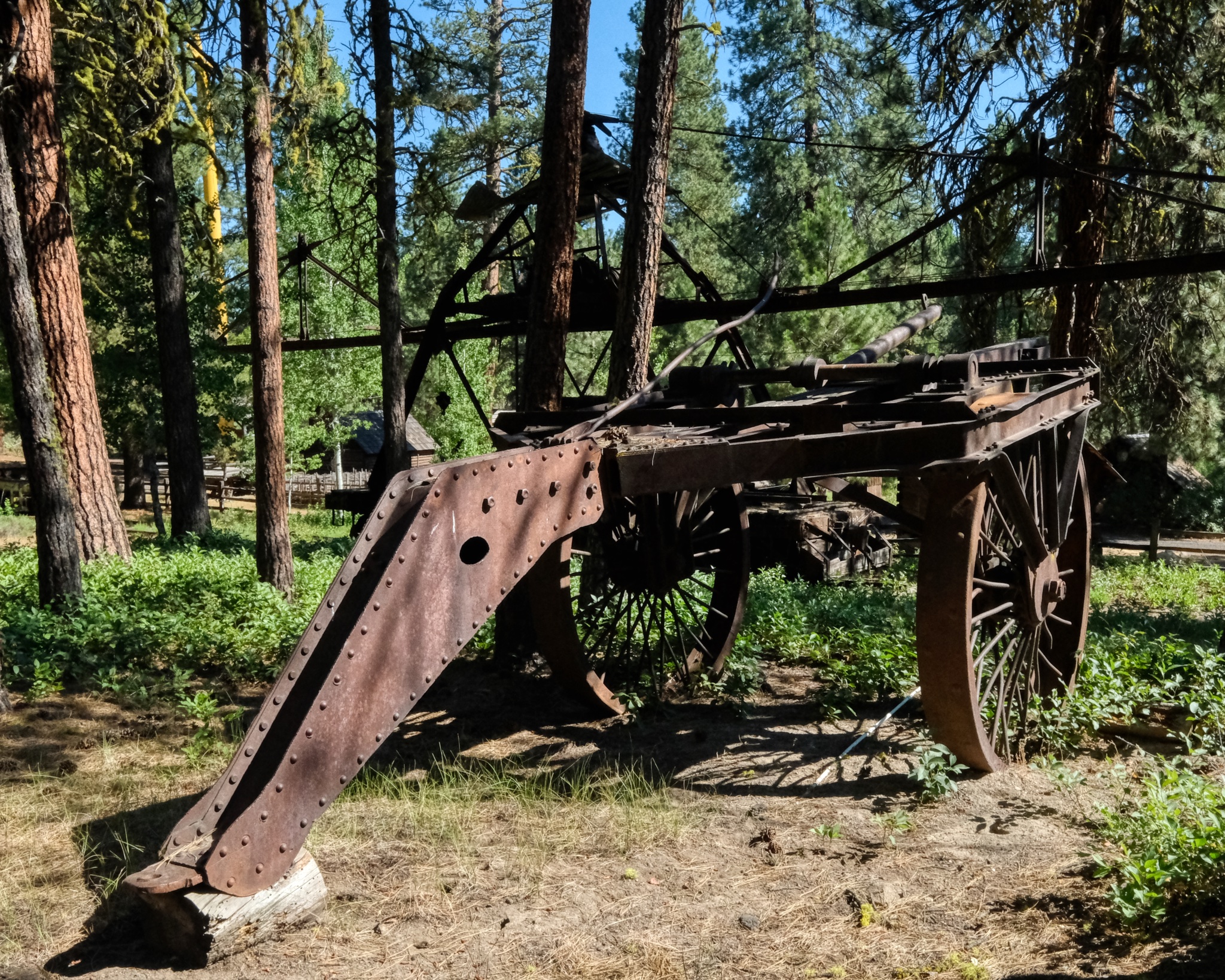 Big wagons for big work in the big forests of Oregon.
Big wagons for big work in the big forests of Oregon.
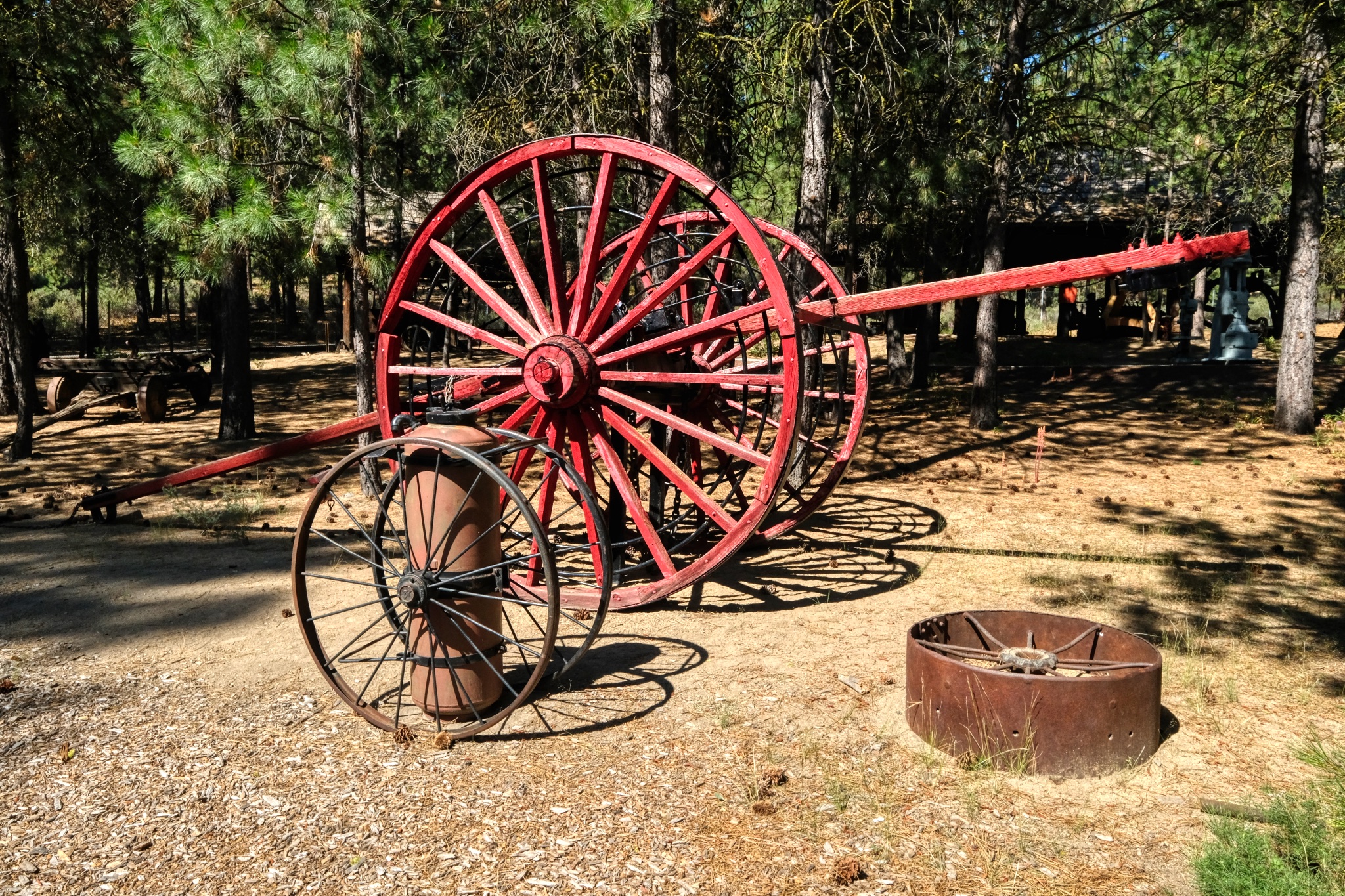 Big red wagon wheel . . . .
Big red wagon wheel . . . .
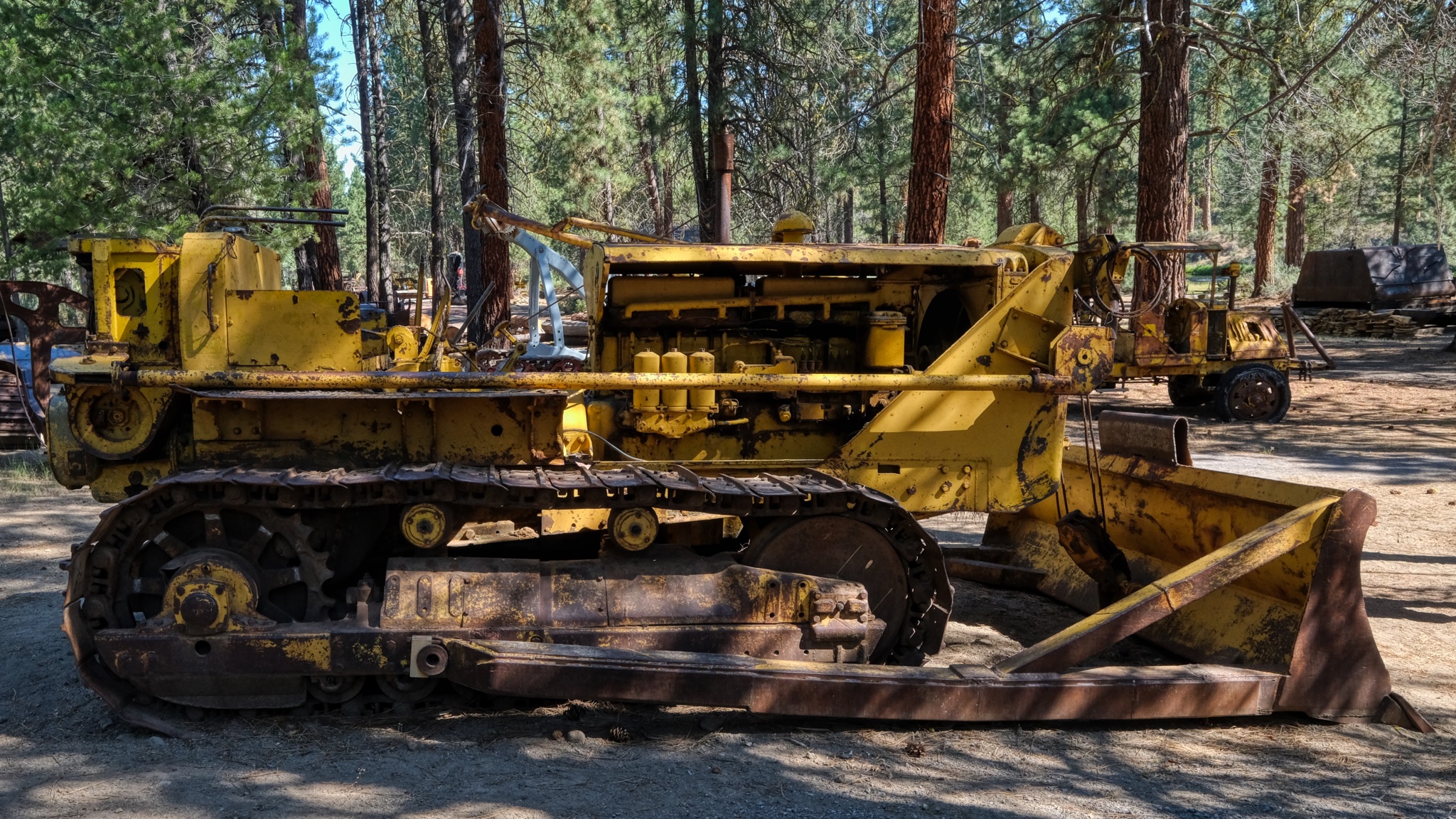 One can imagine an old dozer chugging through the forest pulling one of these steel-wheeled skidders.
One can imagine an old dozer chugging through the forest pulling one of these steel-wheeled skidders.
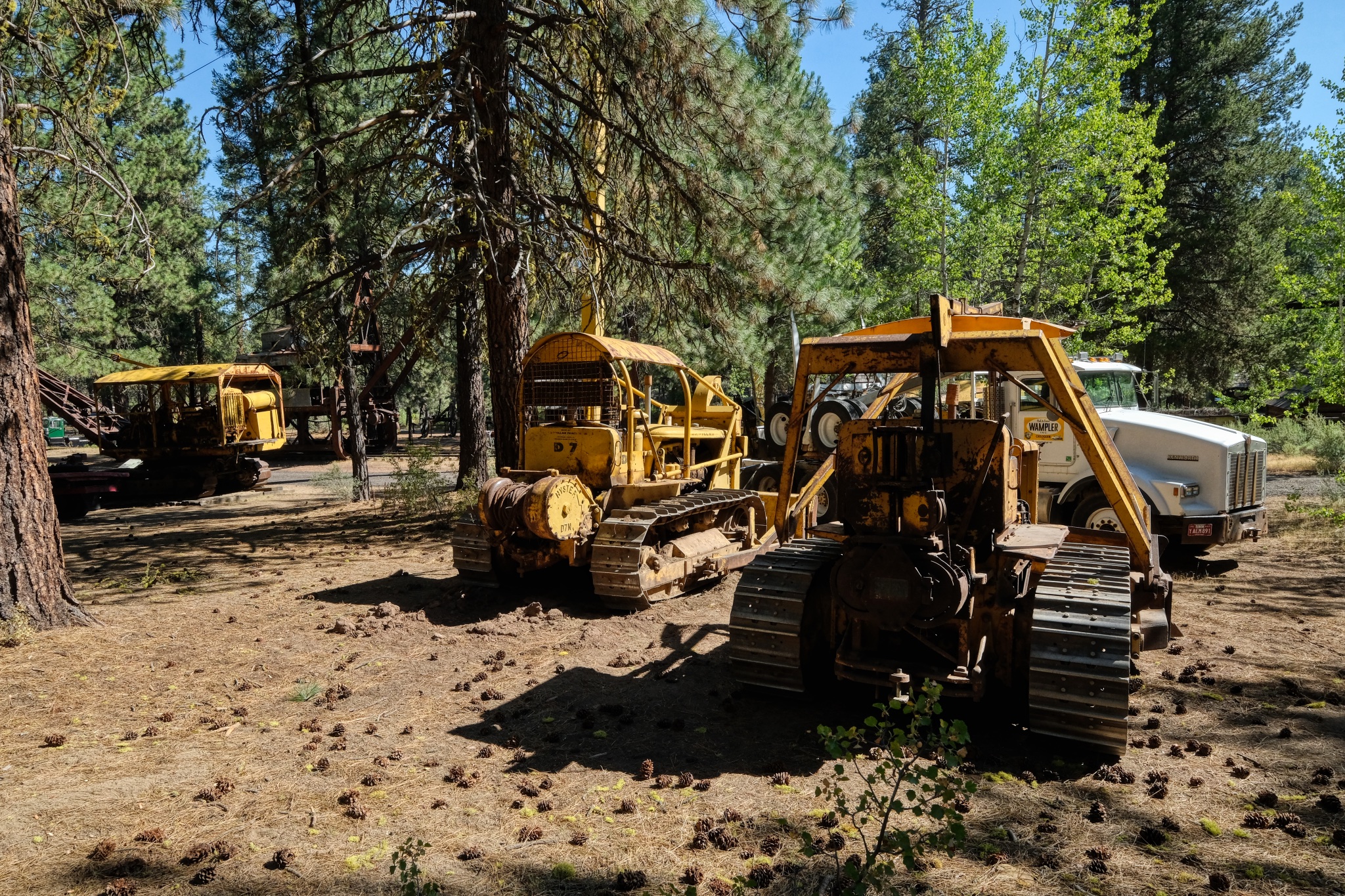 There were many old dozers sitting around in the pine straw.
There were many old dozers sitting around in the pine straw.
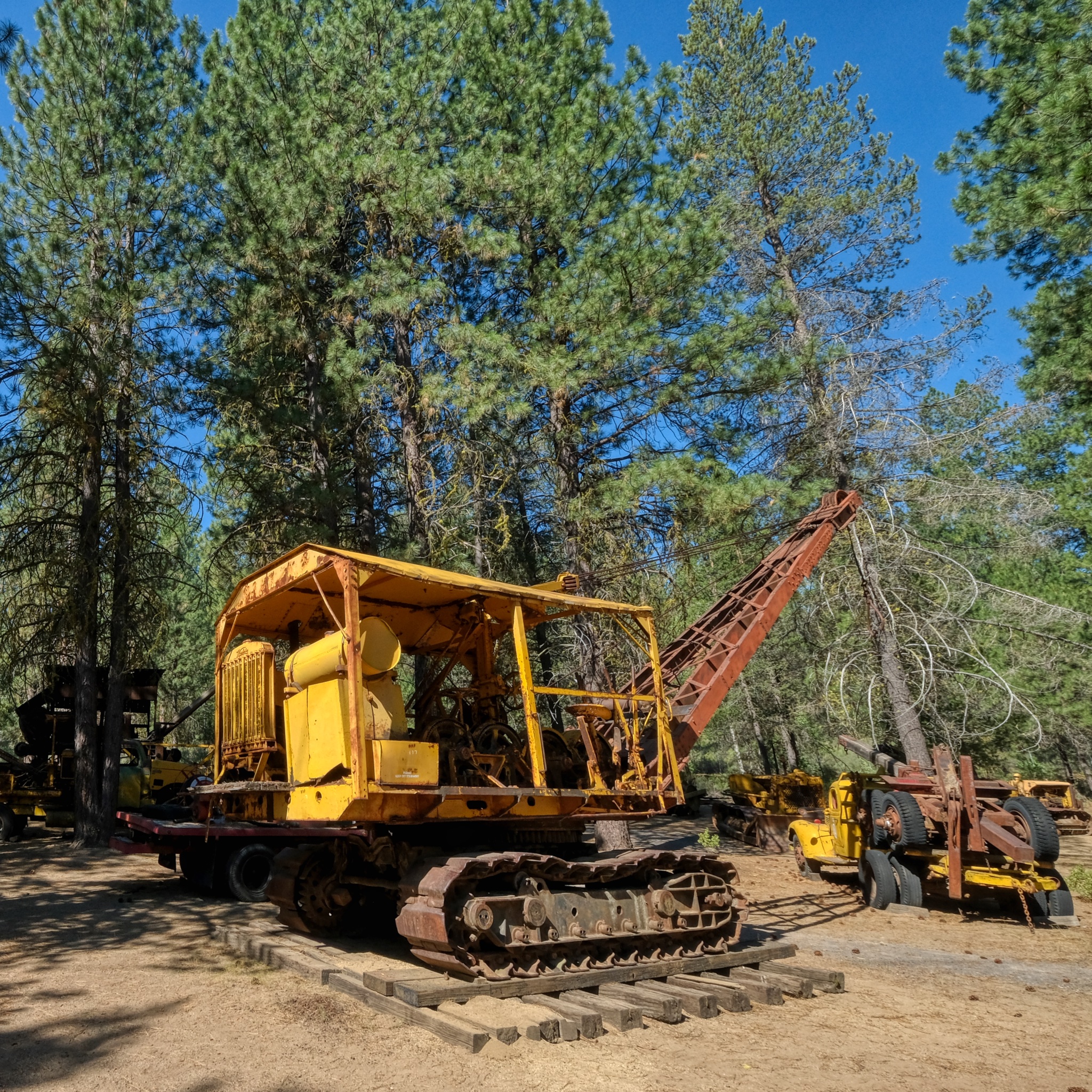 Once the logs had been skidded to a landing, a crane, perhaps like this one, would load the logs onto trucks or a rail car.
Once the logs had been skidded to a landing, a crane, perhaps like this one, would load the logs onto trucks or a rail car.
 Very early on, a steam powered crane/log loader would be rolled out on rails.
Very early on, a steam powered crane/log loader would be rolled out on rails.
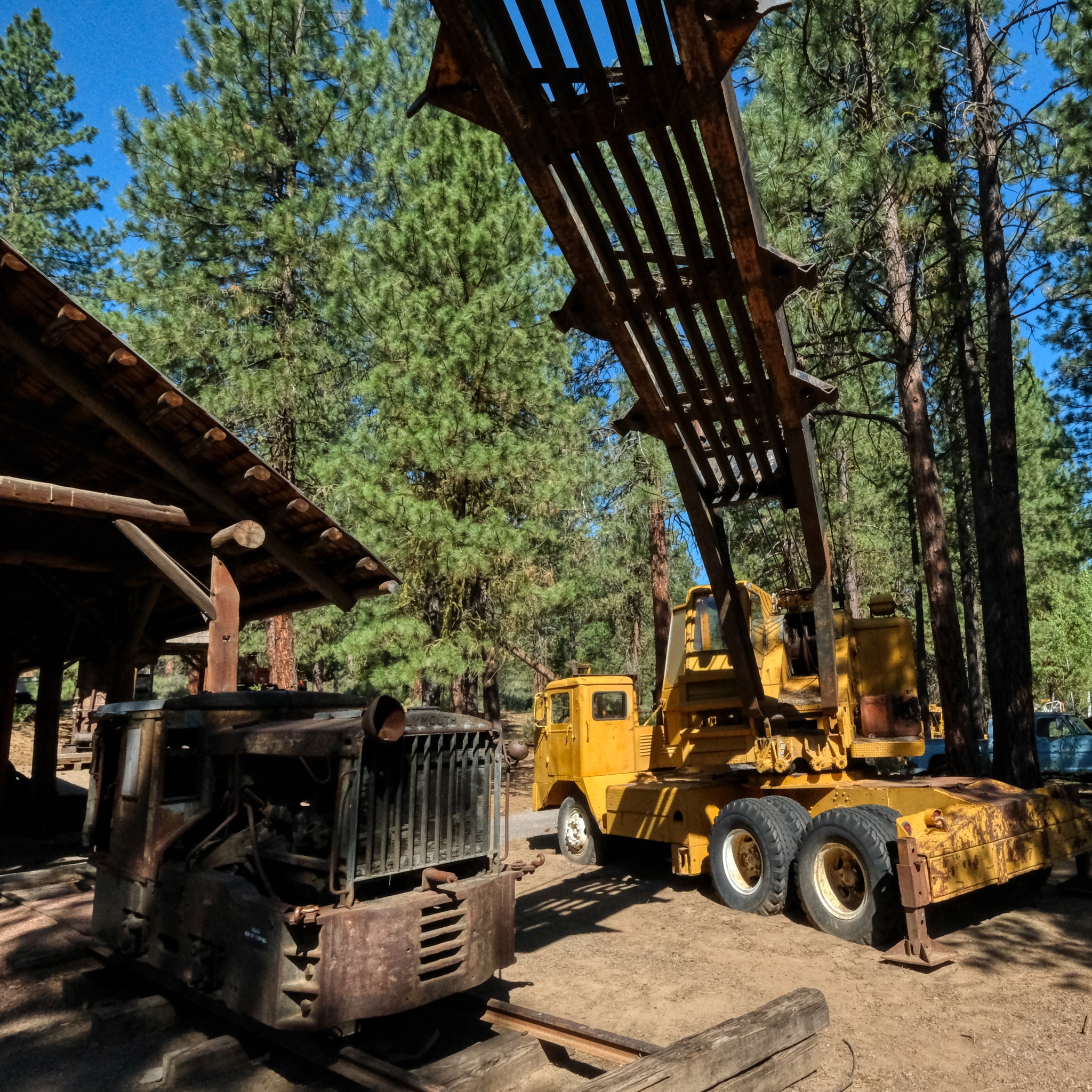 In the foreground is an old "mule" diesel locomotive used to push around cranes and other rail cars out in the logging site. By the 1950s and 60s, road worthy truck-mounted cranes, like the one in the rear, became more widely used.
In the foreground is an old "mule" diesel locomotive used to push around cranes and other rail cars out in the logging site. By the 1950s and 60s, road worthy truck-mounted cranes, like the one in the rear, became more widely used.
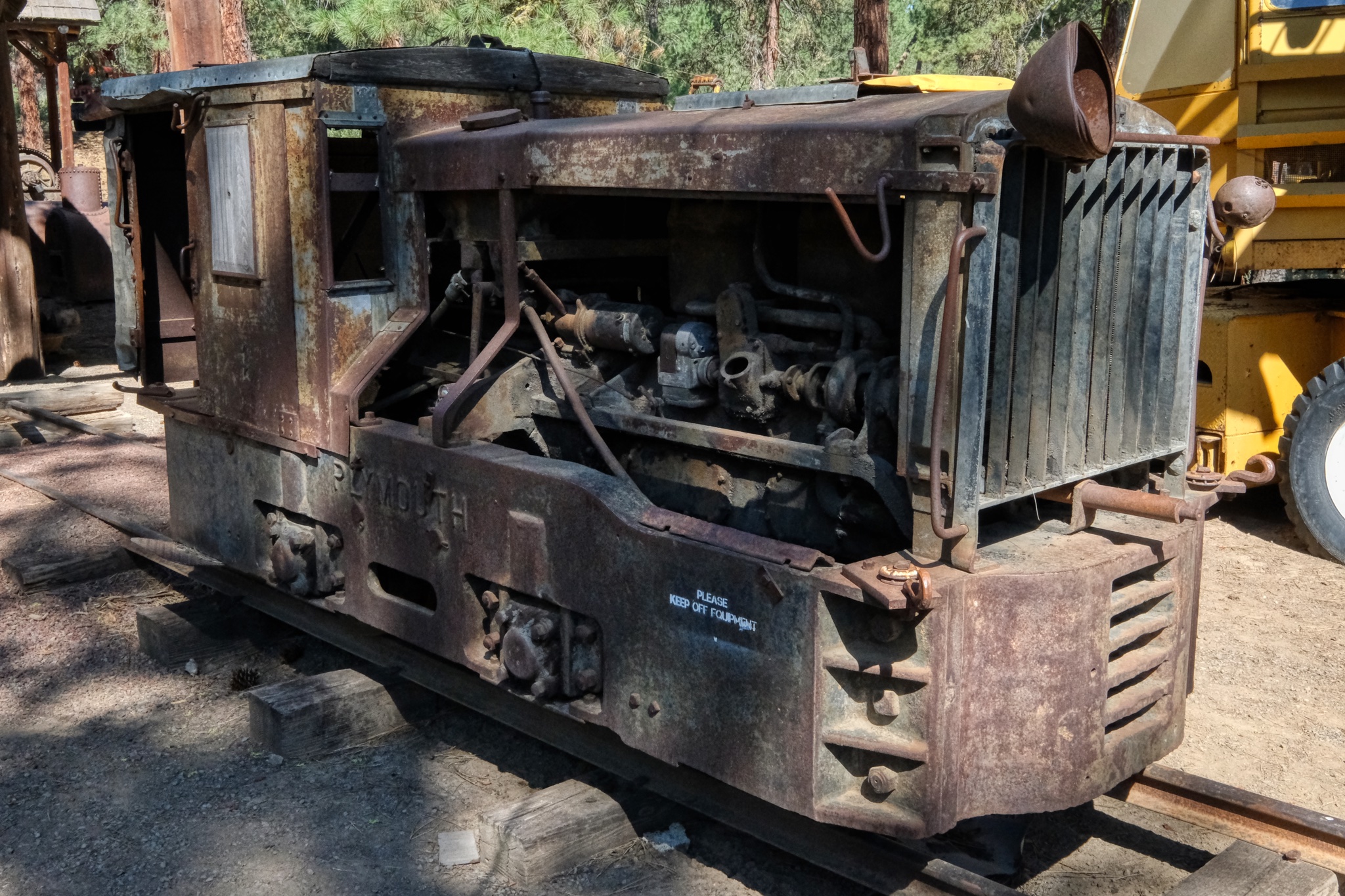 The little "mule" diesel locomotive.
The little "mule" diesel locomotive.
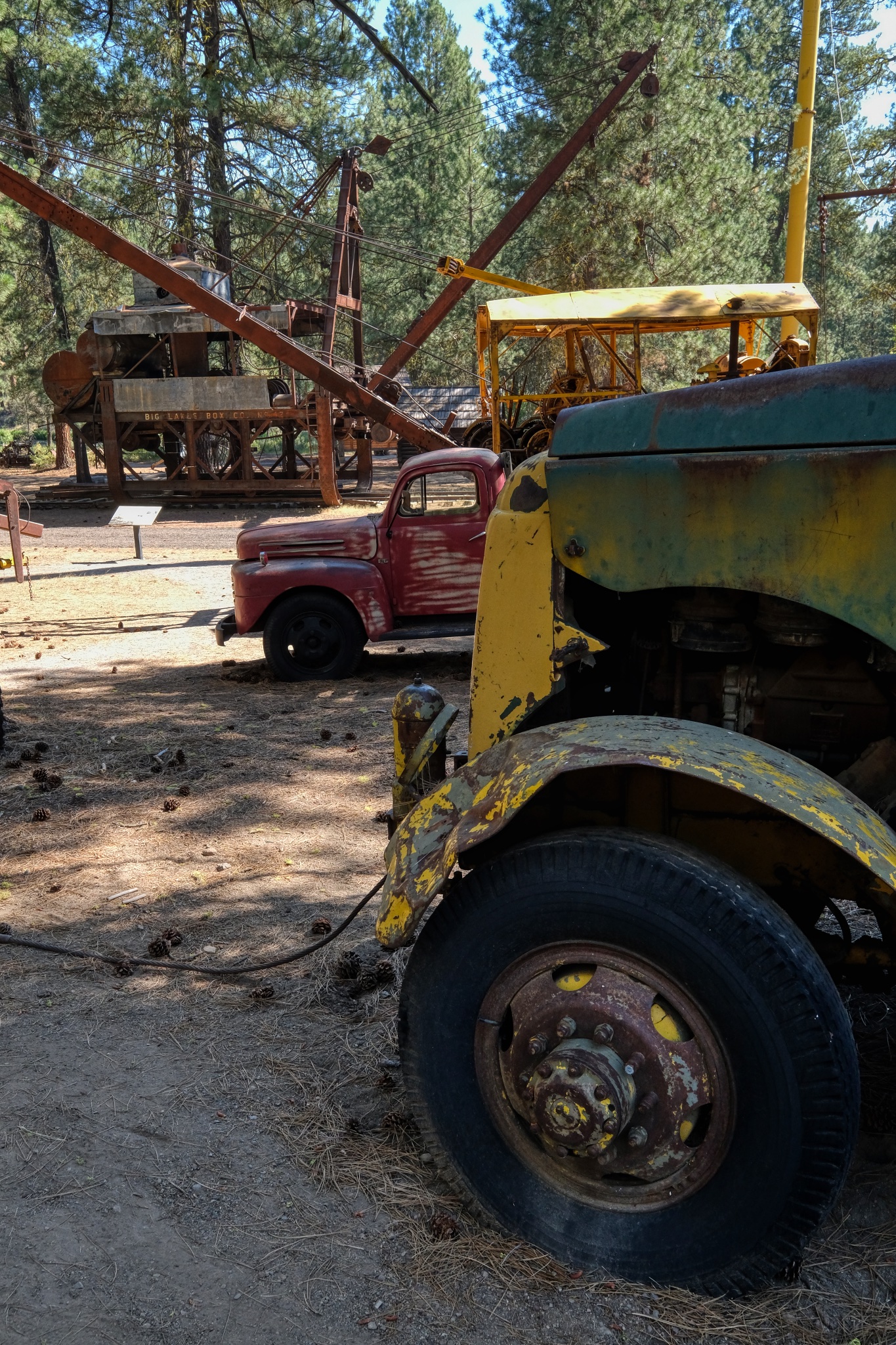 Old log trucks and log loaders to satisfy my little heart's content!
Old log trucks and log loaders to satisfy my little heart's content!
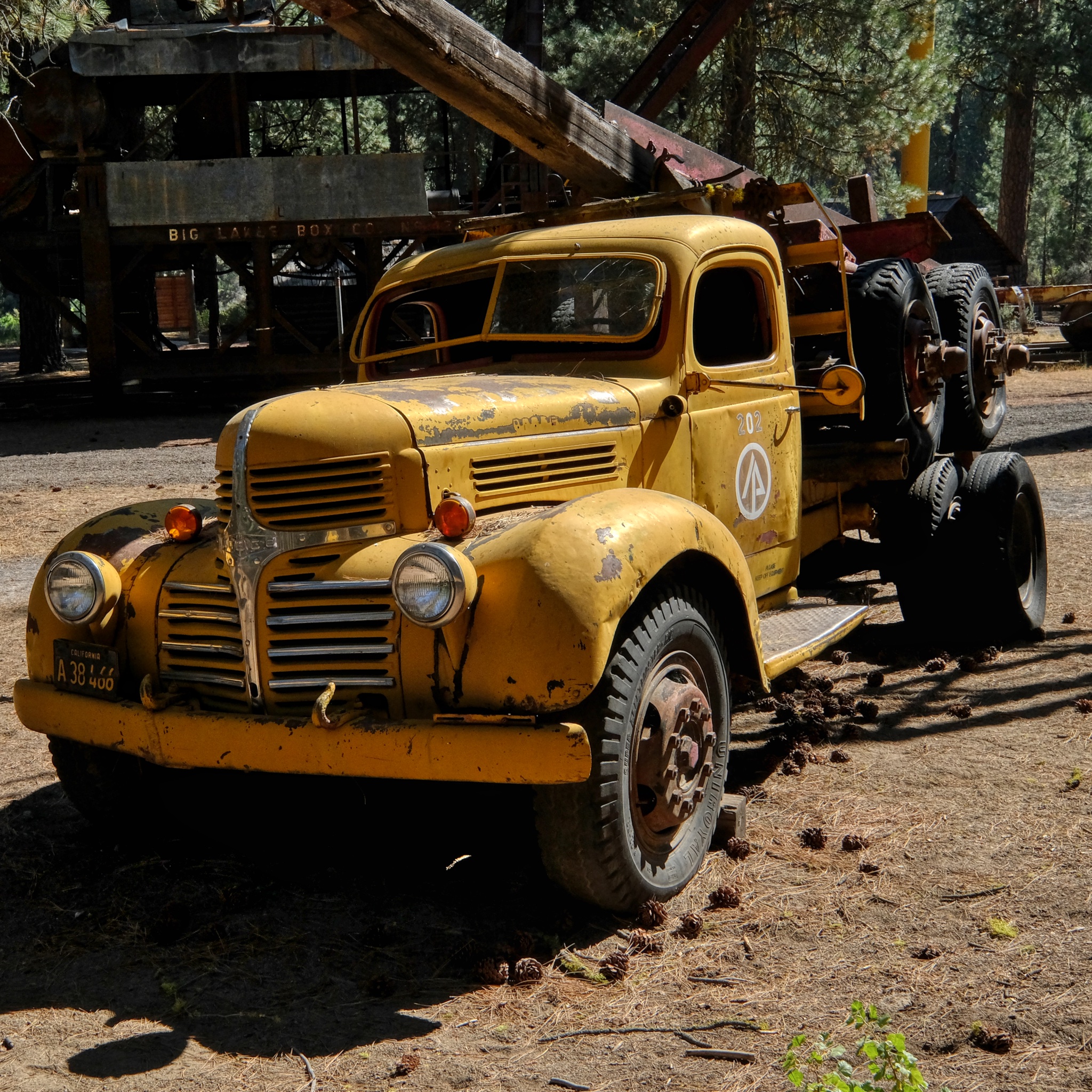 Much of the lumber used to build the houses on the west coast of the USA rode to the lumber mills on trucks like these.
Much of the lumber used to build the houses on the west coast of the USA rode to the lumber mills on trucks like these.
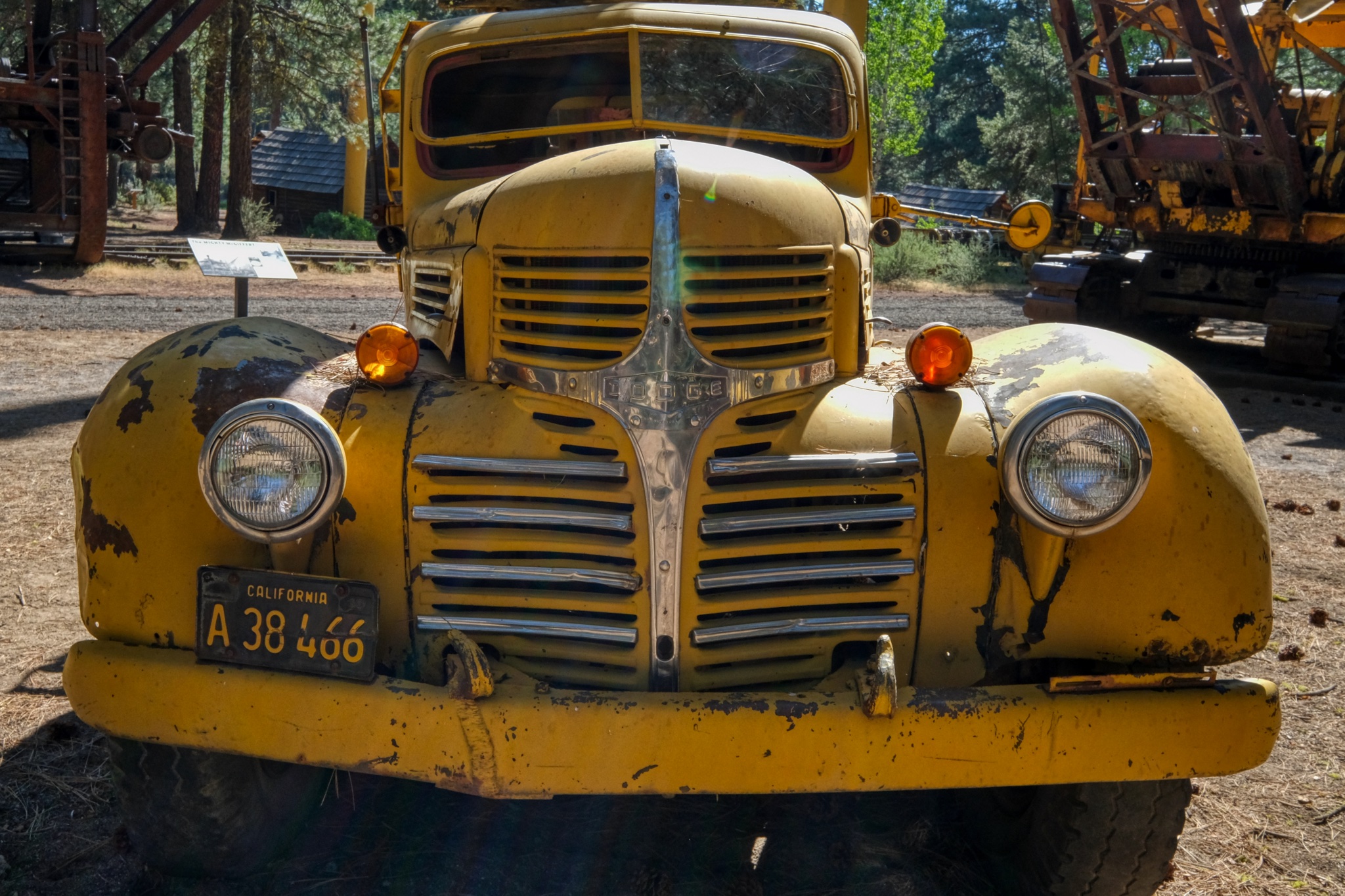 Not something you would want to see in your rear view mirror while going down a steep hill!
Not something you would want to see in your rear view mirror while going down a steep hill!
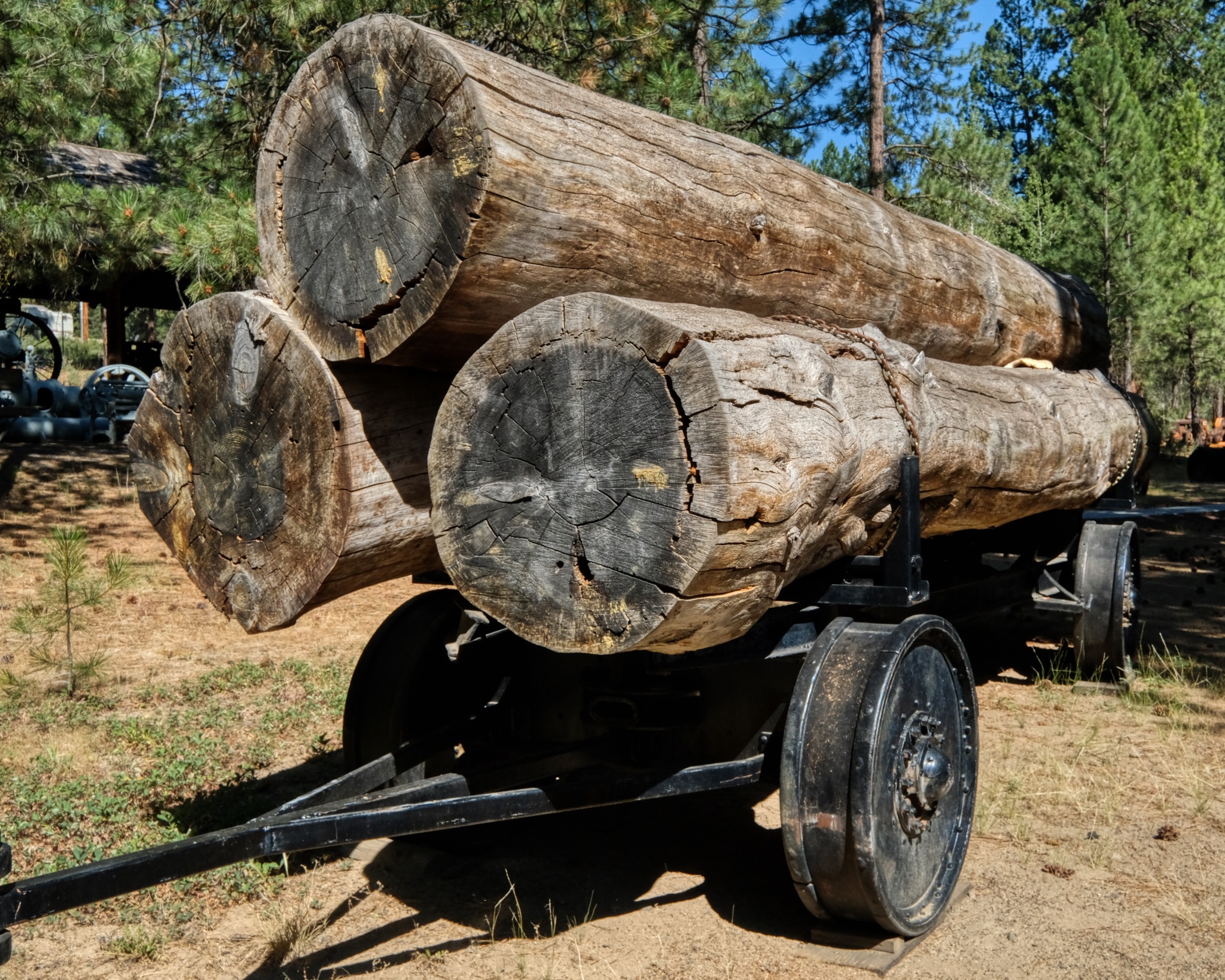 A very old steel-wheeled log trailer.
A very old steel-wheeled log trailer.
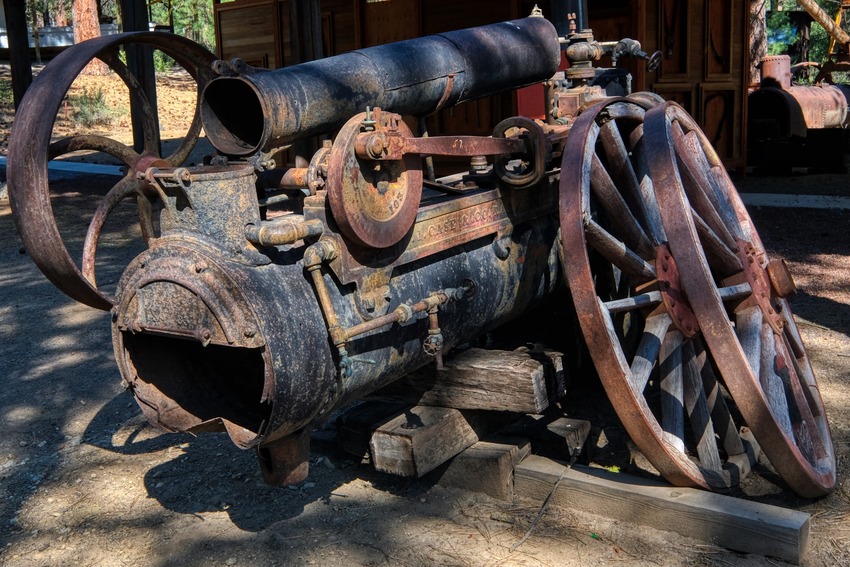 Steam powered pumps used in the wild woods early last century.
Steam powered pumps used in the wild woods early last century.
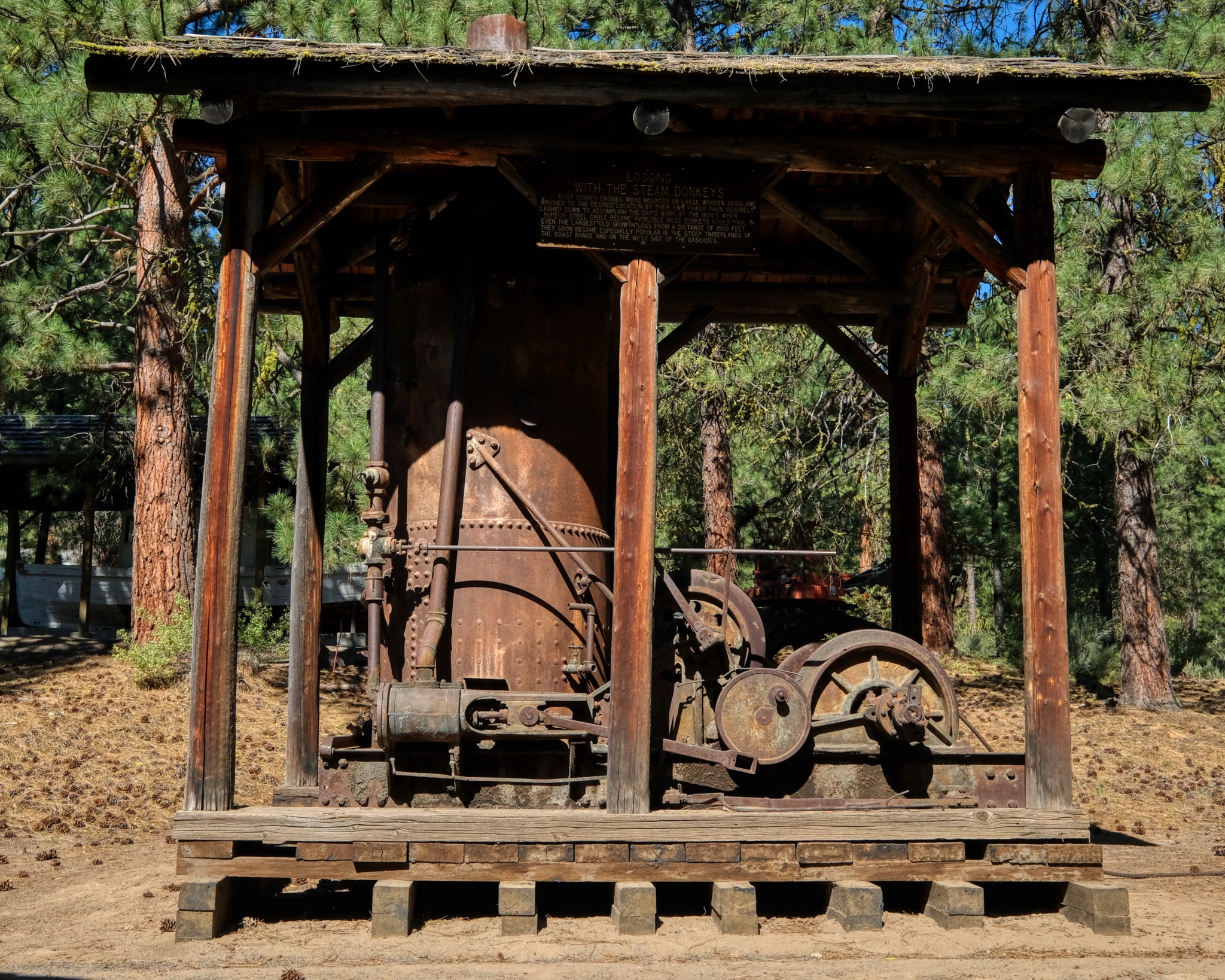 An antique steam powered winch . . .
An antique steam powered winch . . .
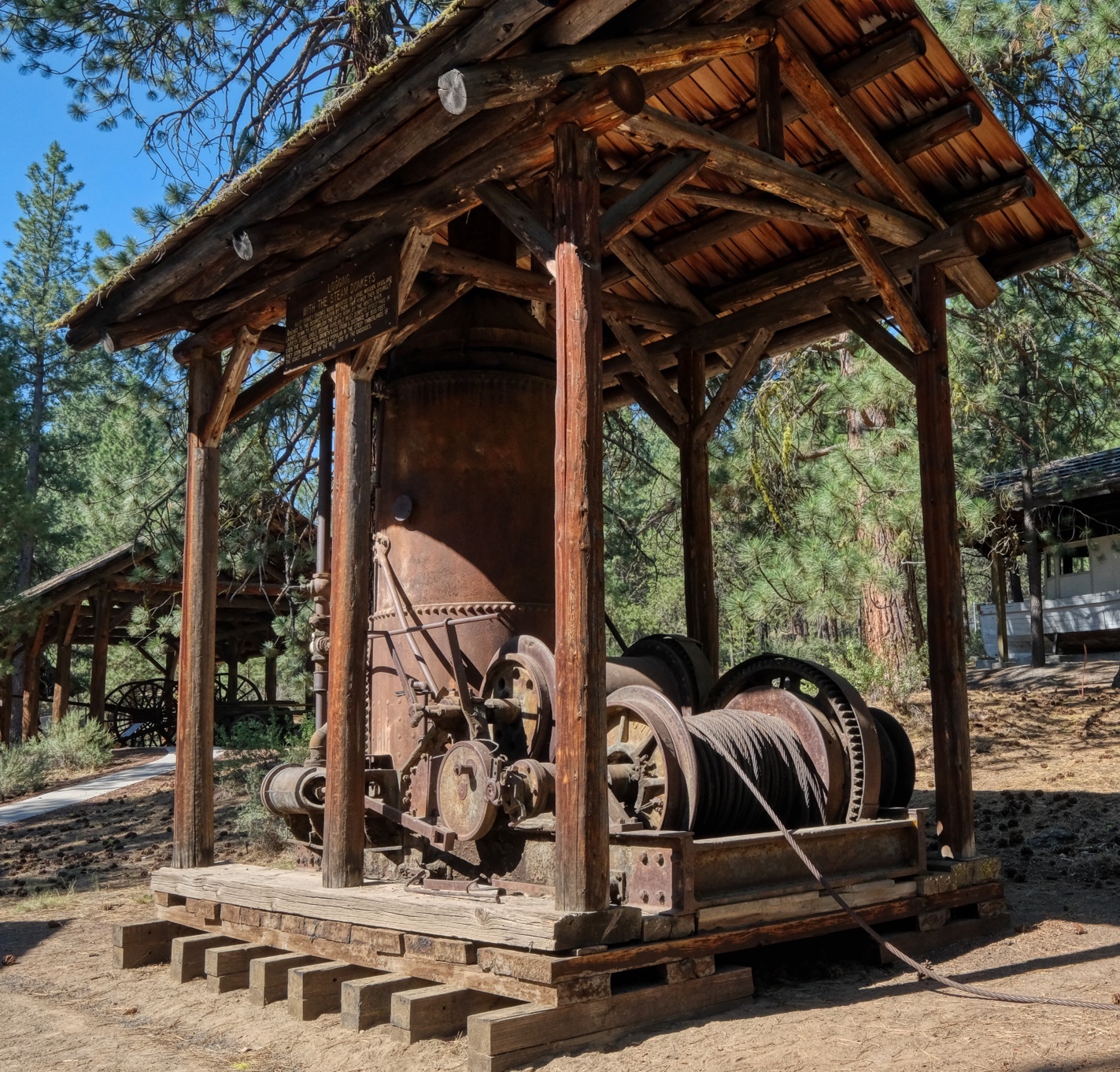 Steam winches mostly used for powering 'high lead' cables to drag logs up steep hills and across deep canyons.
Steam winches mostly used for powering 'high lead' cables to drag logs up steep hills and across deep canyons.
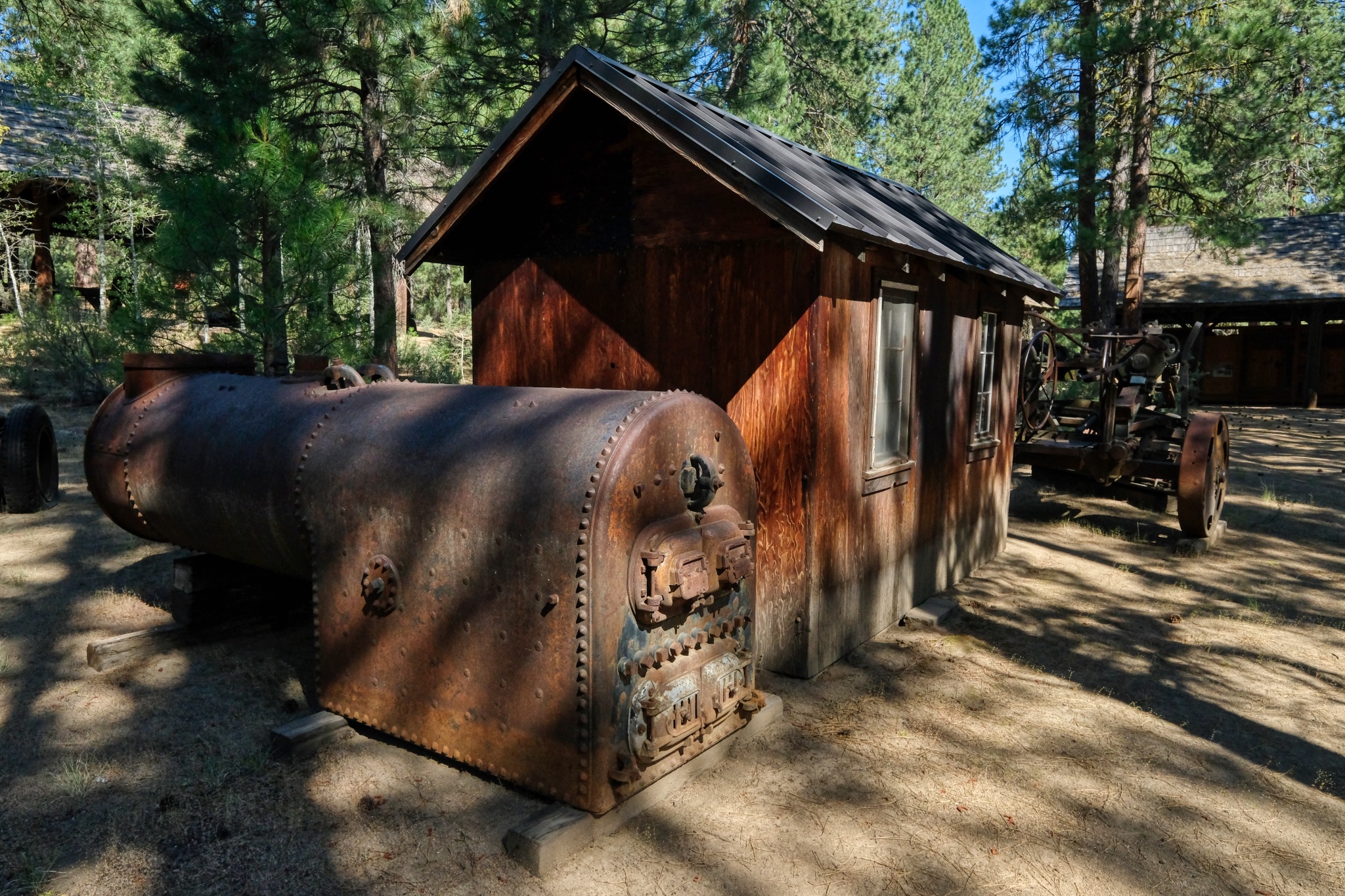 Remnants of big steam power systems laying around. Imagine dragging these up into the woods a century ago!
Remnants of big steam power systems laying around. Imagine dragging these up into the woods a century ago!
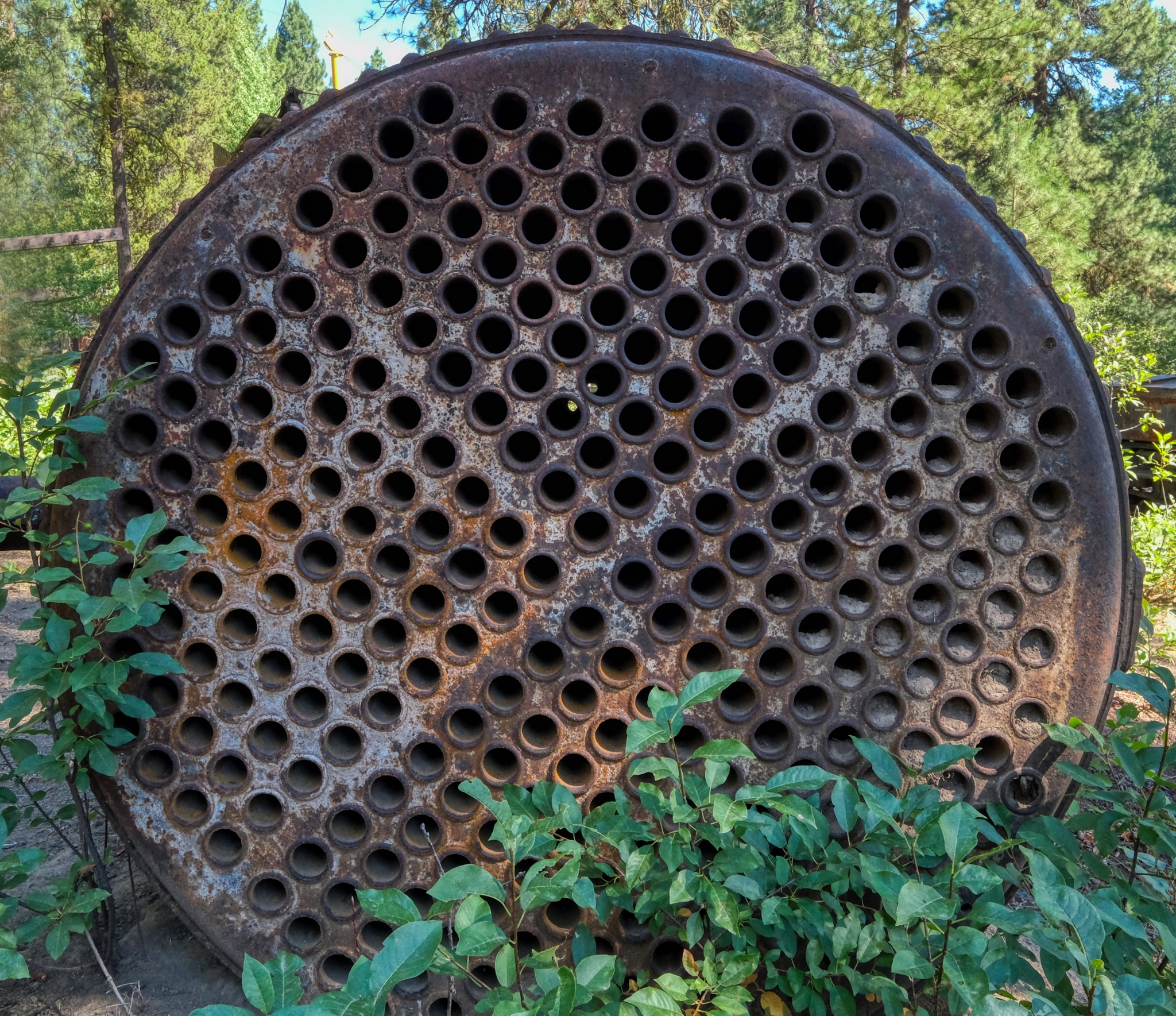 Boiler tubes.
Boiler tubes.
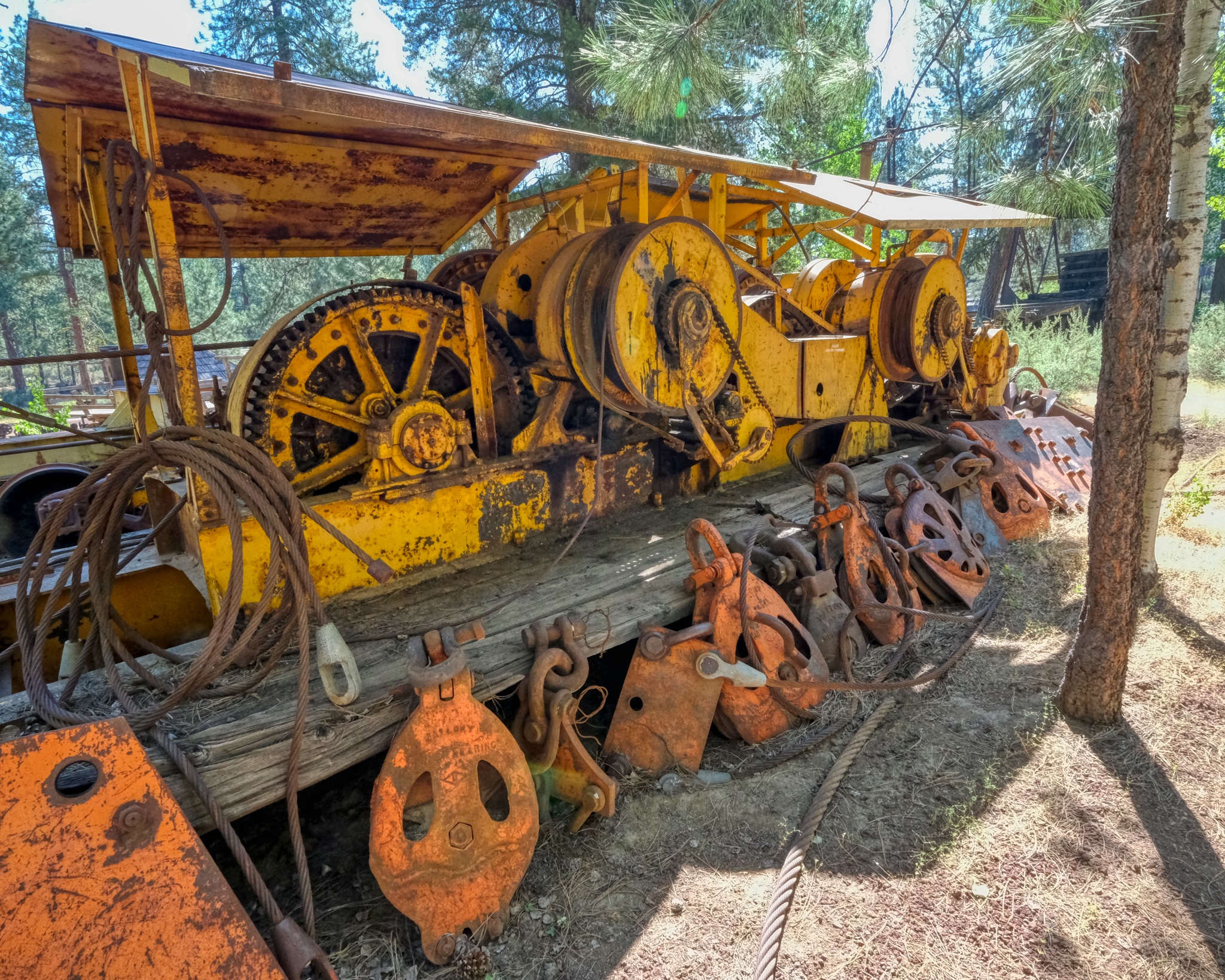 Big sled winch used for high lead logging. Nice rigging blocks.
Big sled winch used for high lead logging. Nice rigging blocks.
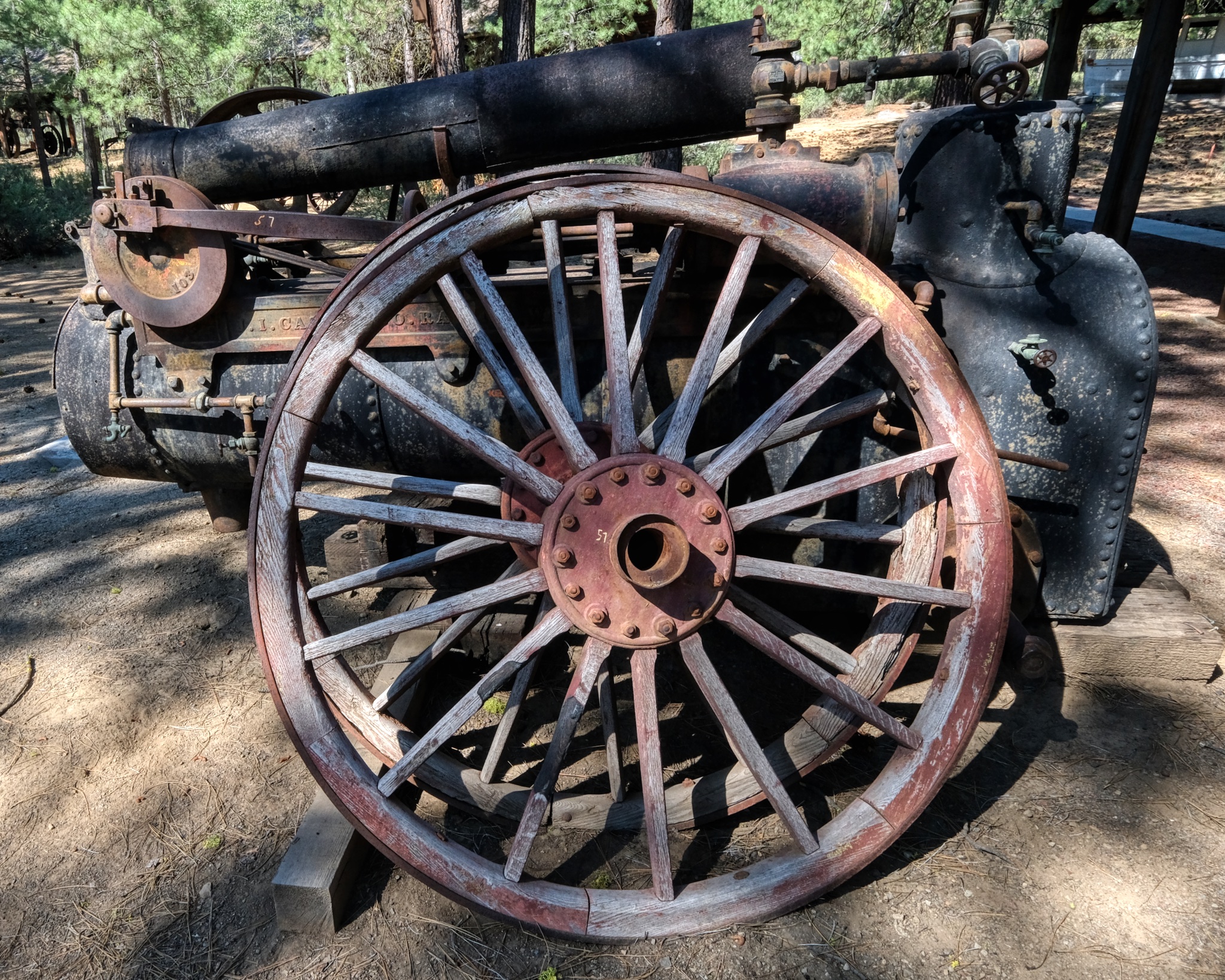 Wheeled steam pump wagon.
Wheeled steam pump wagon.
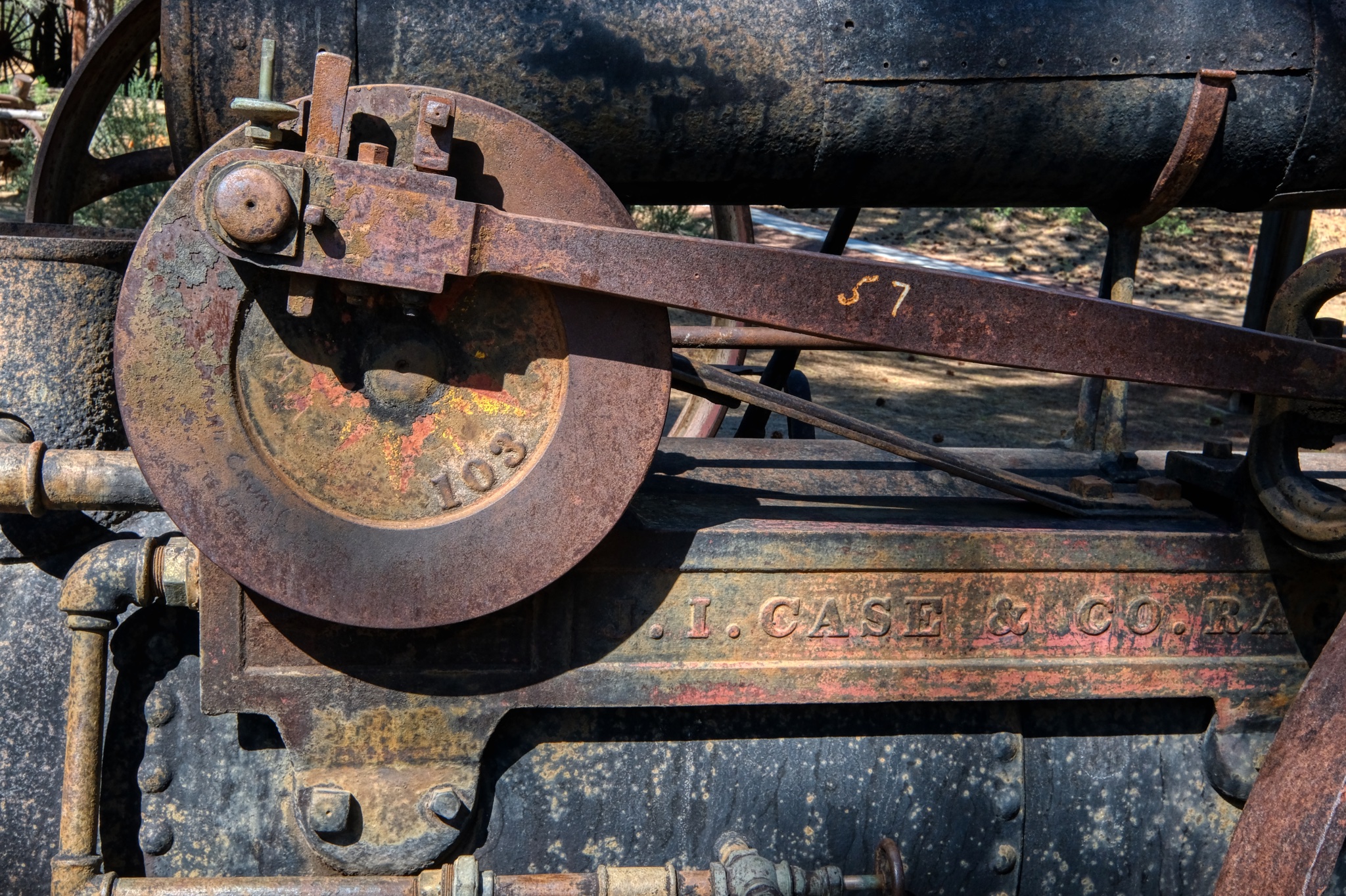 Marvelous machine work from a bygone era.
Marvelous machine work from a bygone era.
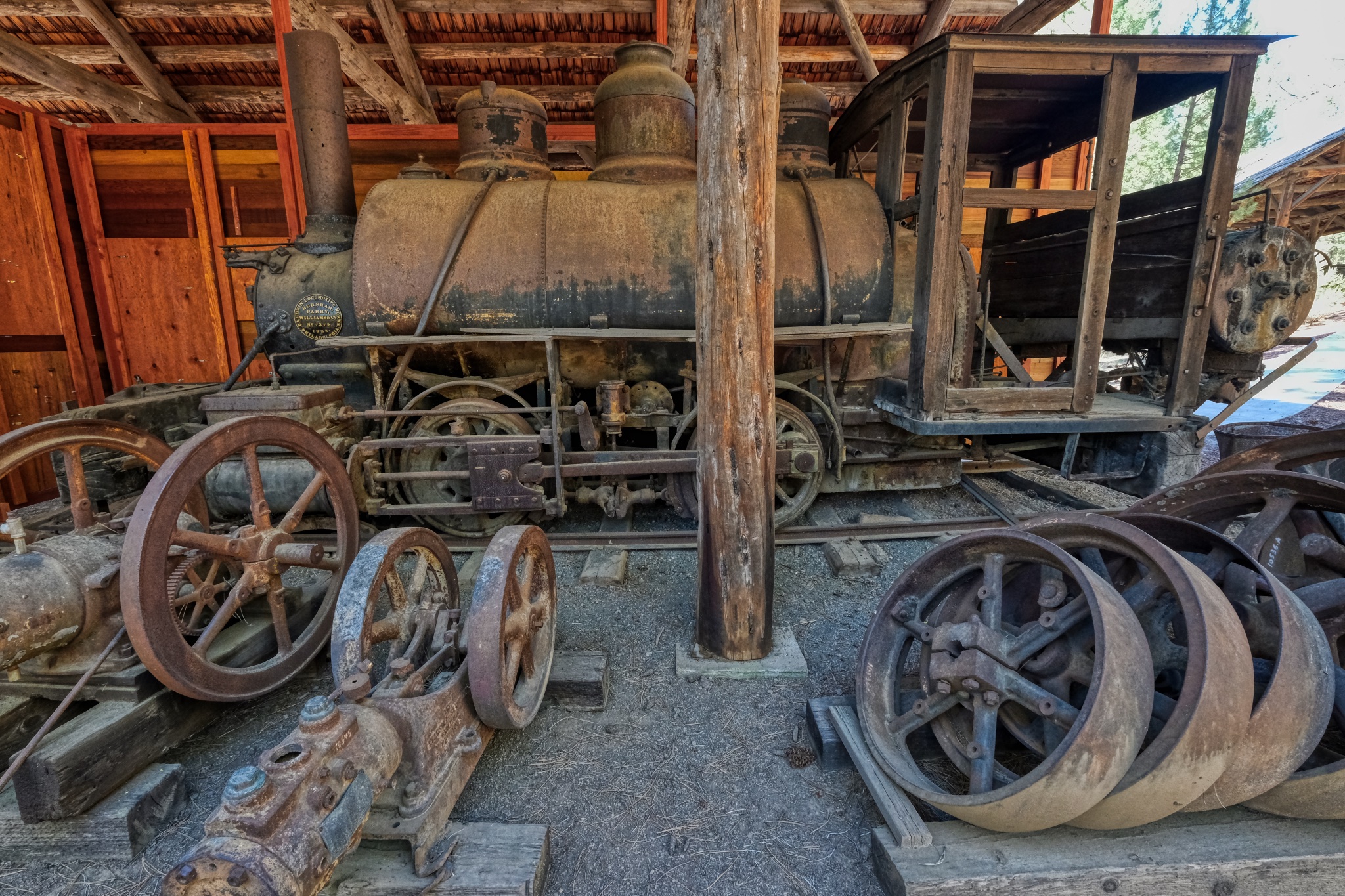 1880s locomotive shed with lots of old machinery here and there.
1880s locomotive shed with lots of old machinery here and there.
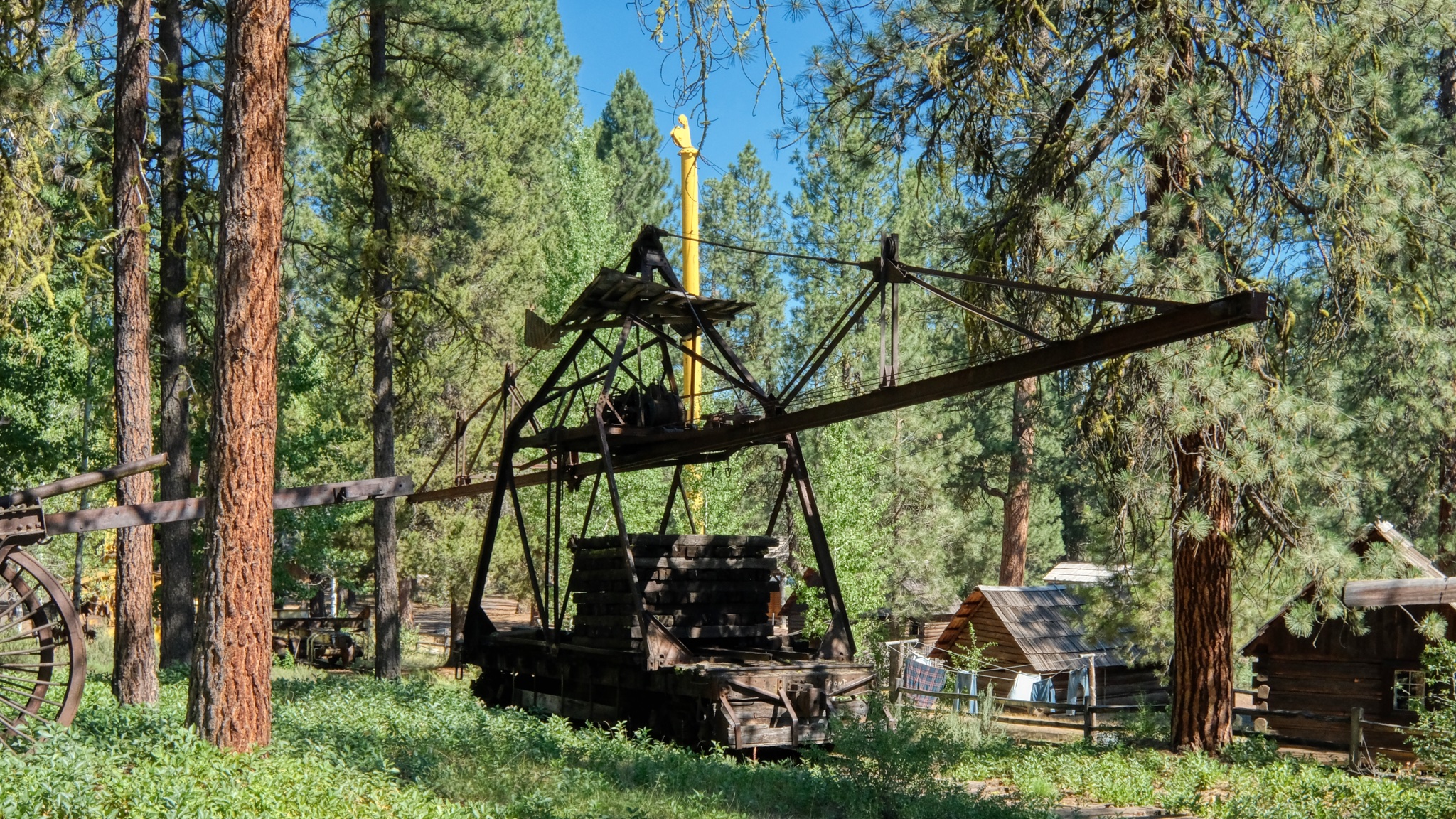 A rail track-laying crane needed to build access rail lines into the old forests.
A rail track-laying crane needed to build access rail lines into the old forests.
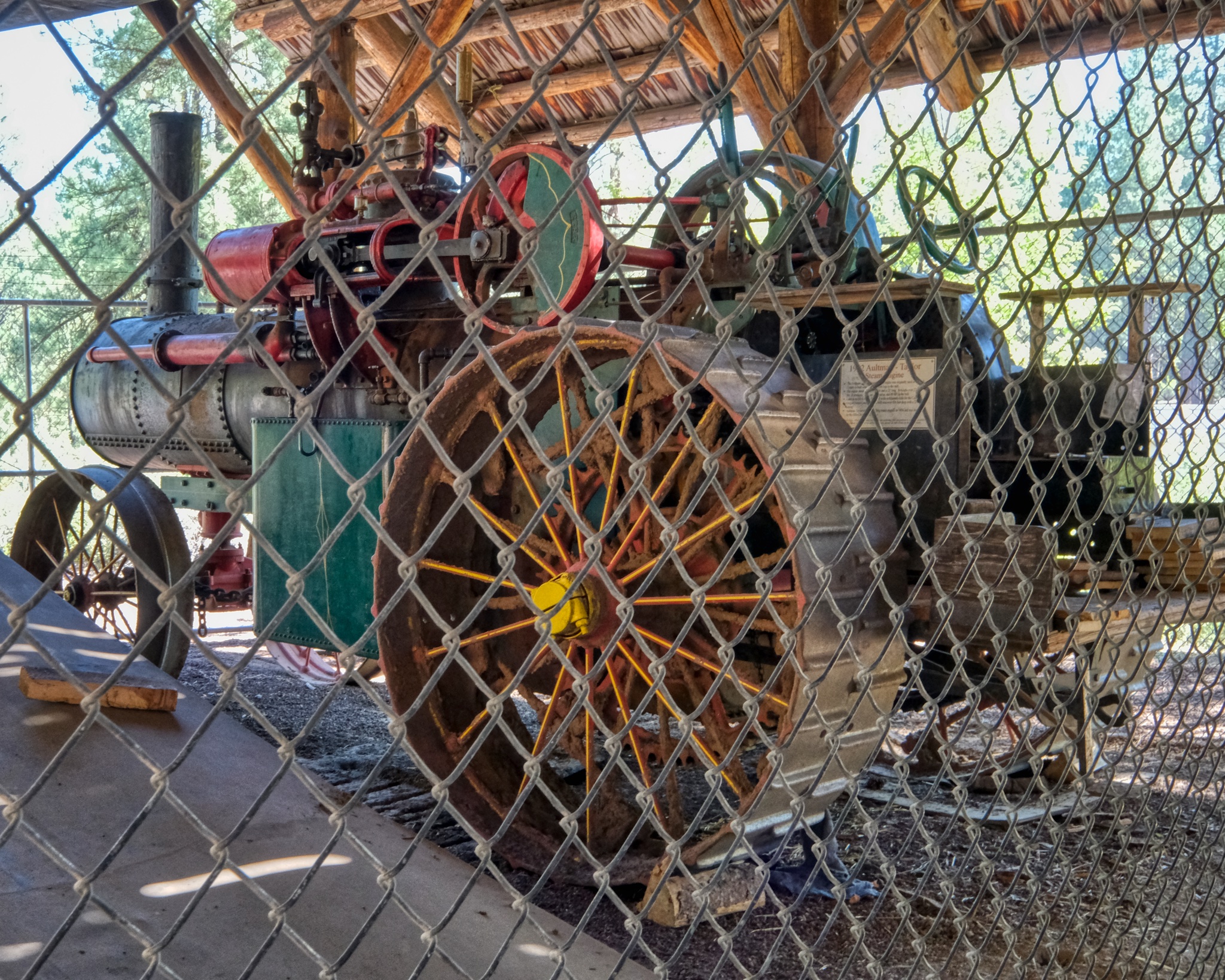 1912 Aultman-Taylor steam engine . . . WOW!
1912 Aultman-Taylor steam engine . . . WOW!
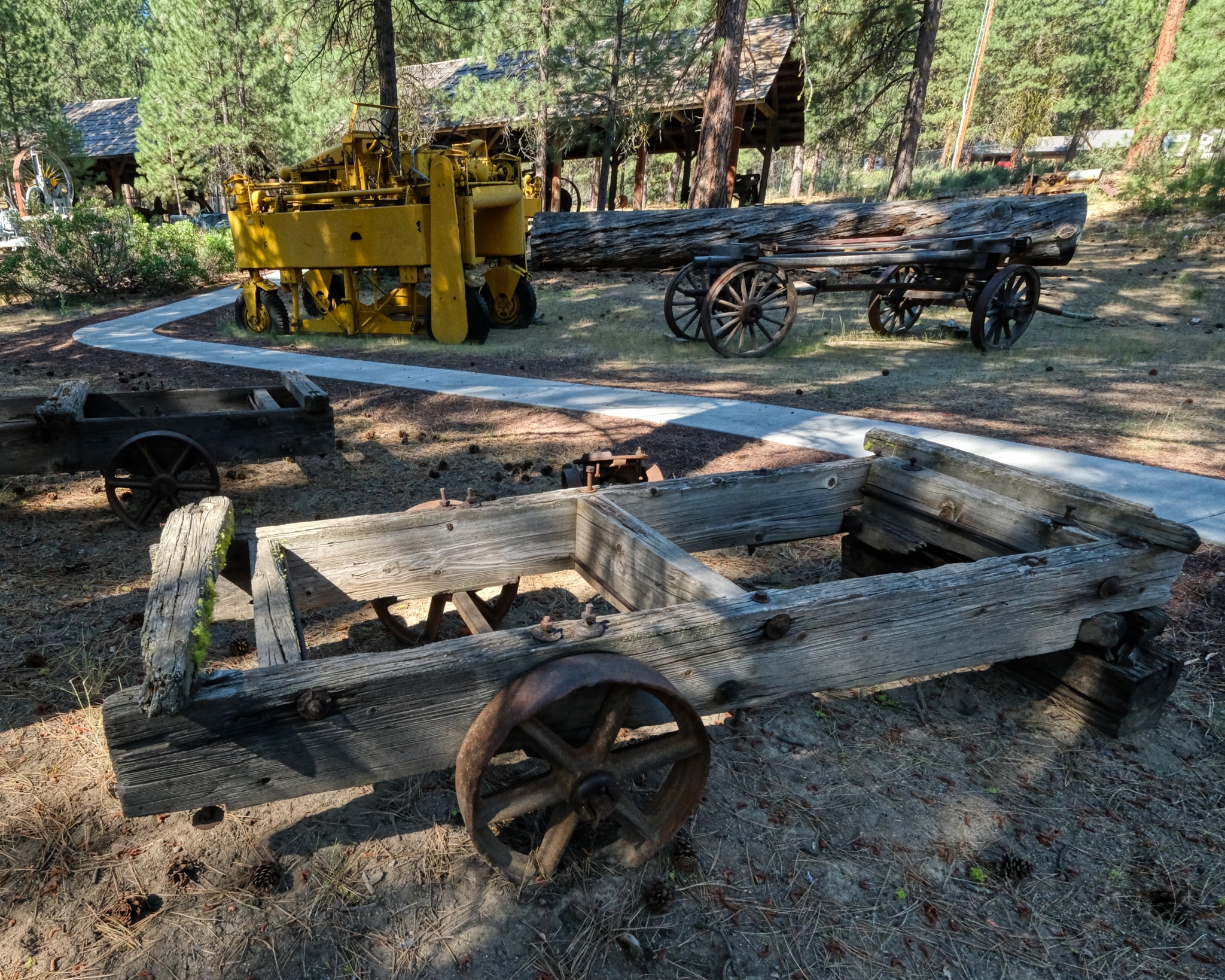 These lumber movers (yellow machine in the back) were still common in Oregon lumber mills in the late 1970s (when I worked in Oregon lumber mills!).
These lumber movers (yellow machine in the back) were still common in Oregon lumber mills in the late 1970s (when I worked in Oregon lumber mills!).
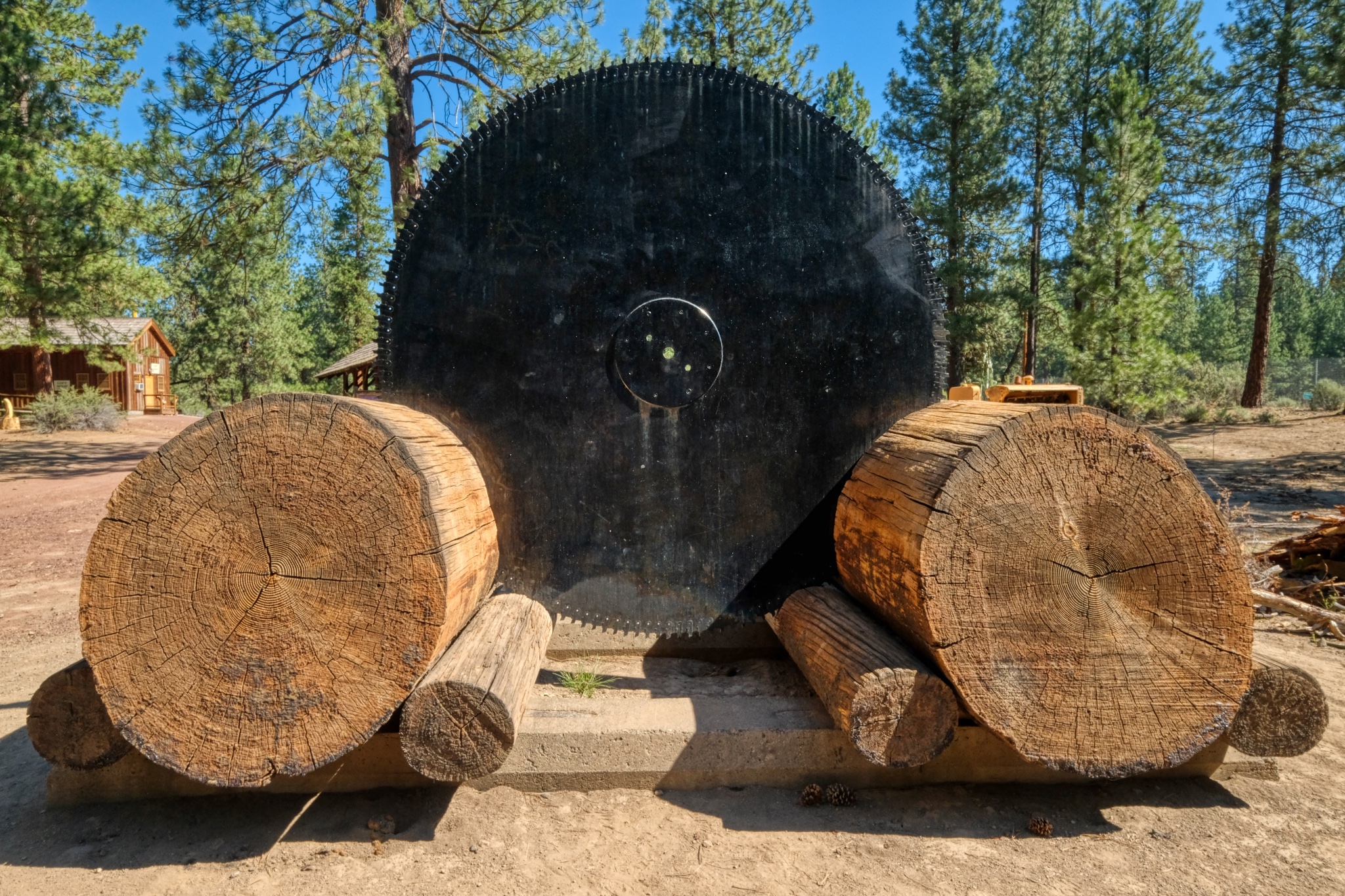 Yep, you need a saw blade ("head saw") this large to cut some of these giant trees in the lumber mill.
Yep, you need a saw blade ("head saw") this large to cut some of these giant trees in the lumber mill.
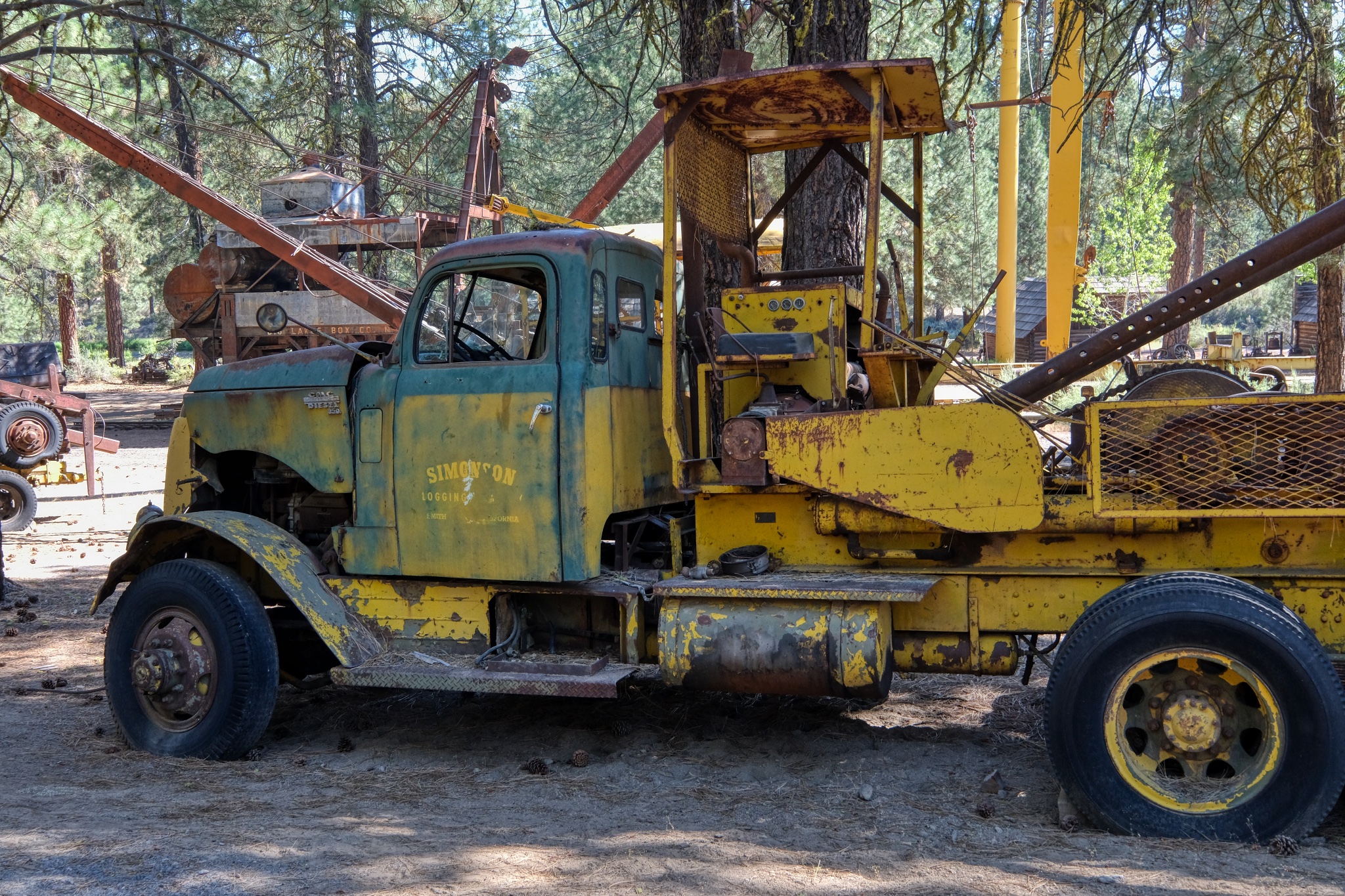 A well used high lead winch truck . . . Simpson Lumber Company.
A well used high lead winch truck . . . Simpson Lumber Company.
ONEY, CALIFORNIA
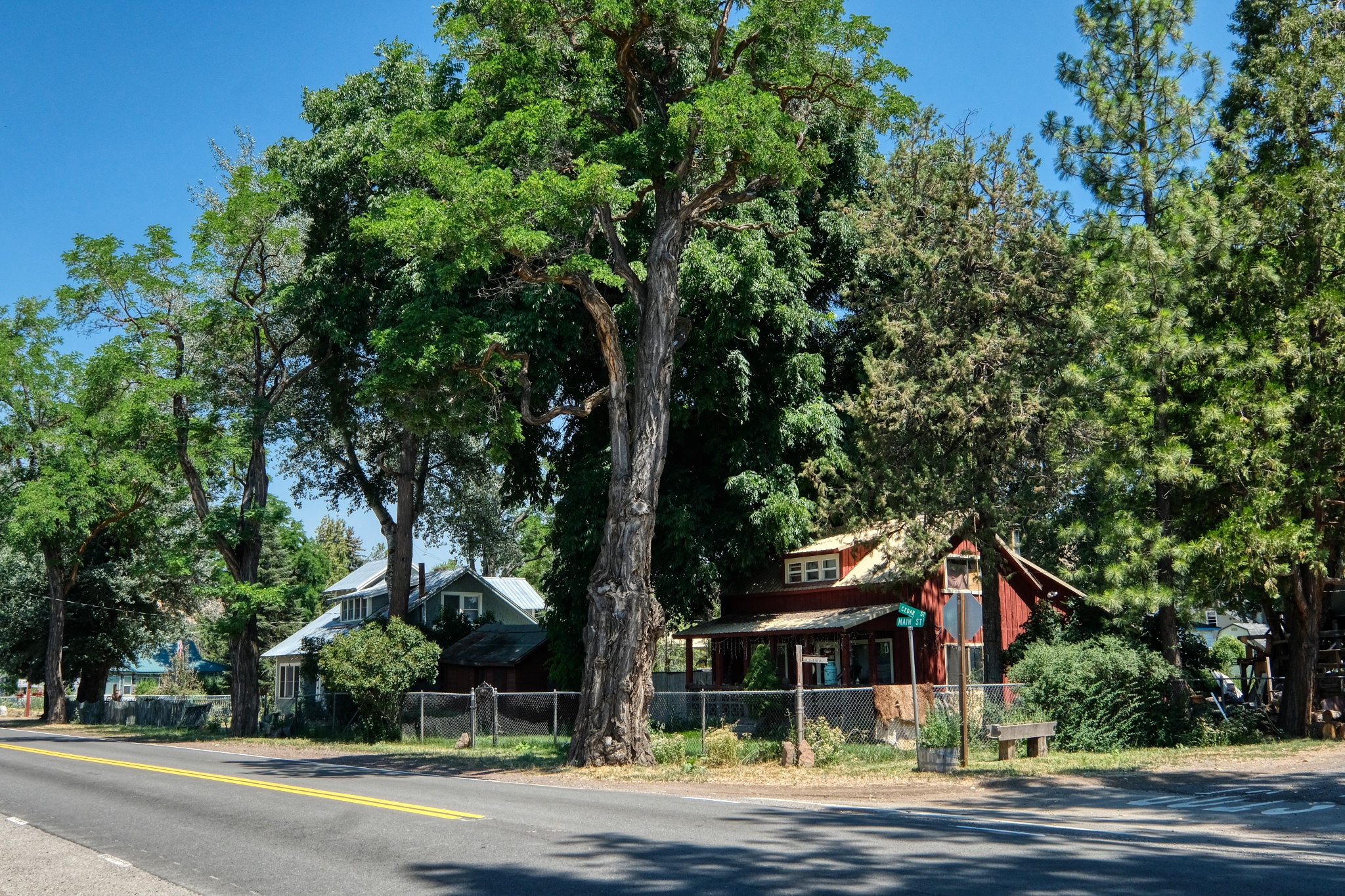 Located in the extreme northeast corner of California, Oney is a beautiful place . . . but the winters must be severe in such an isolated place.
Located in the extreme northeast corner of California, Oney is a beautiful place . . . but the winters must be severe in such an isolated place.
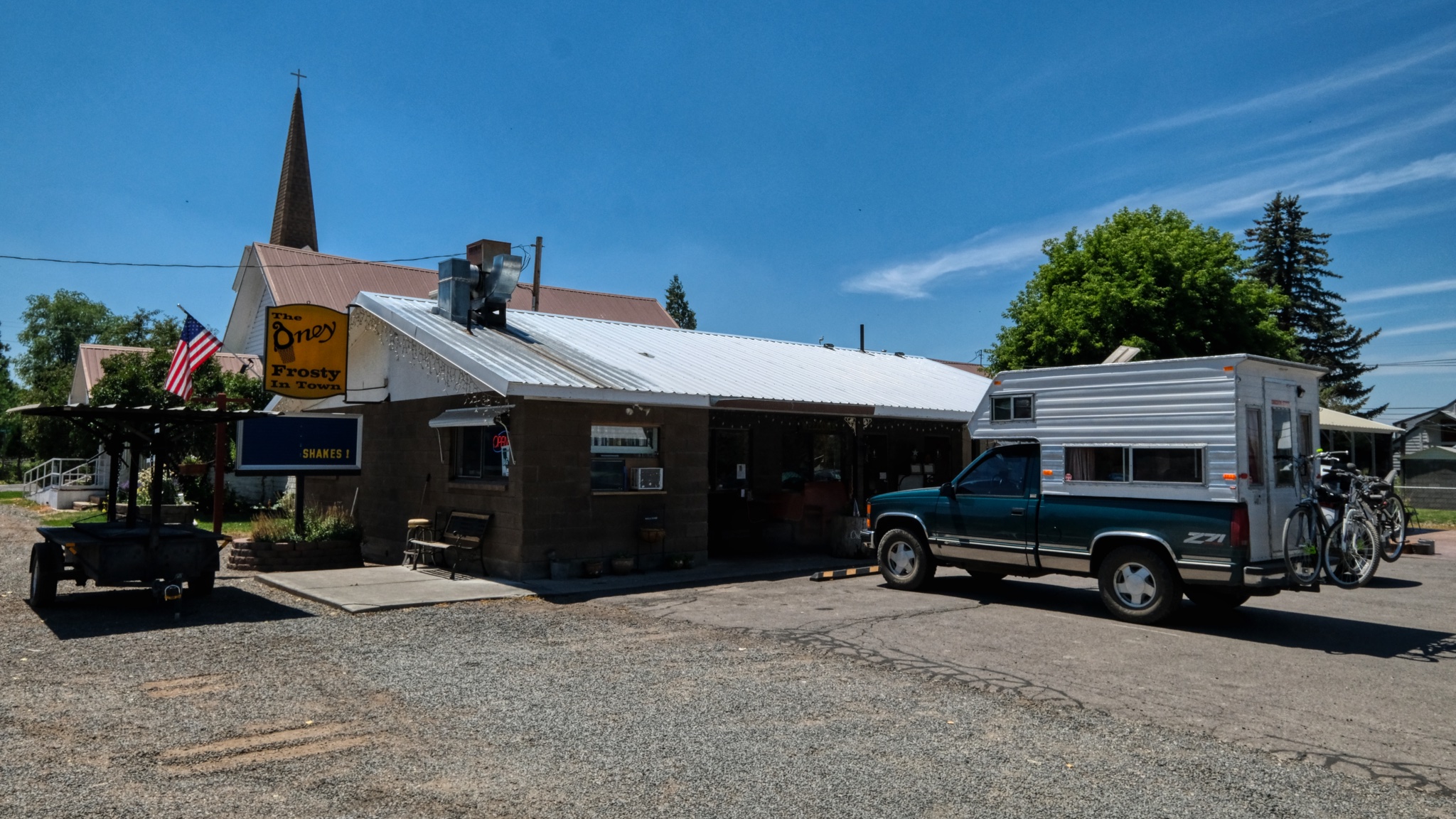 "The Oney Frosty In Town". -- in Oney, California. After driving a long stretch on winding two-lane mountain roads from Klamath Falls, Oregon, the Frosty was a welcome sight.
"The Oney Frosty In Town". -- in Oney, California. After driving a long stretch on winding two-lane mountain roads from Klamath Falls, Oregon, the Frosty was a welcome sight.
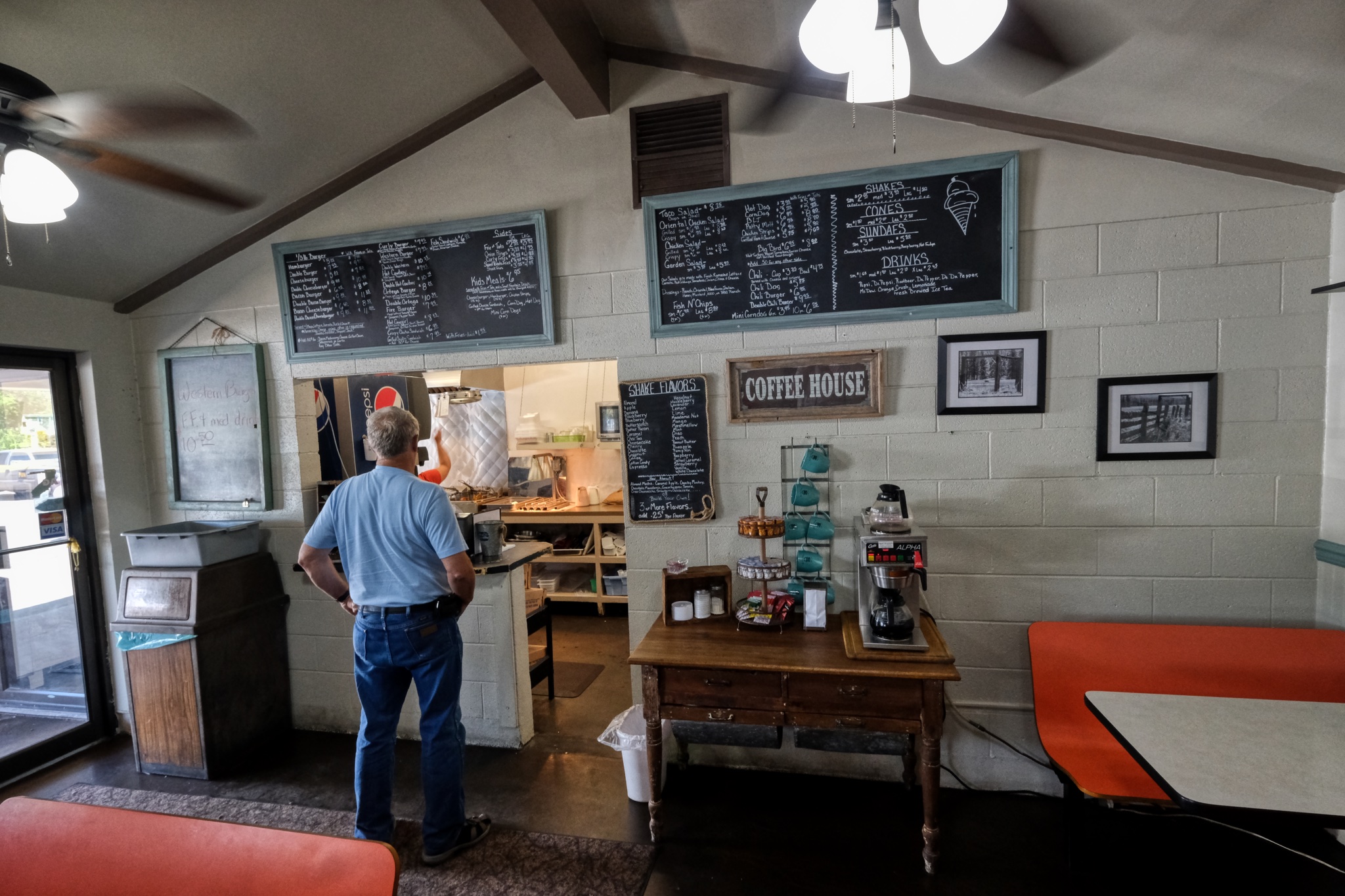 I was not disappointed! The choices were pure Americana . . . and delicious.
I was not disappointed! The choices were pure Americana . . . and delicious.
 Dr. Jeff Harper
Dr. Jeff Harper
Unfortunately, the following year a major forest fire burned all around the Logging Museum . . . . but fortunately, only a few of the antique machines were damaged. The firefighters saved 90% of the collection!
